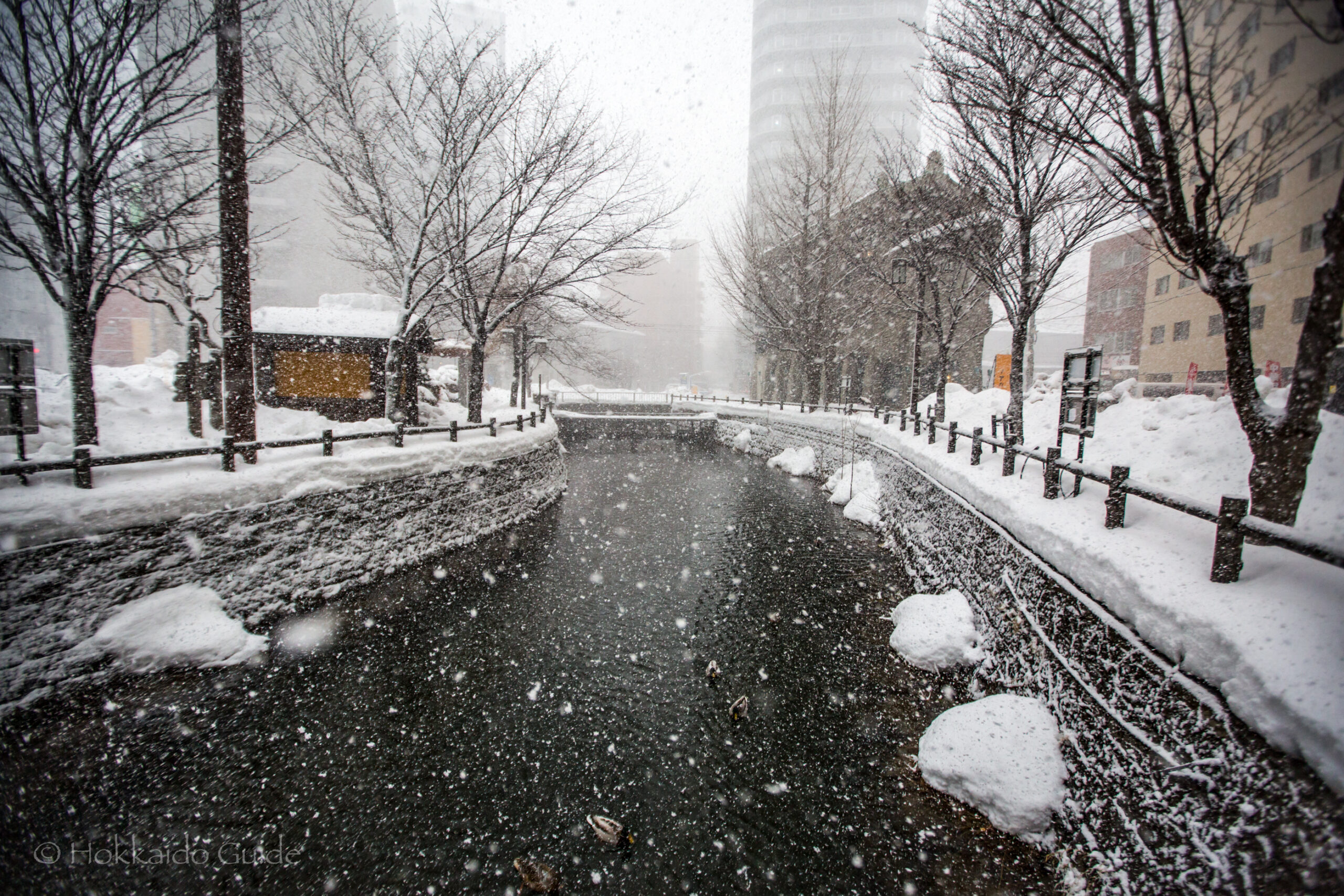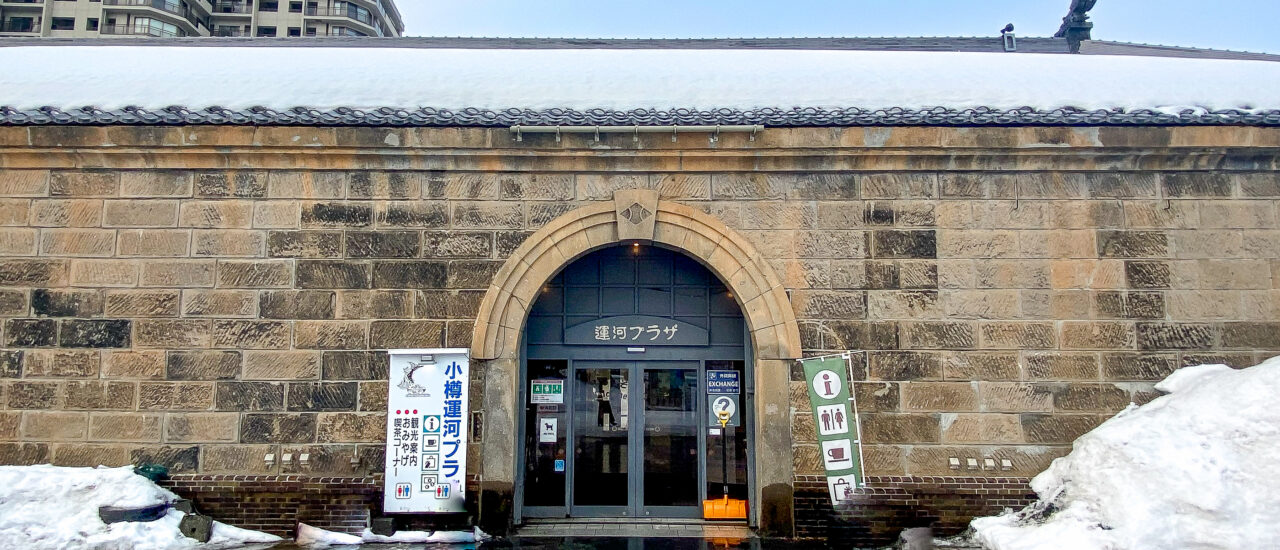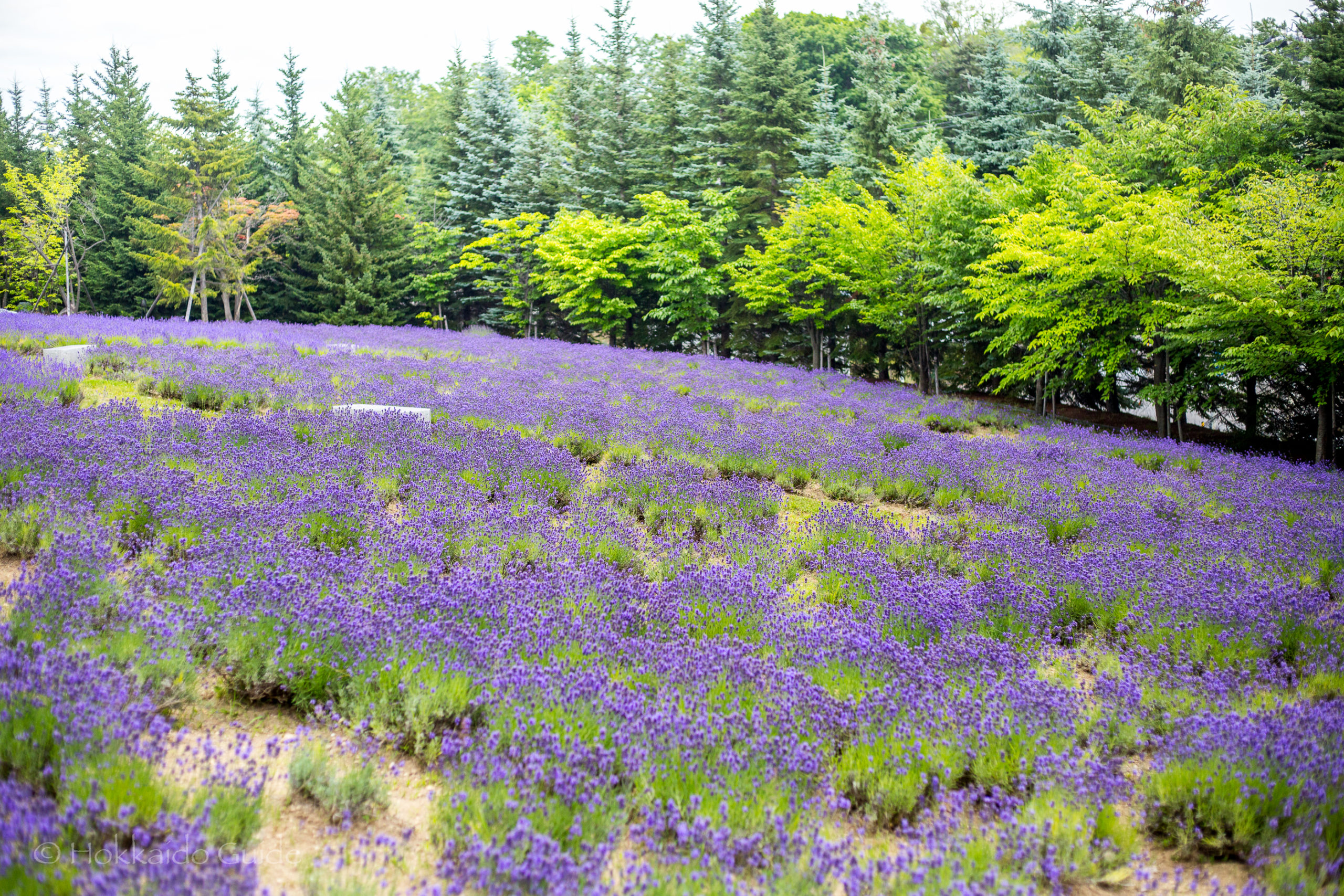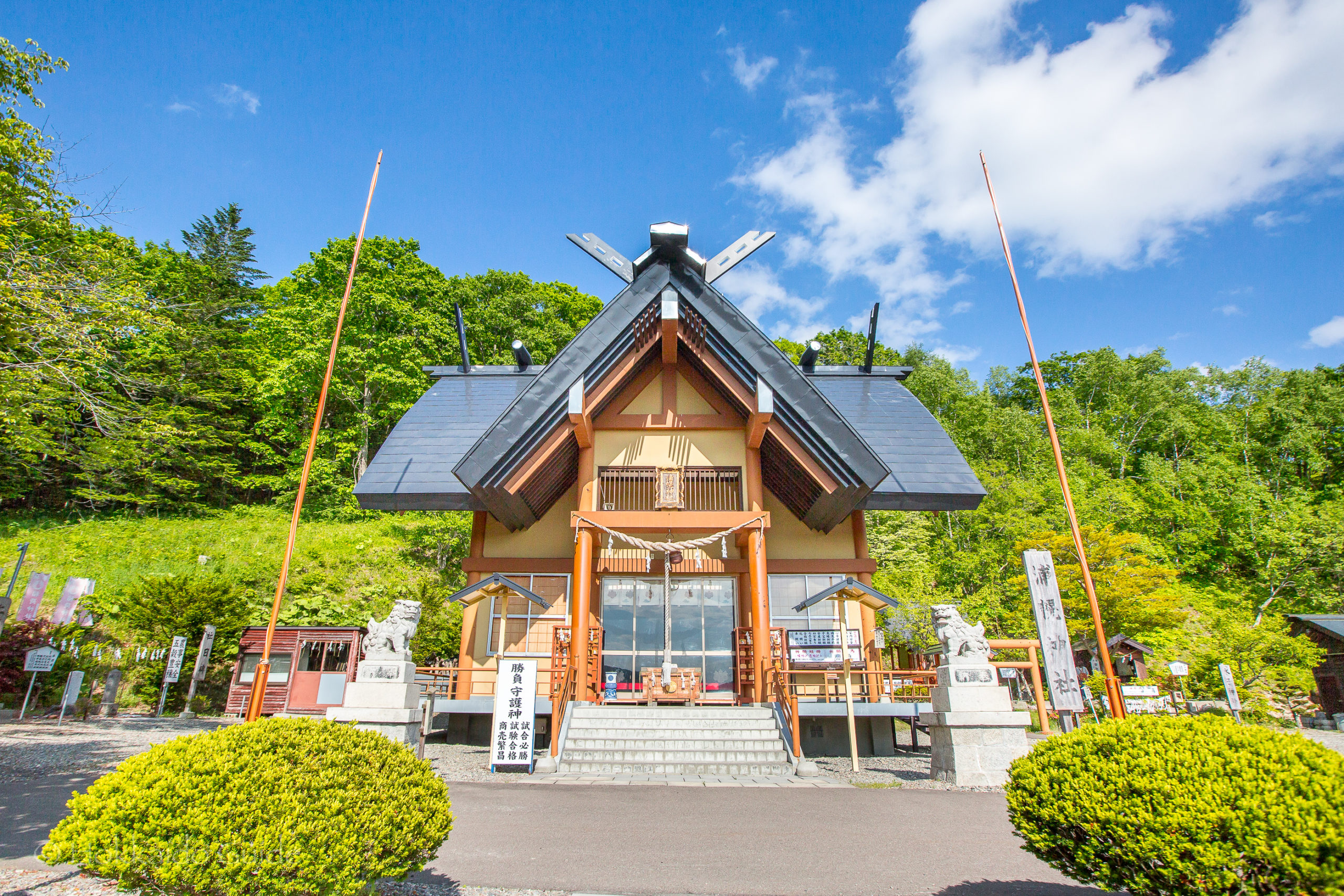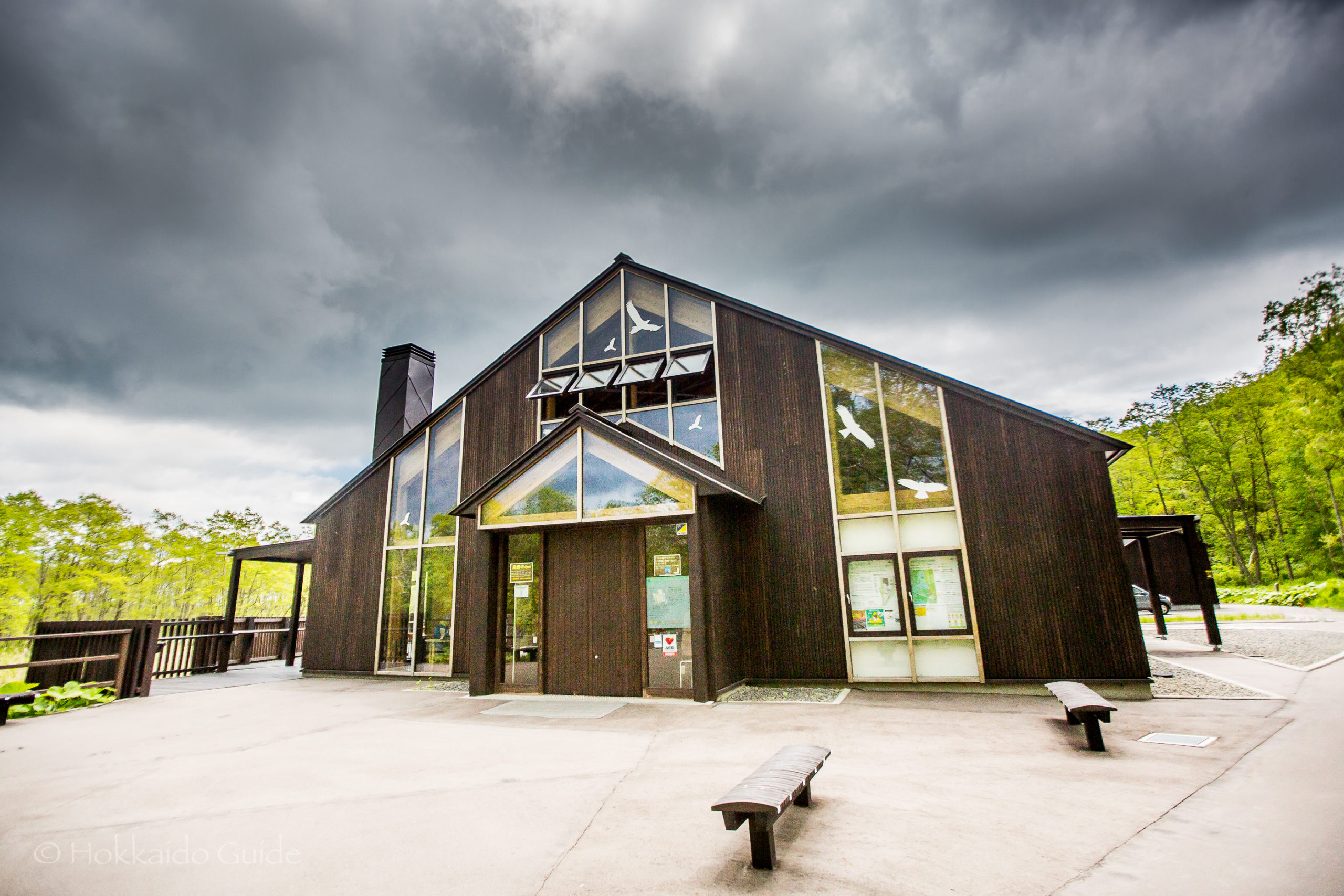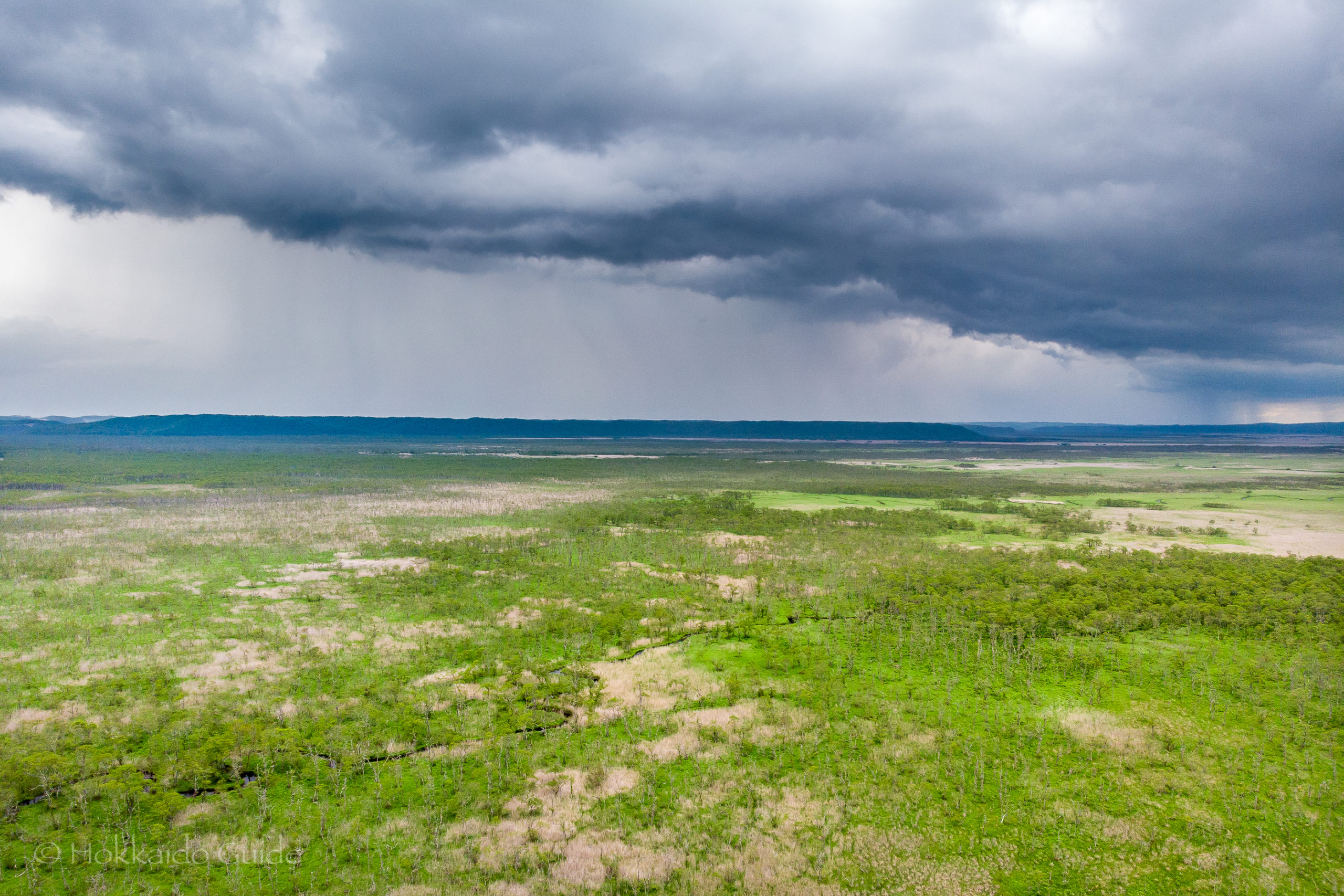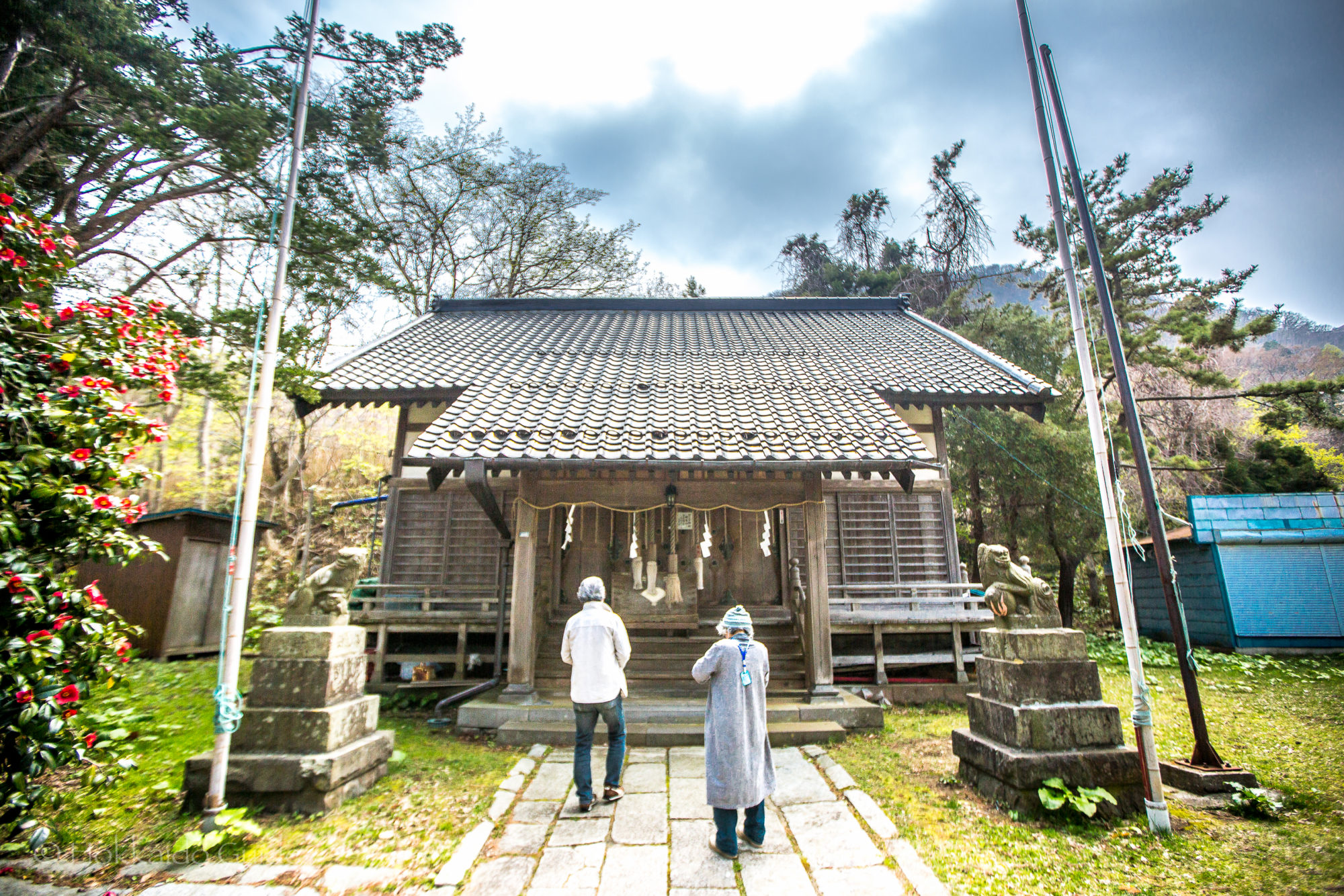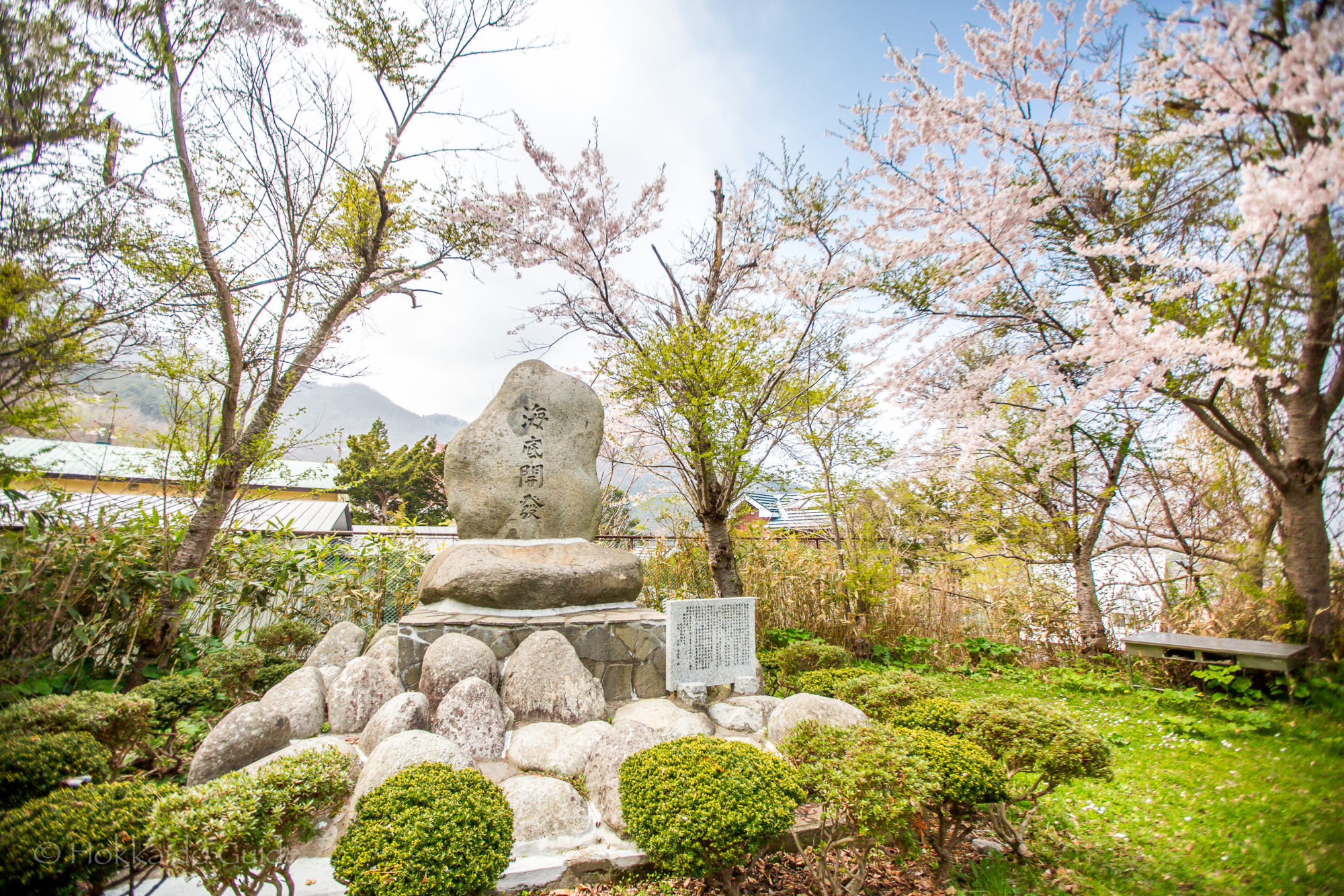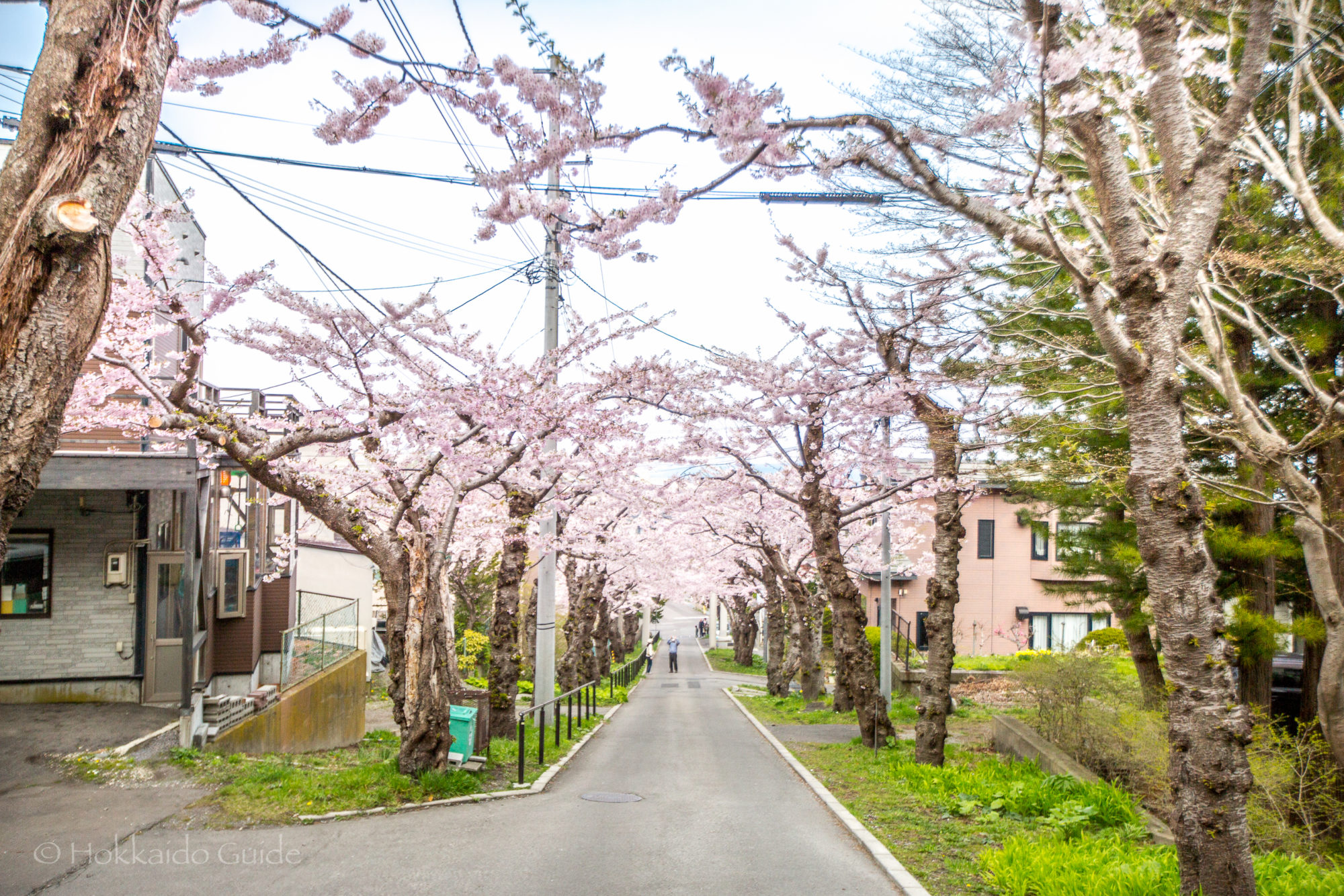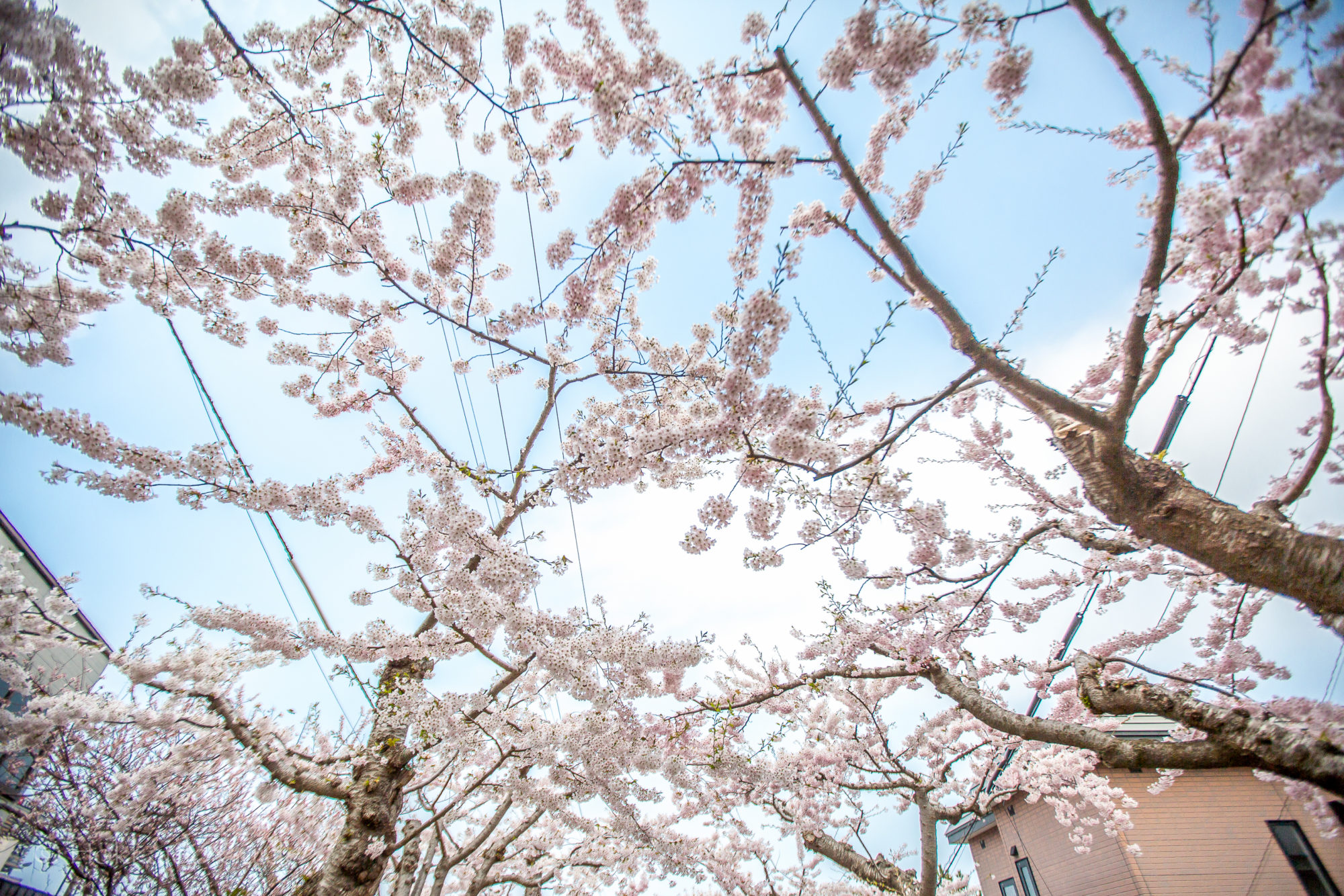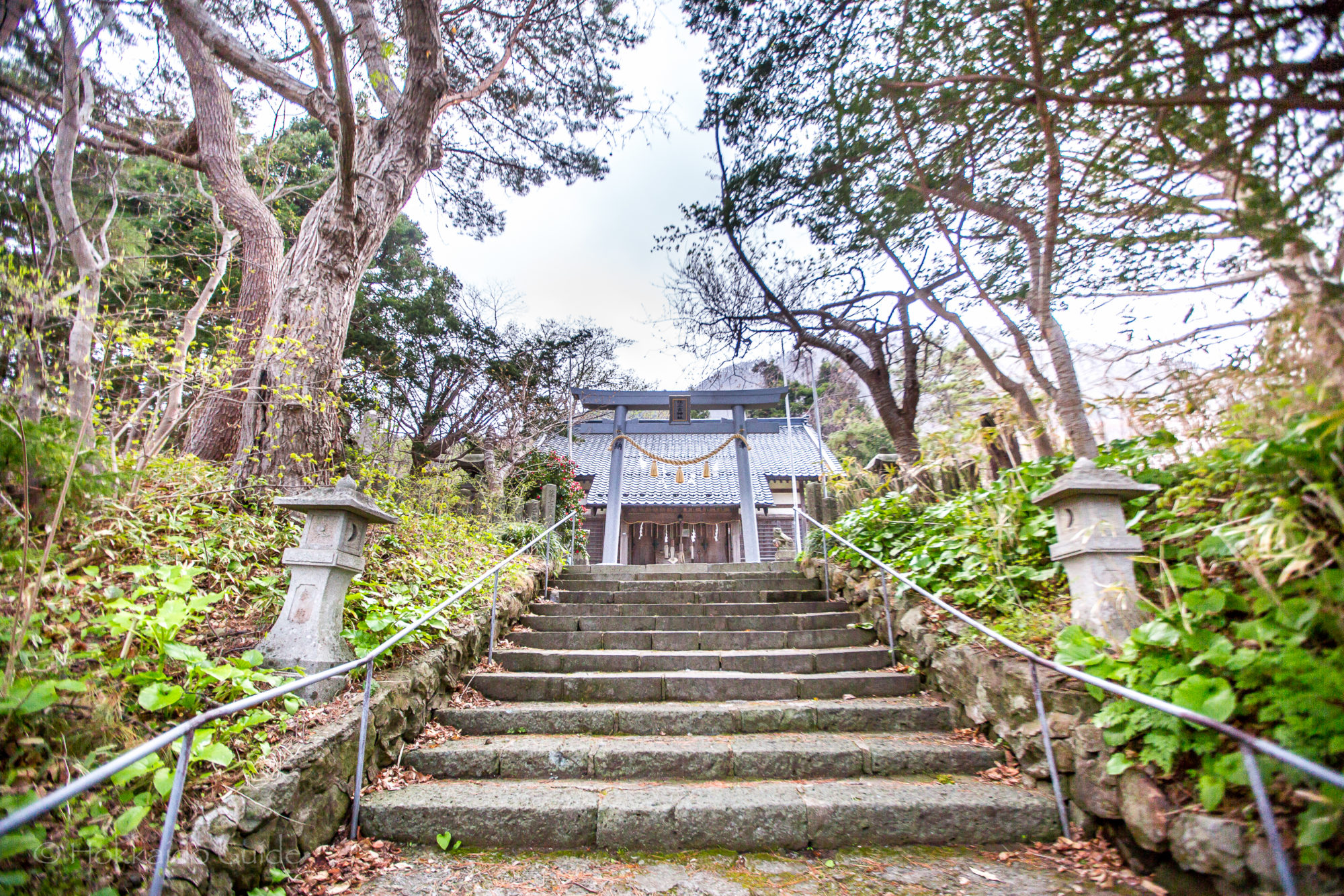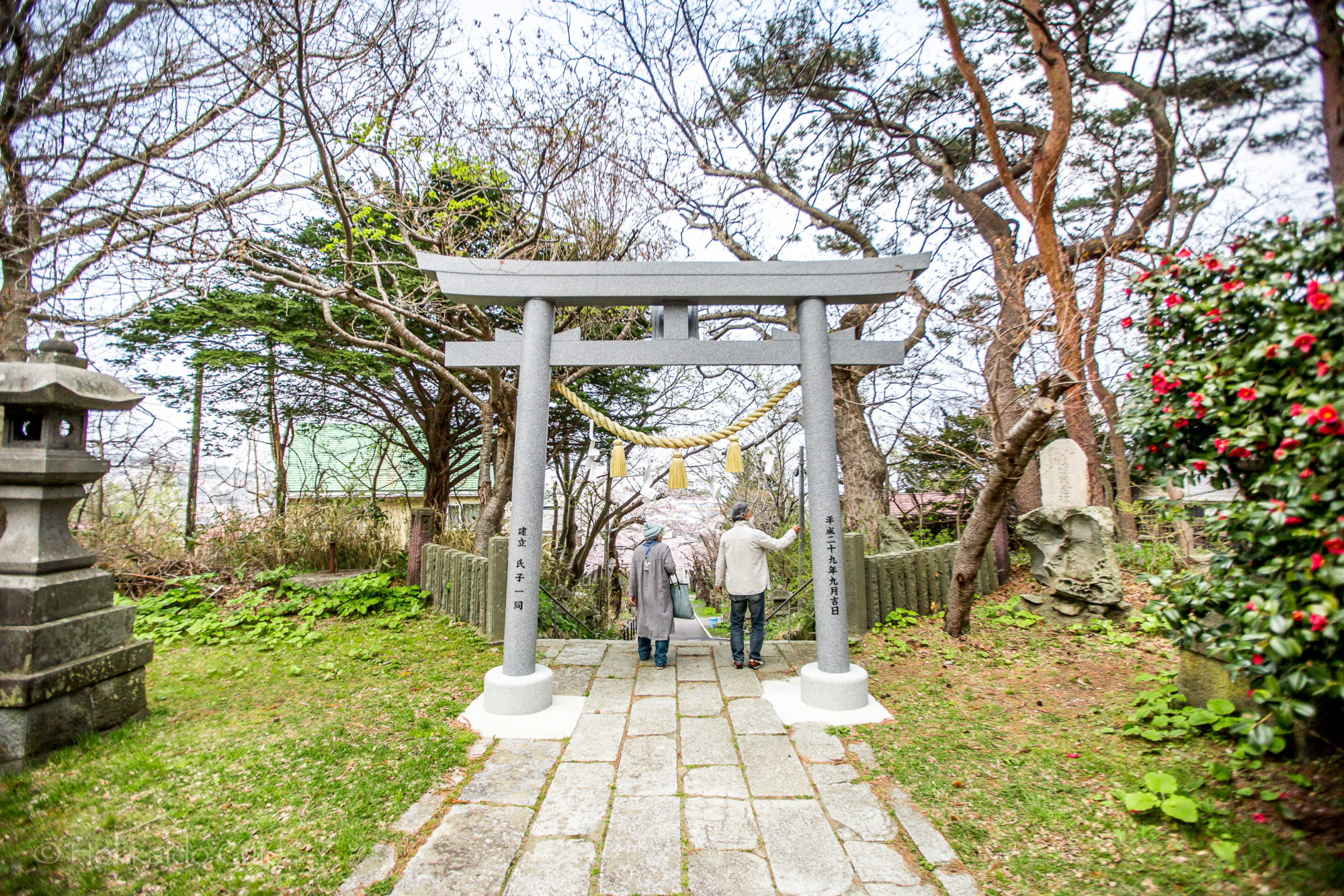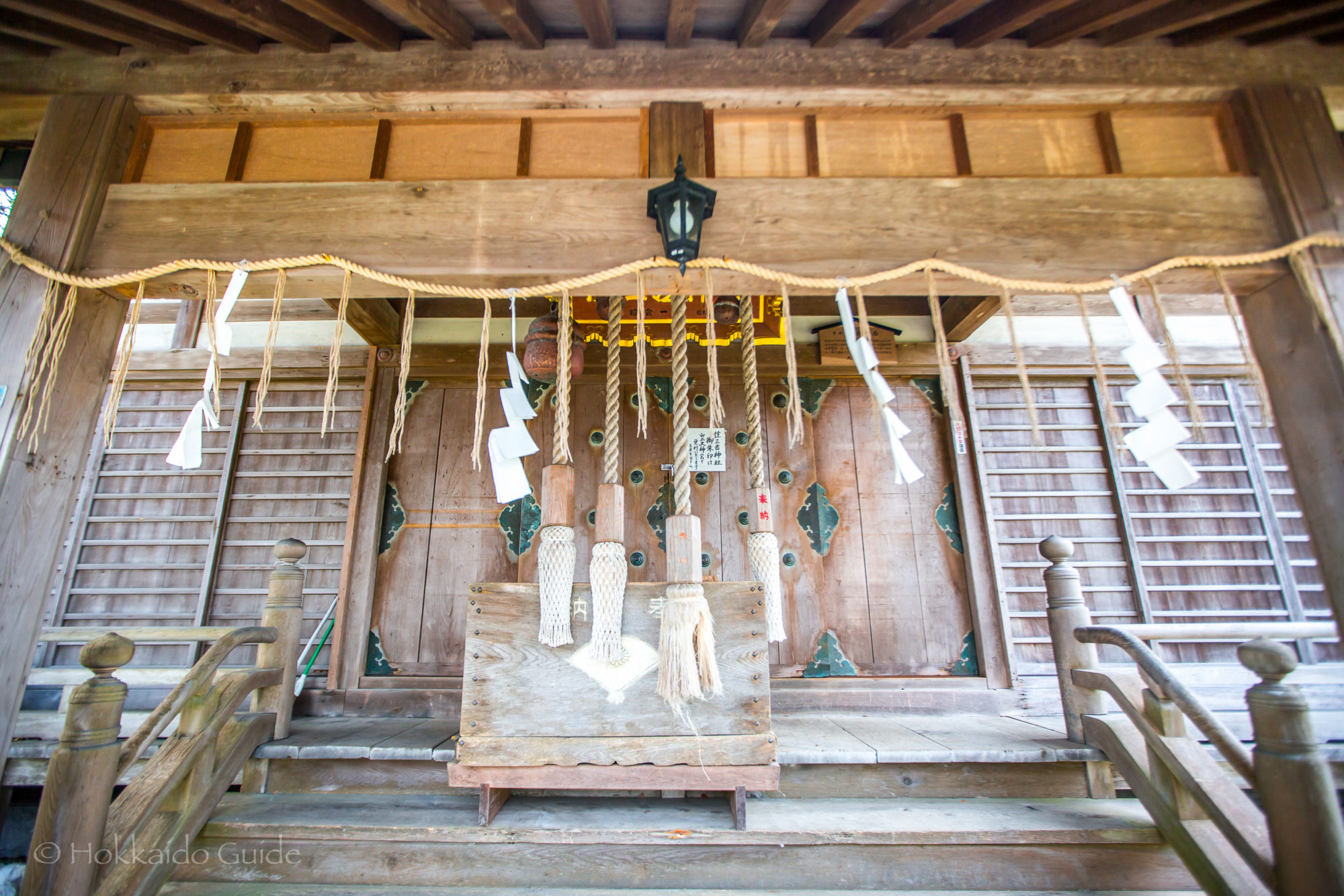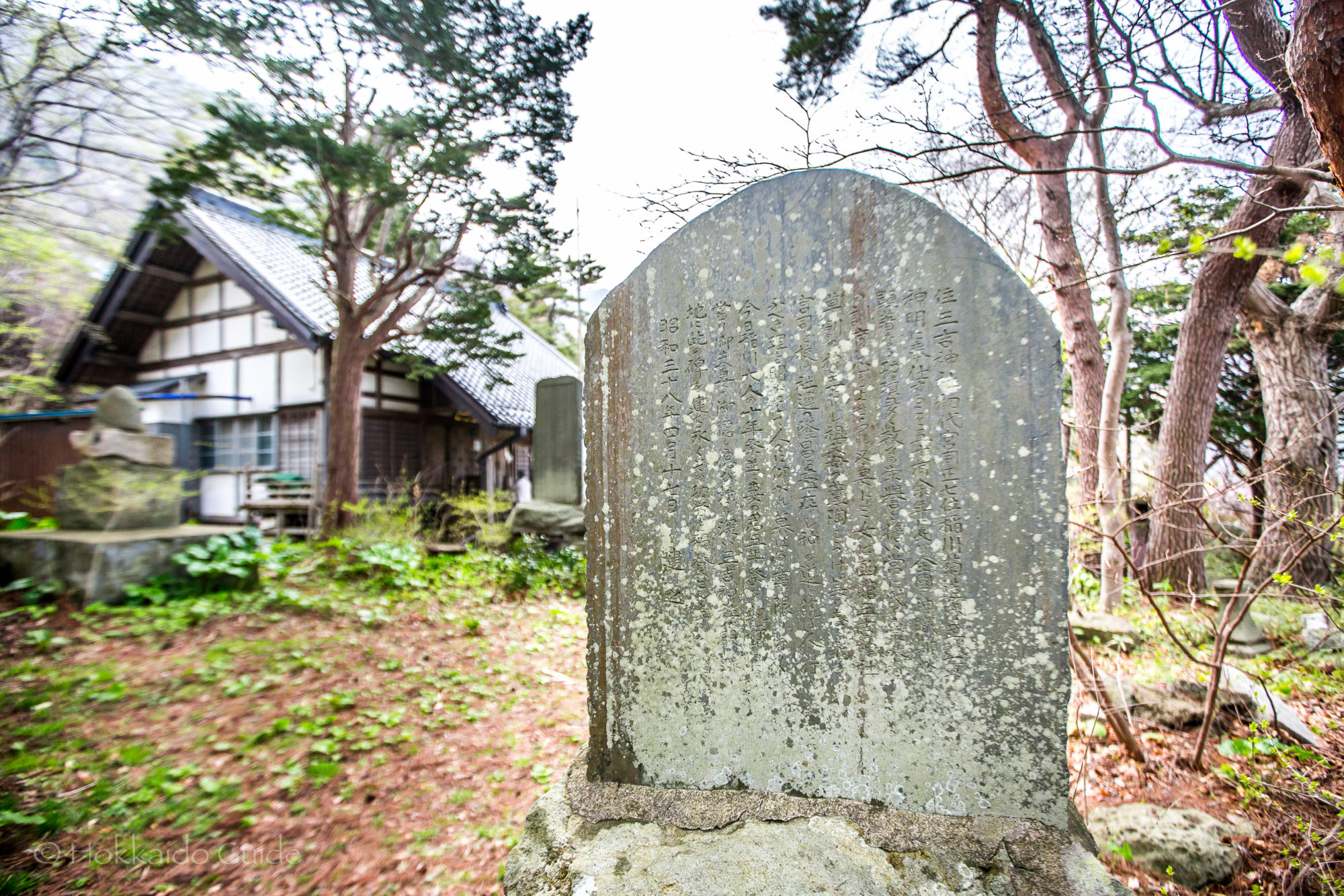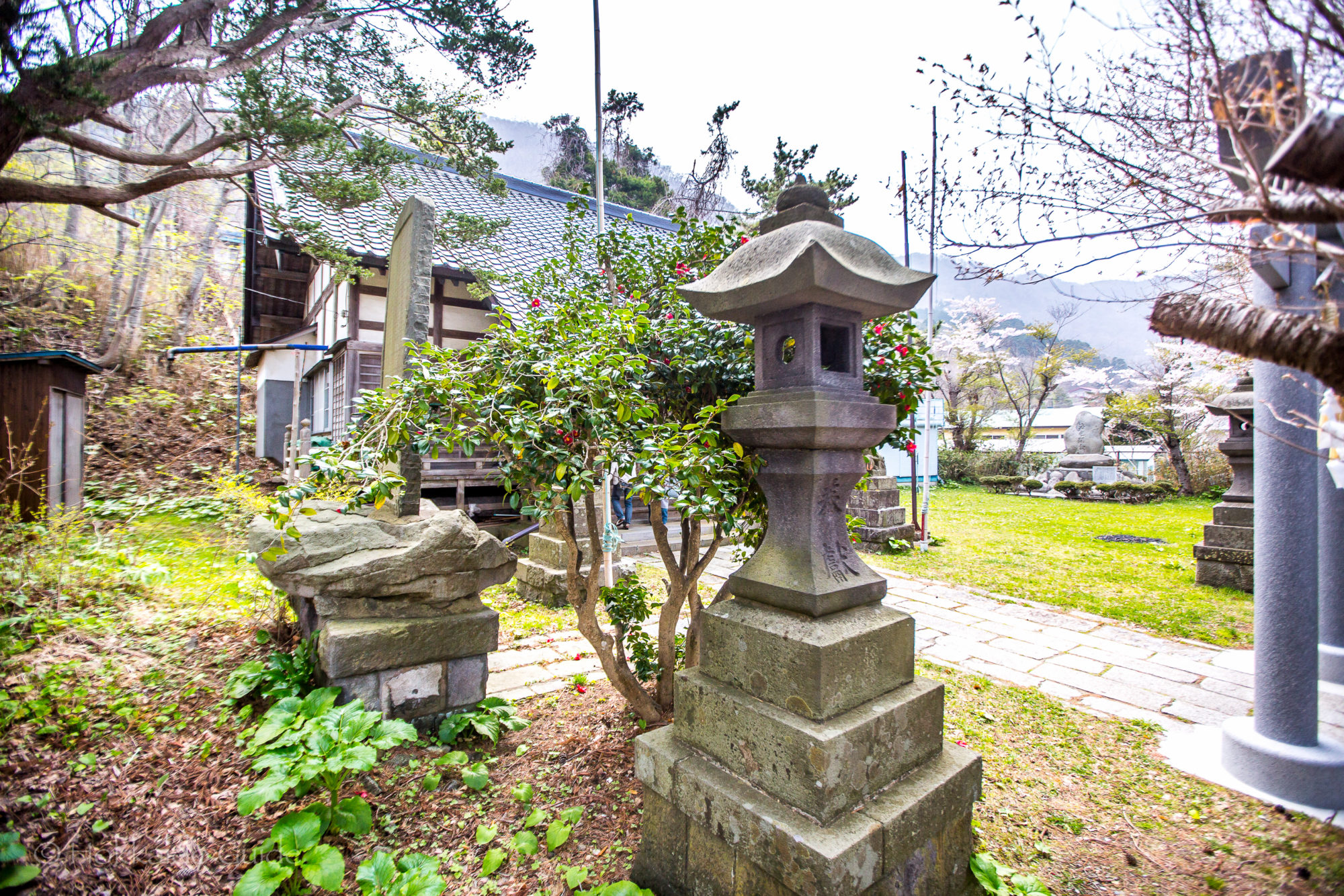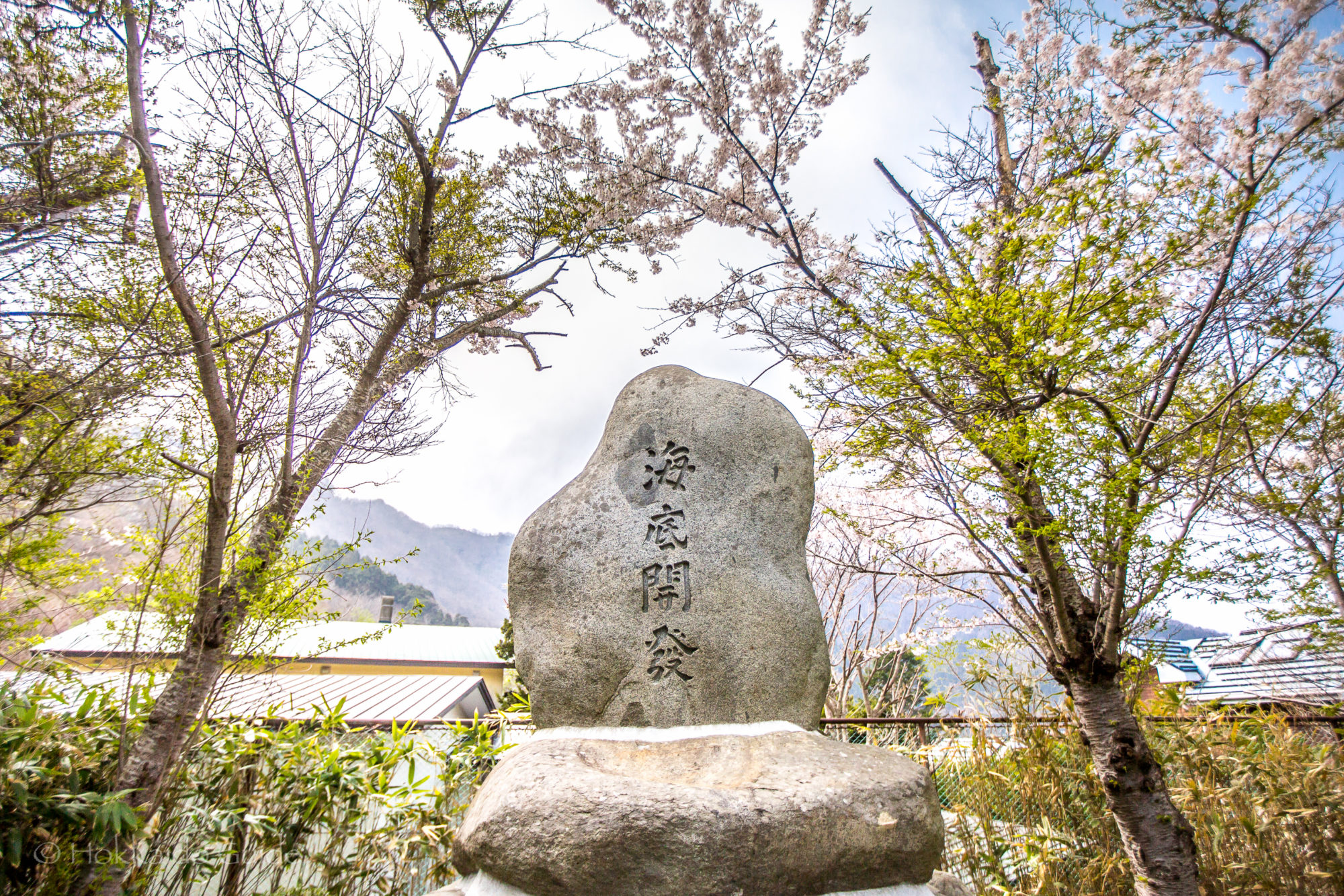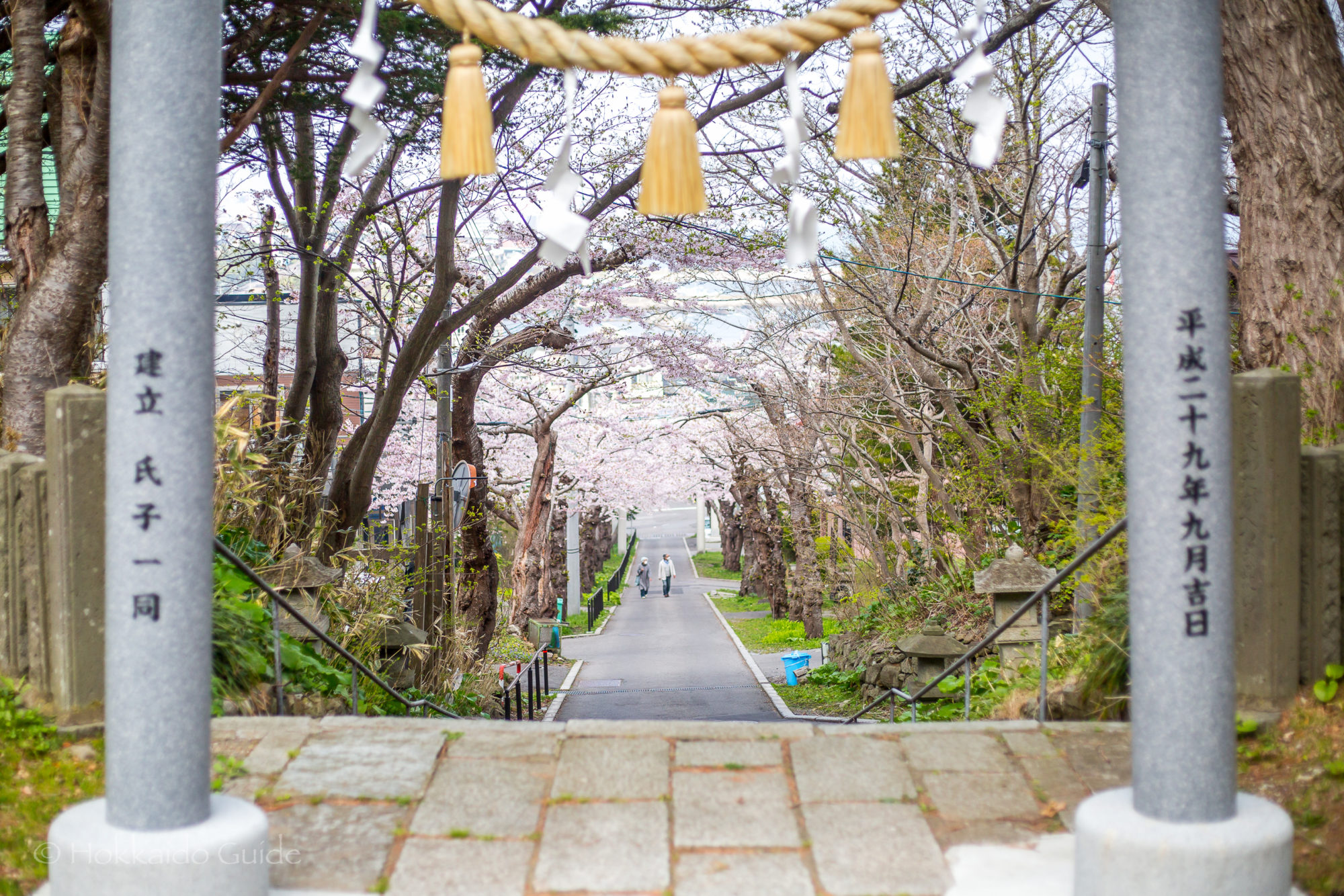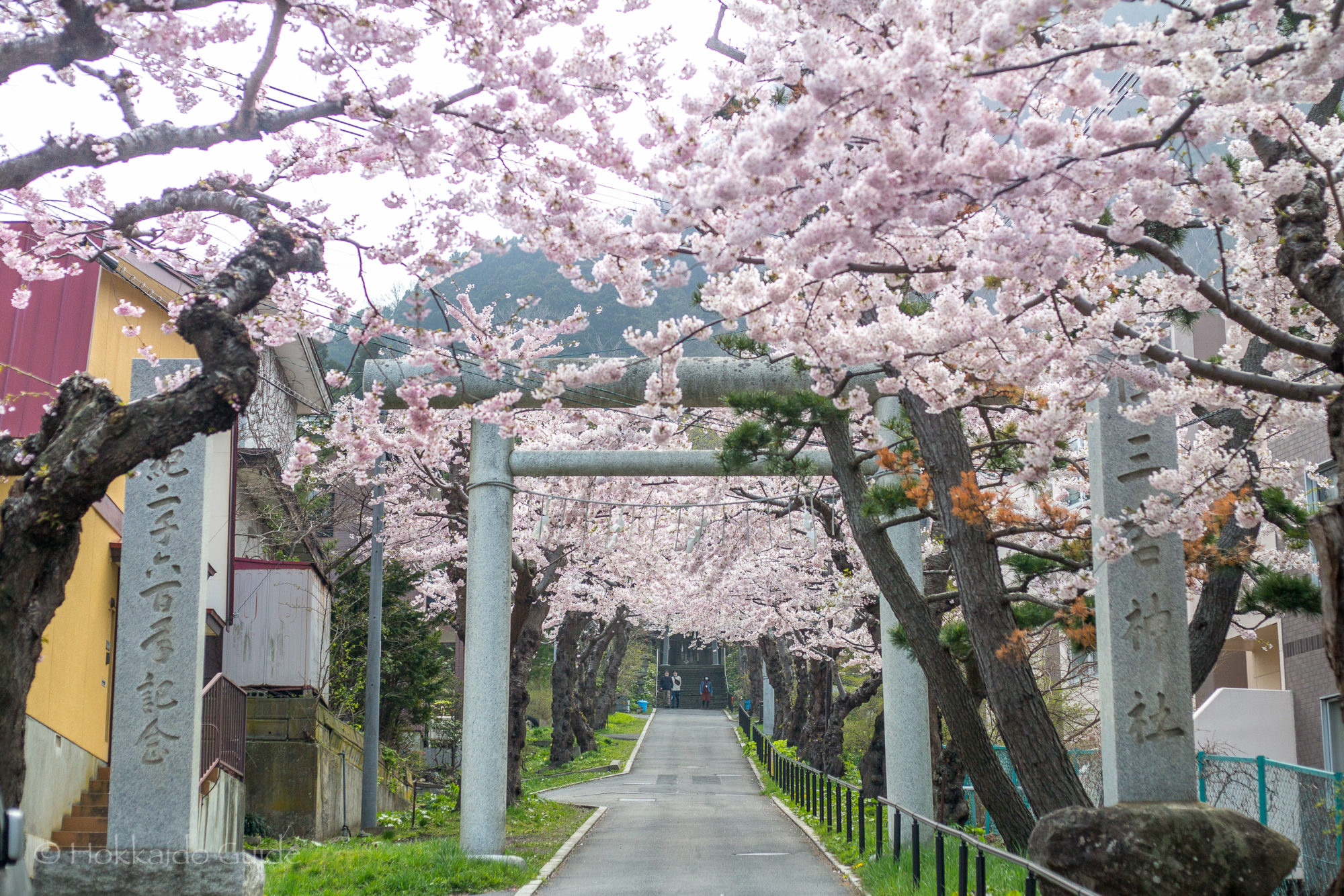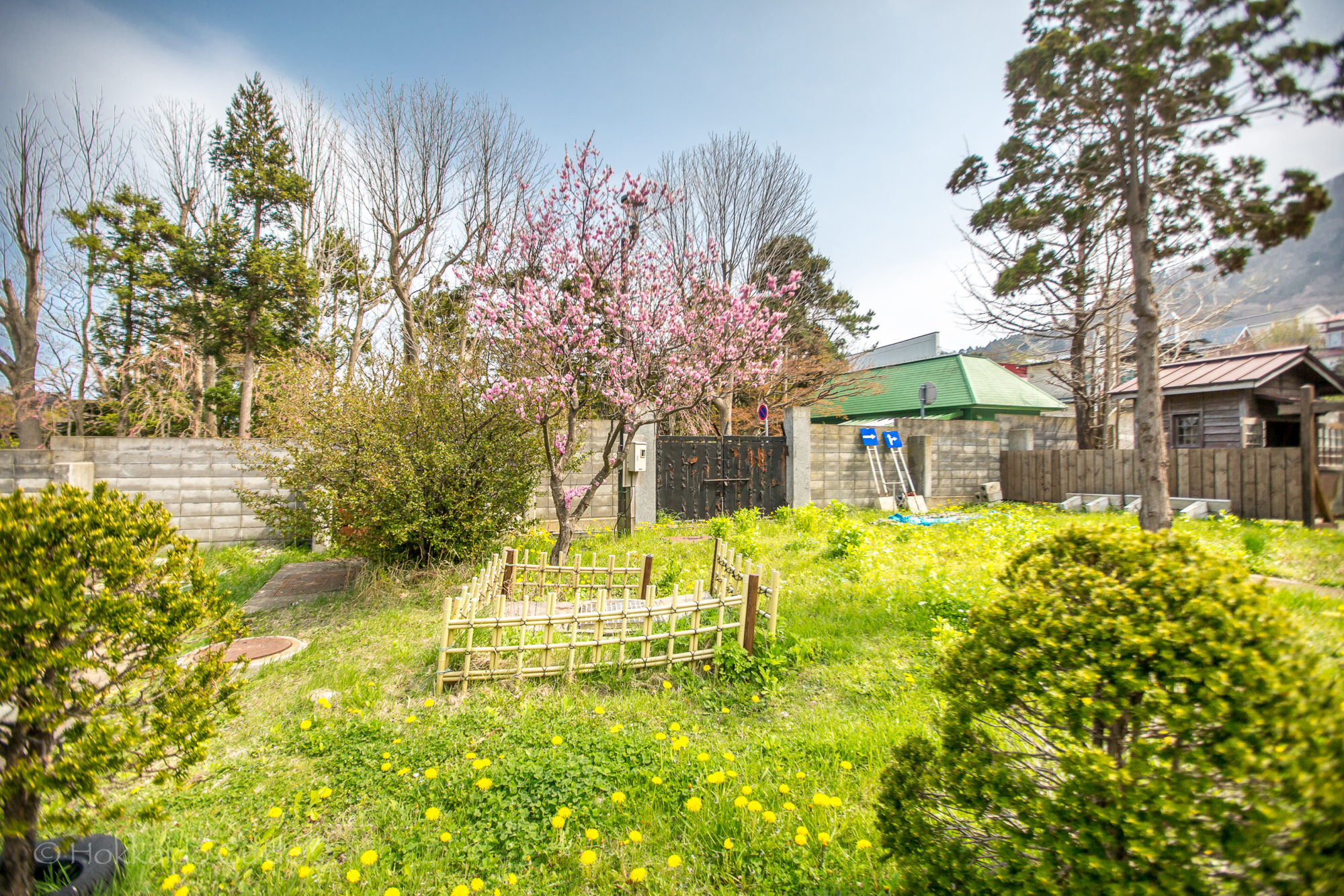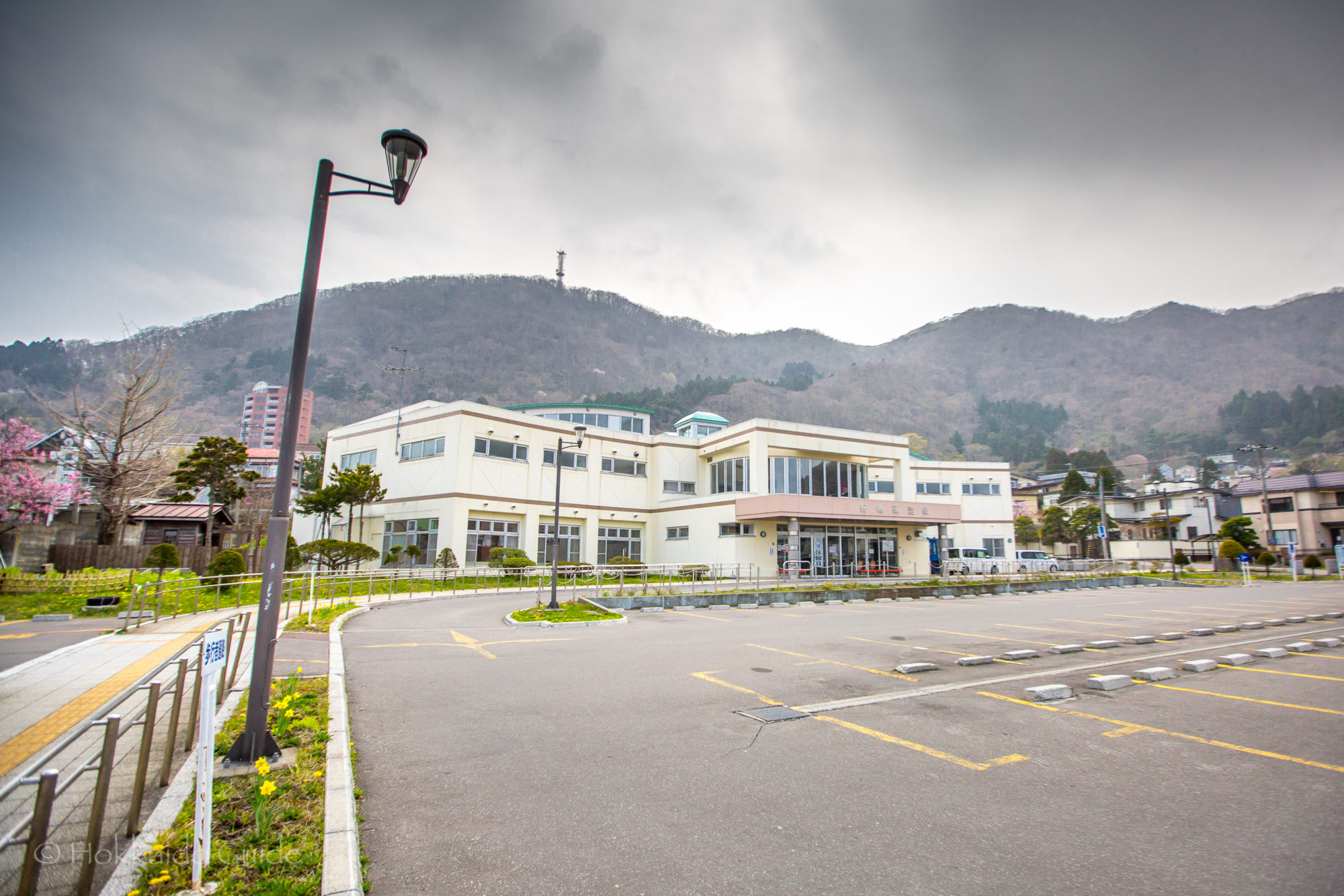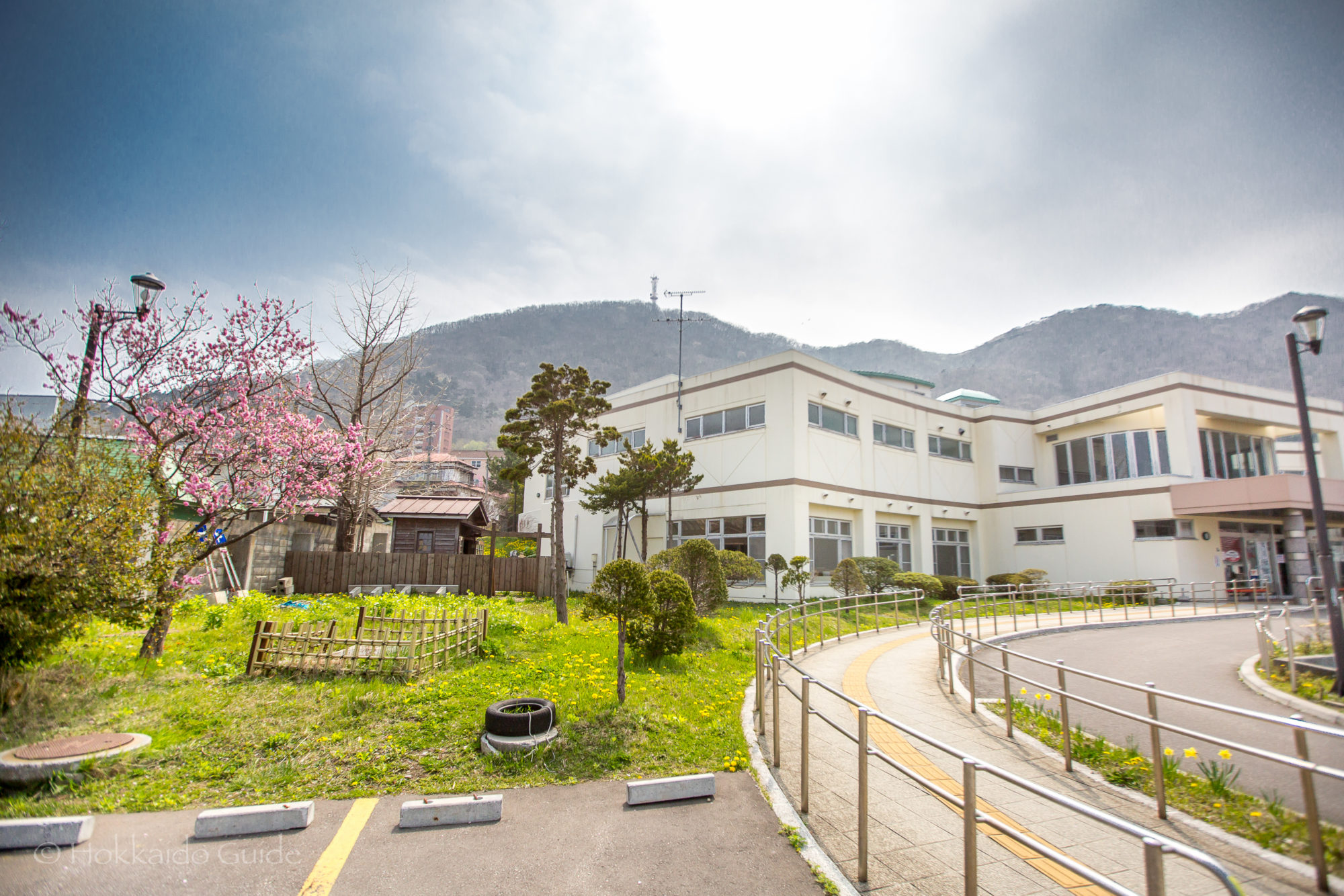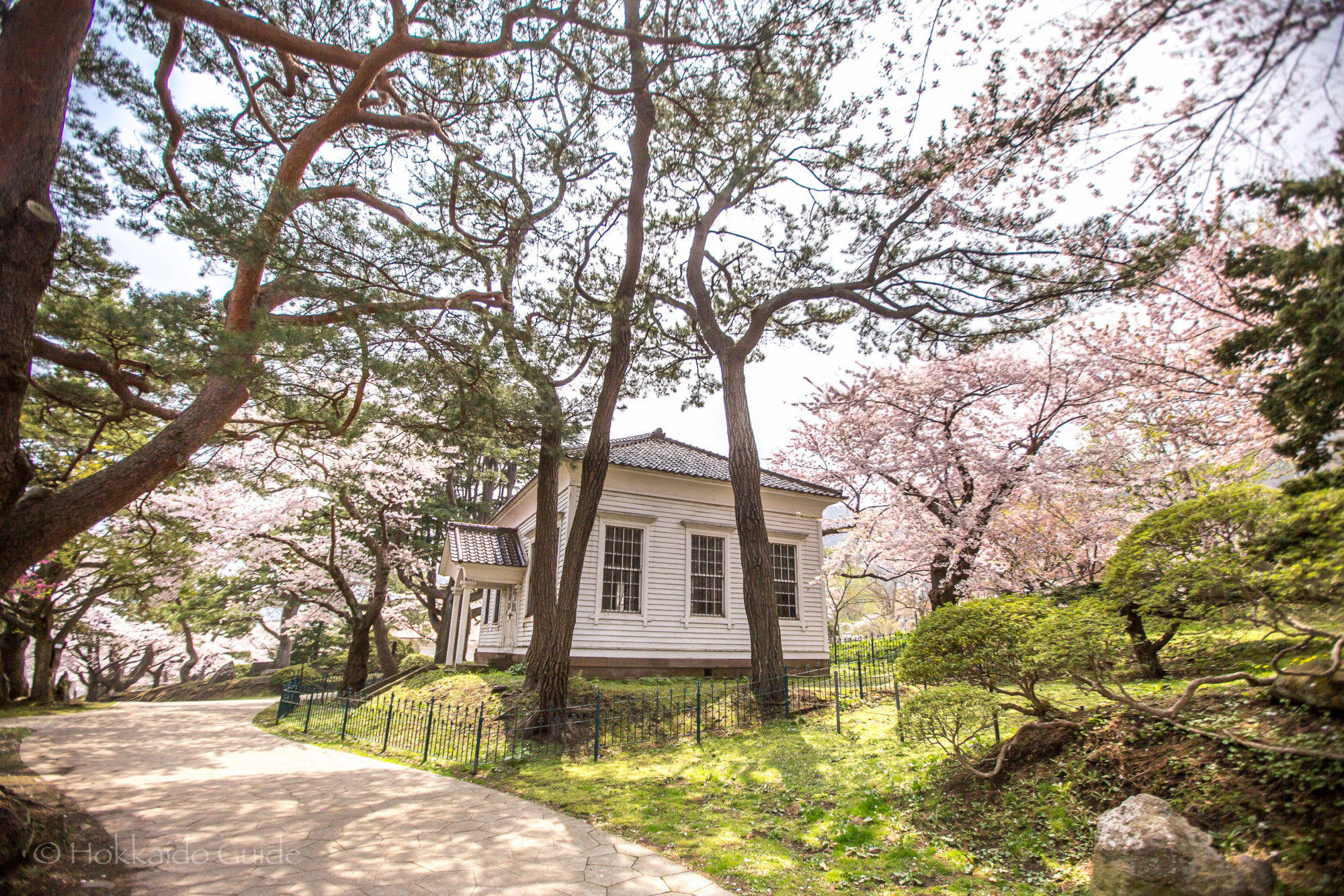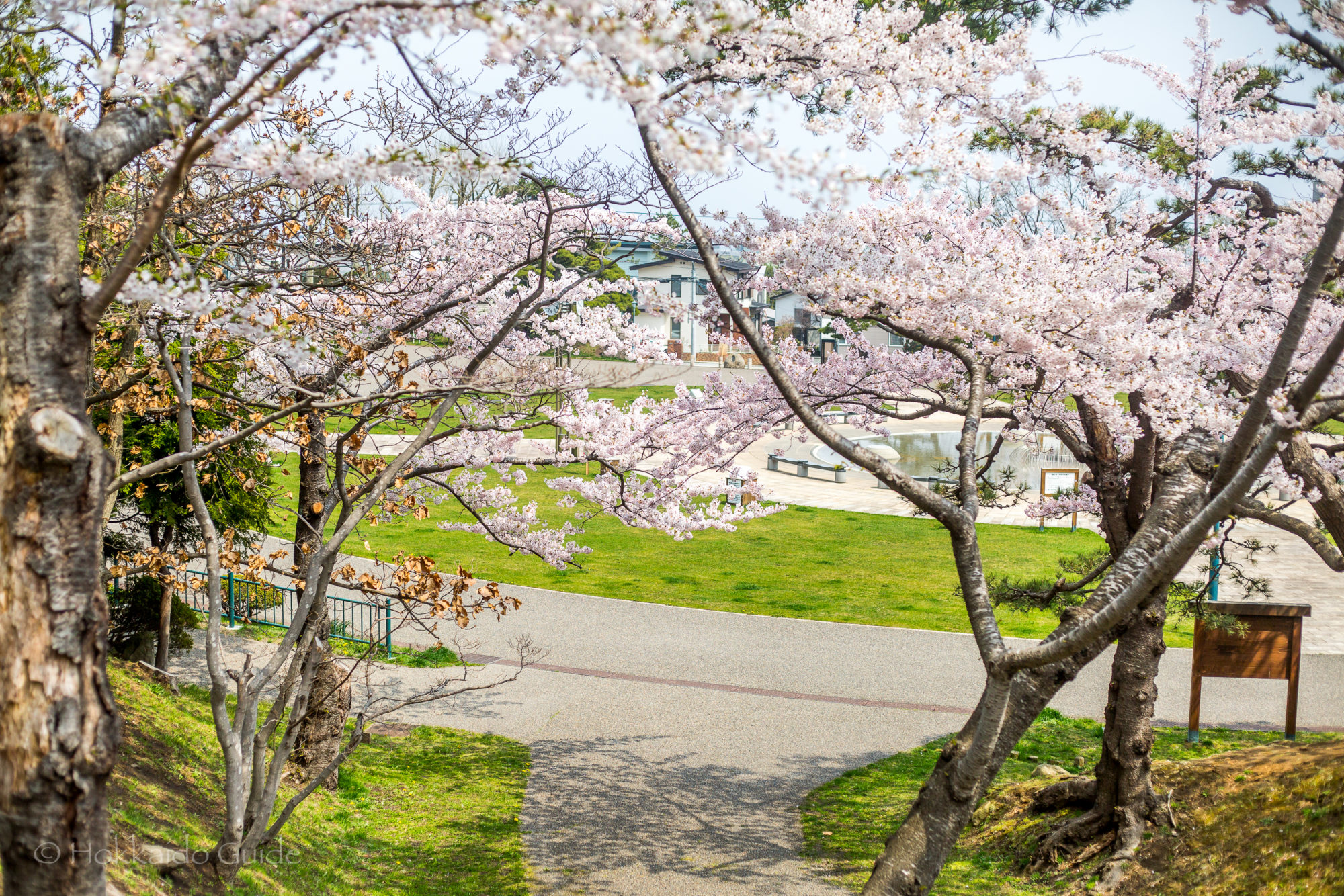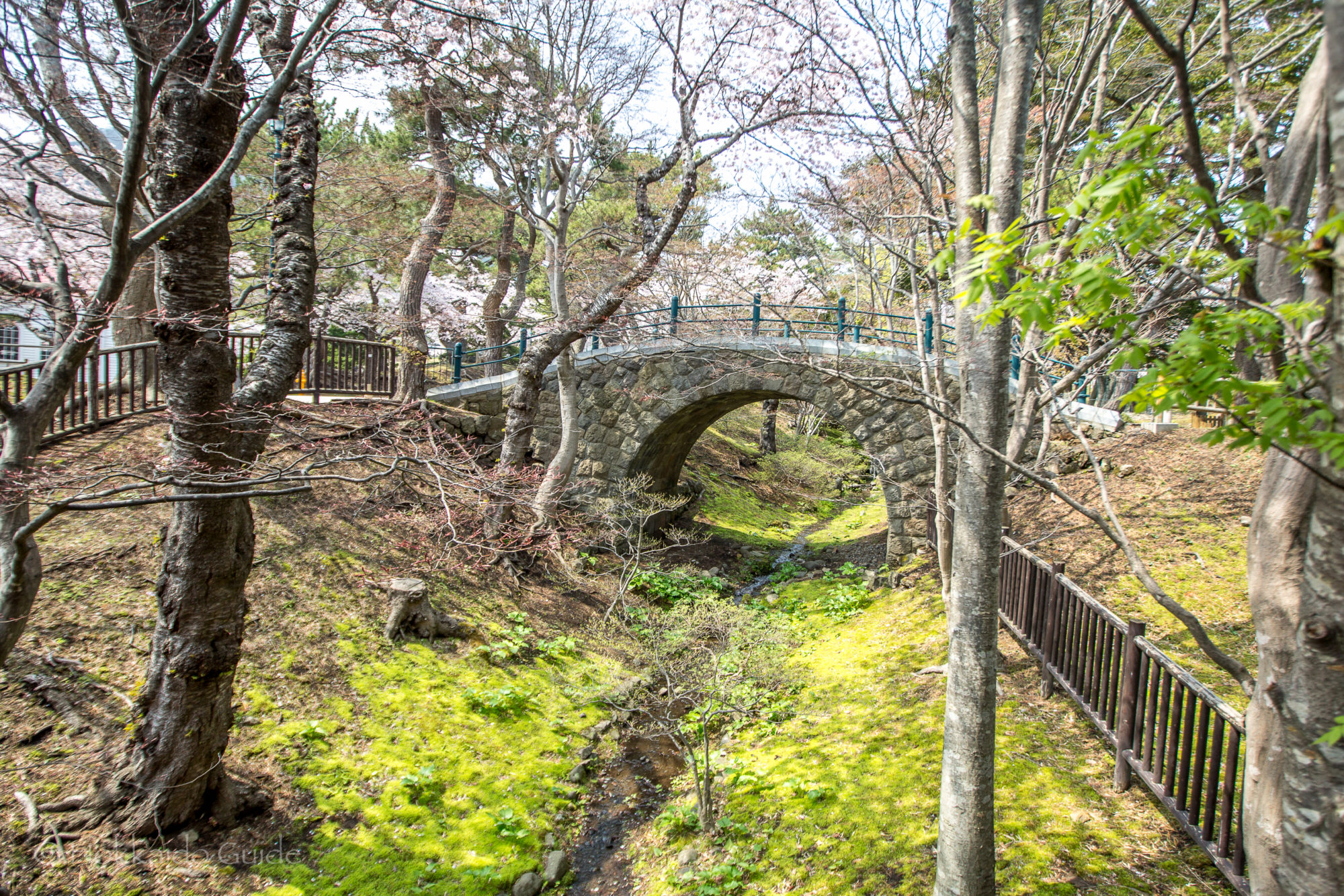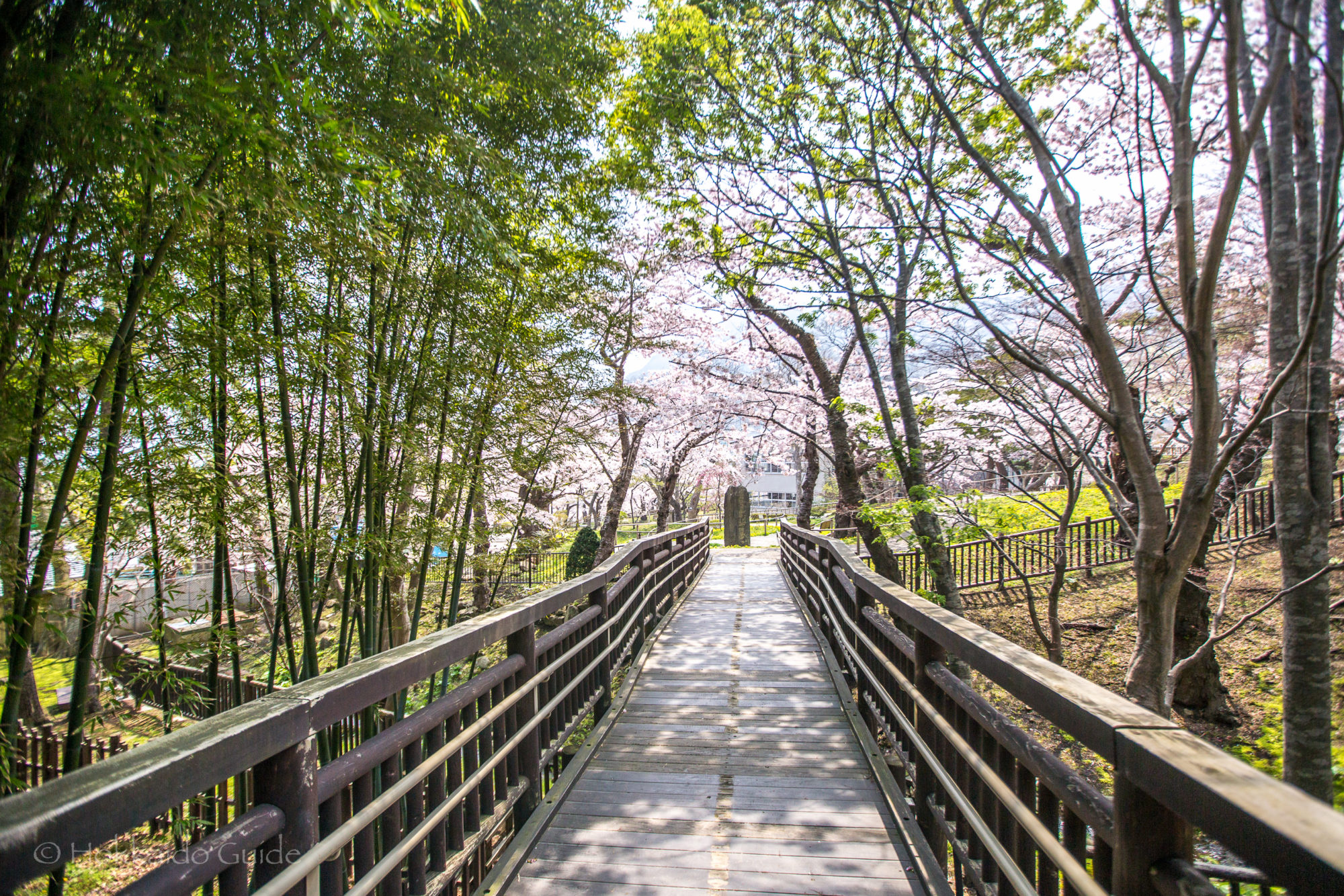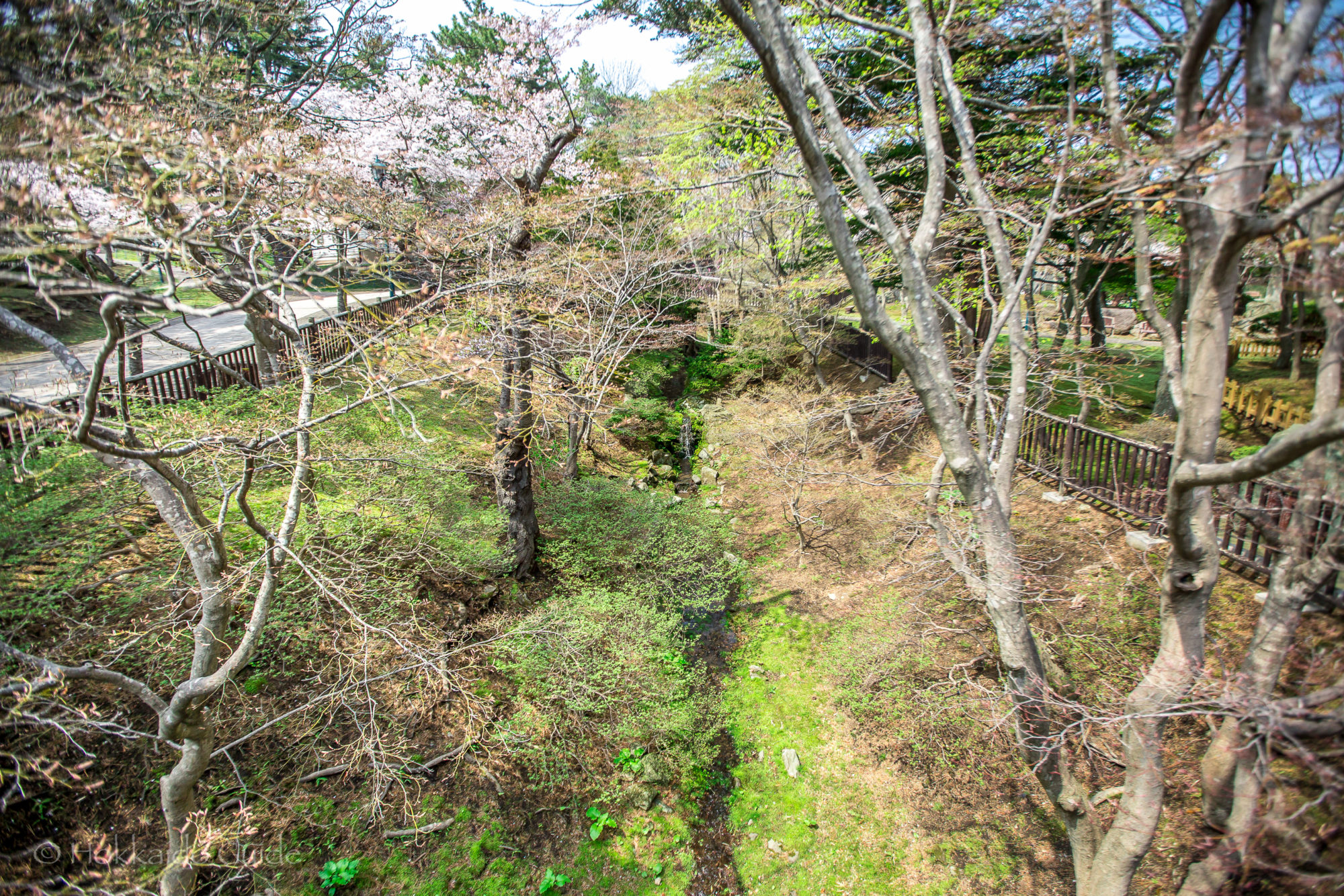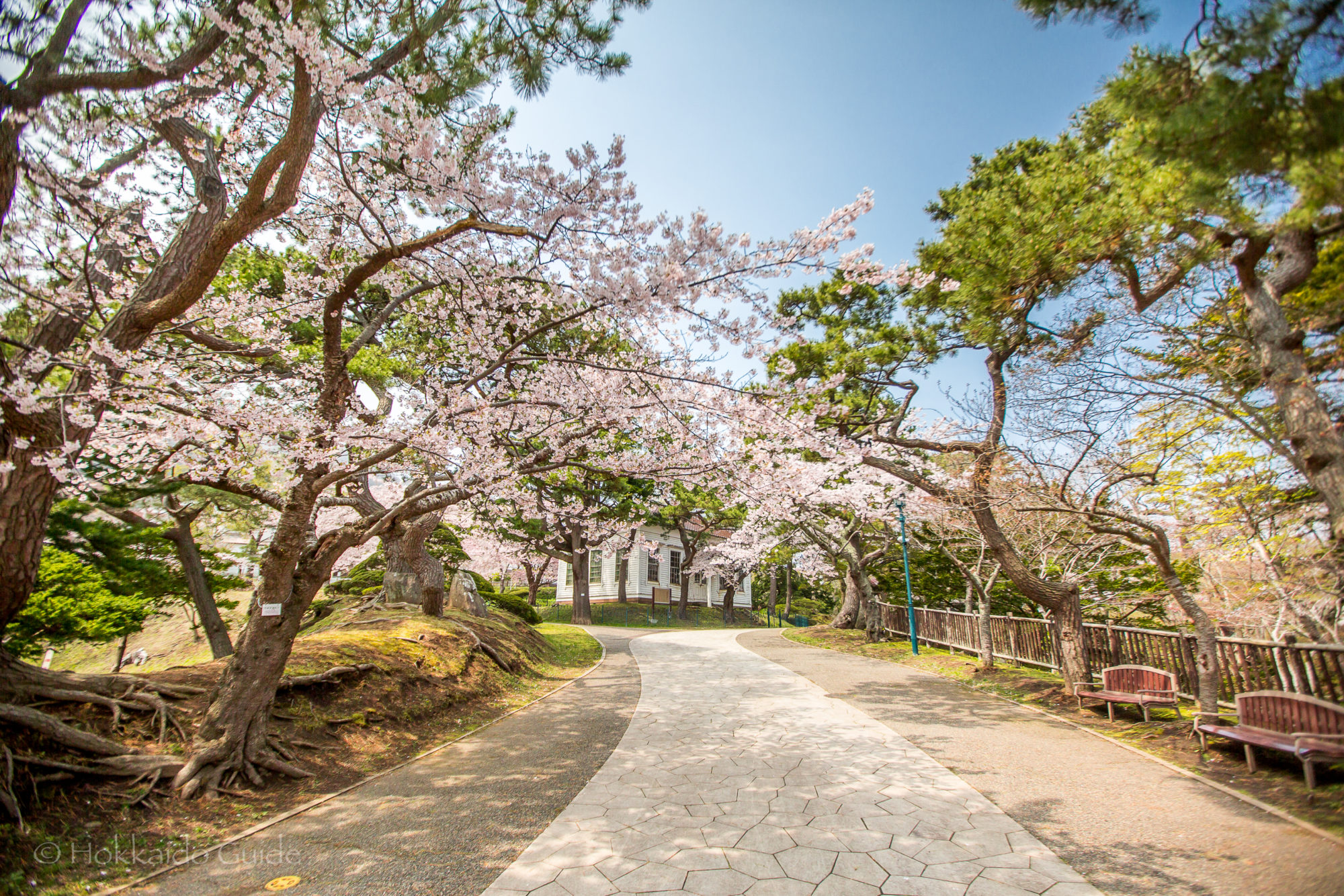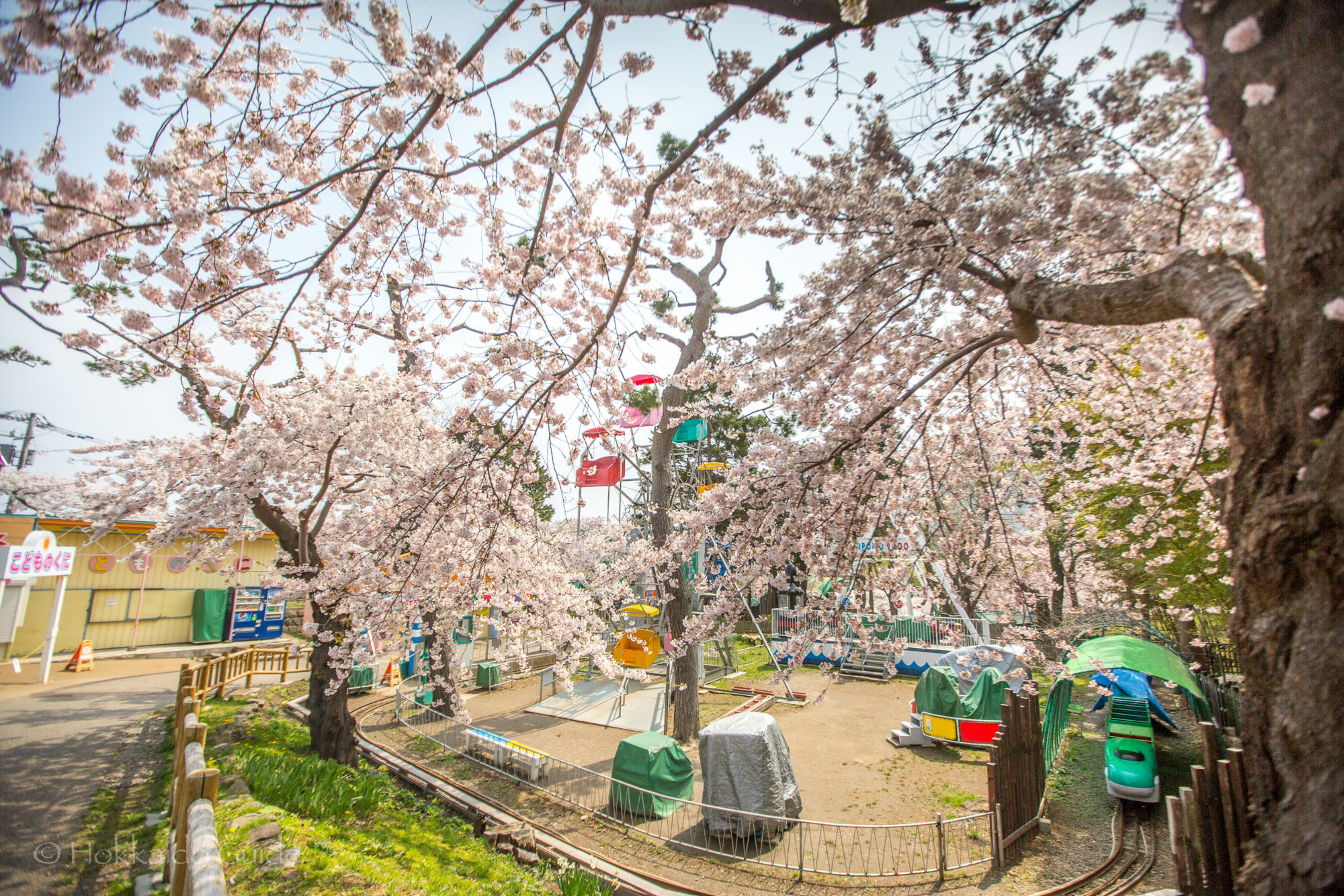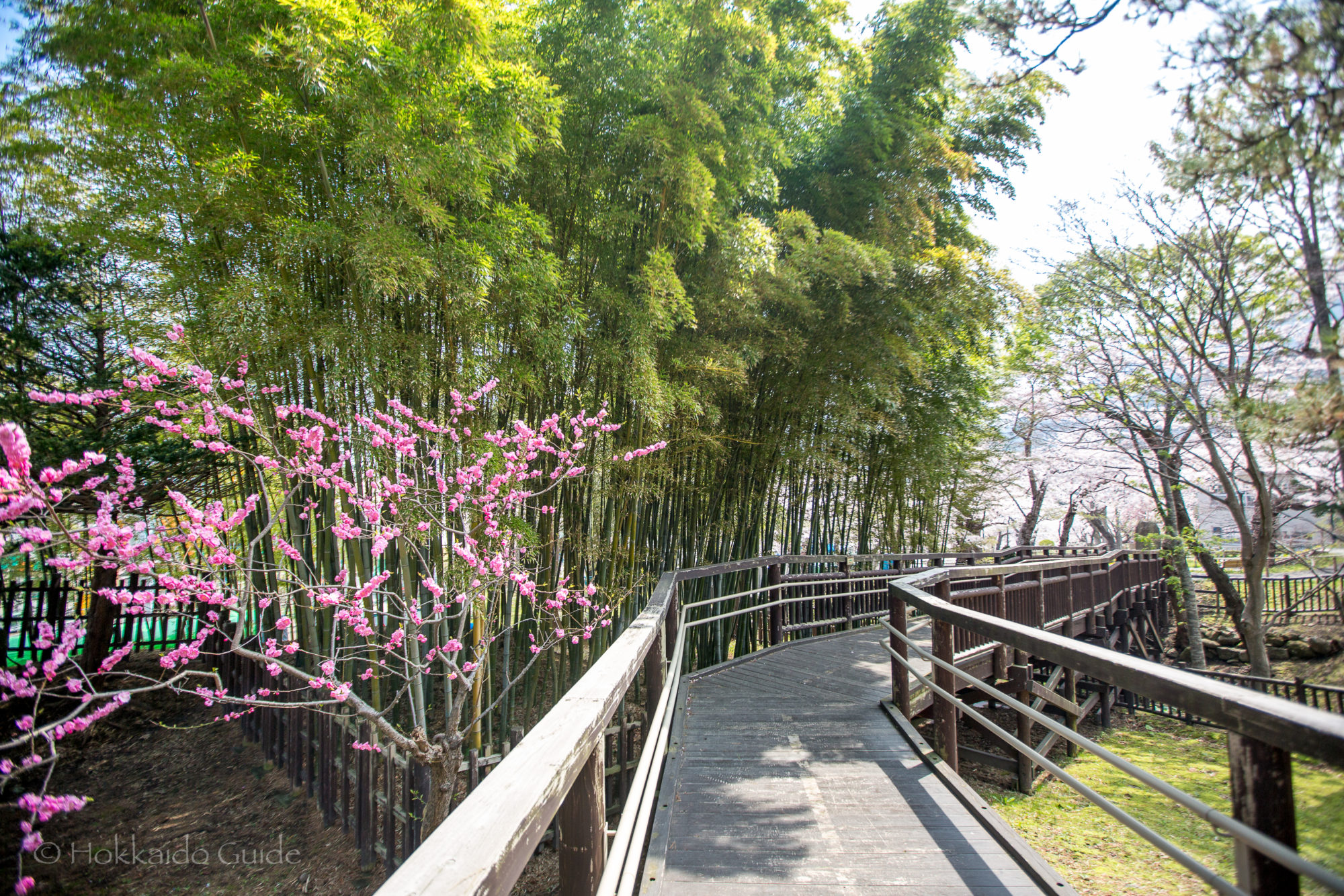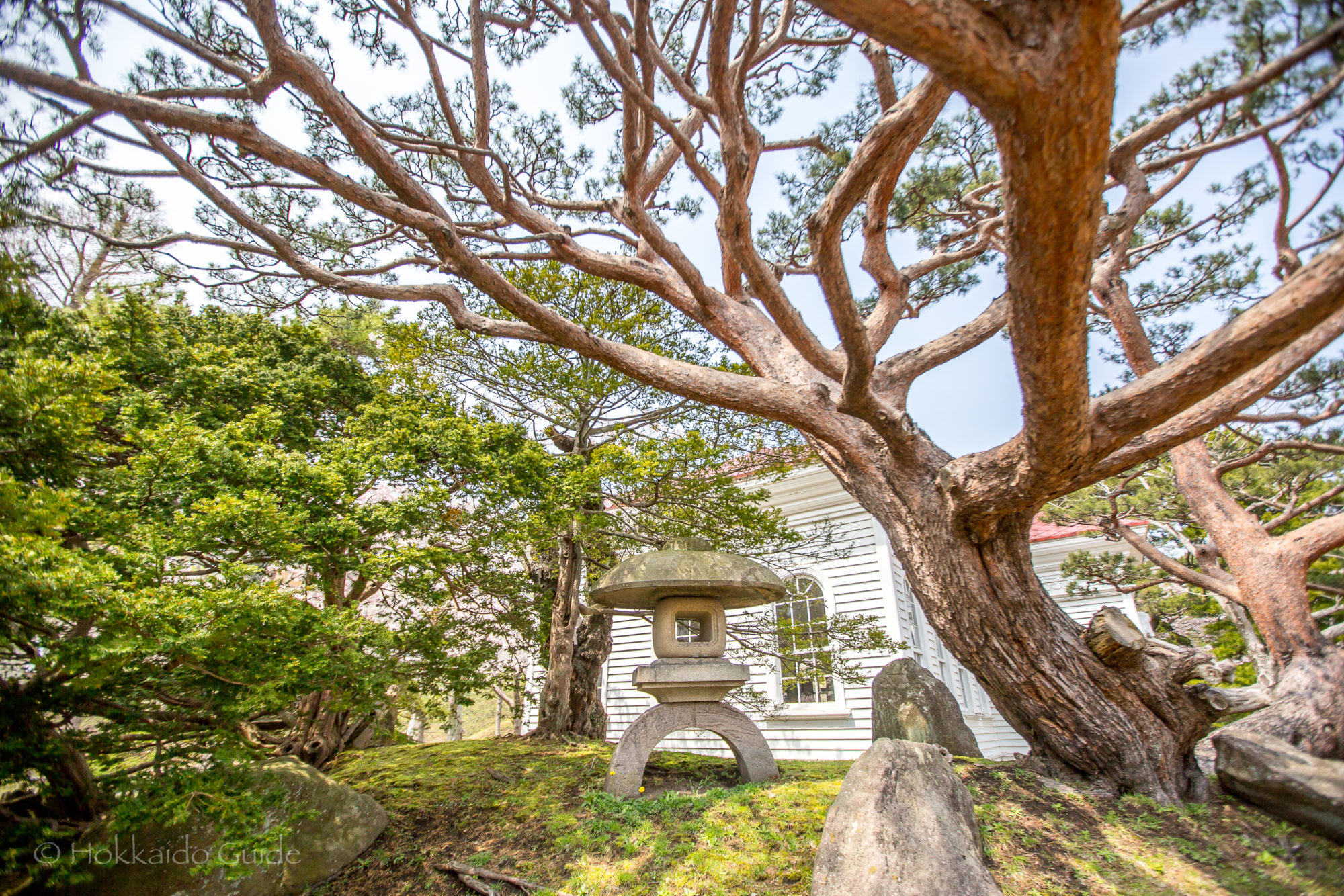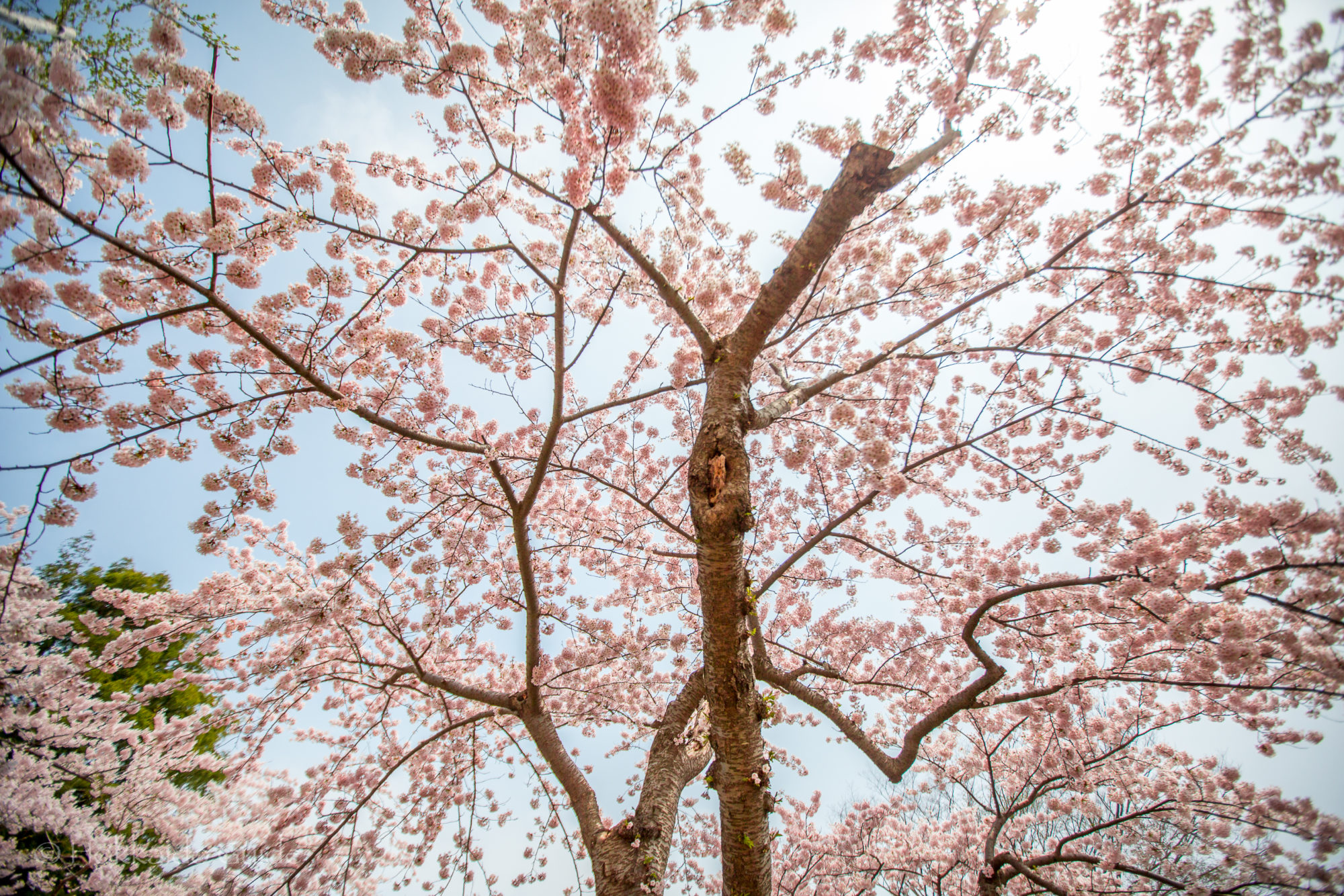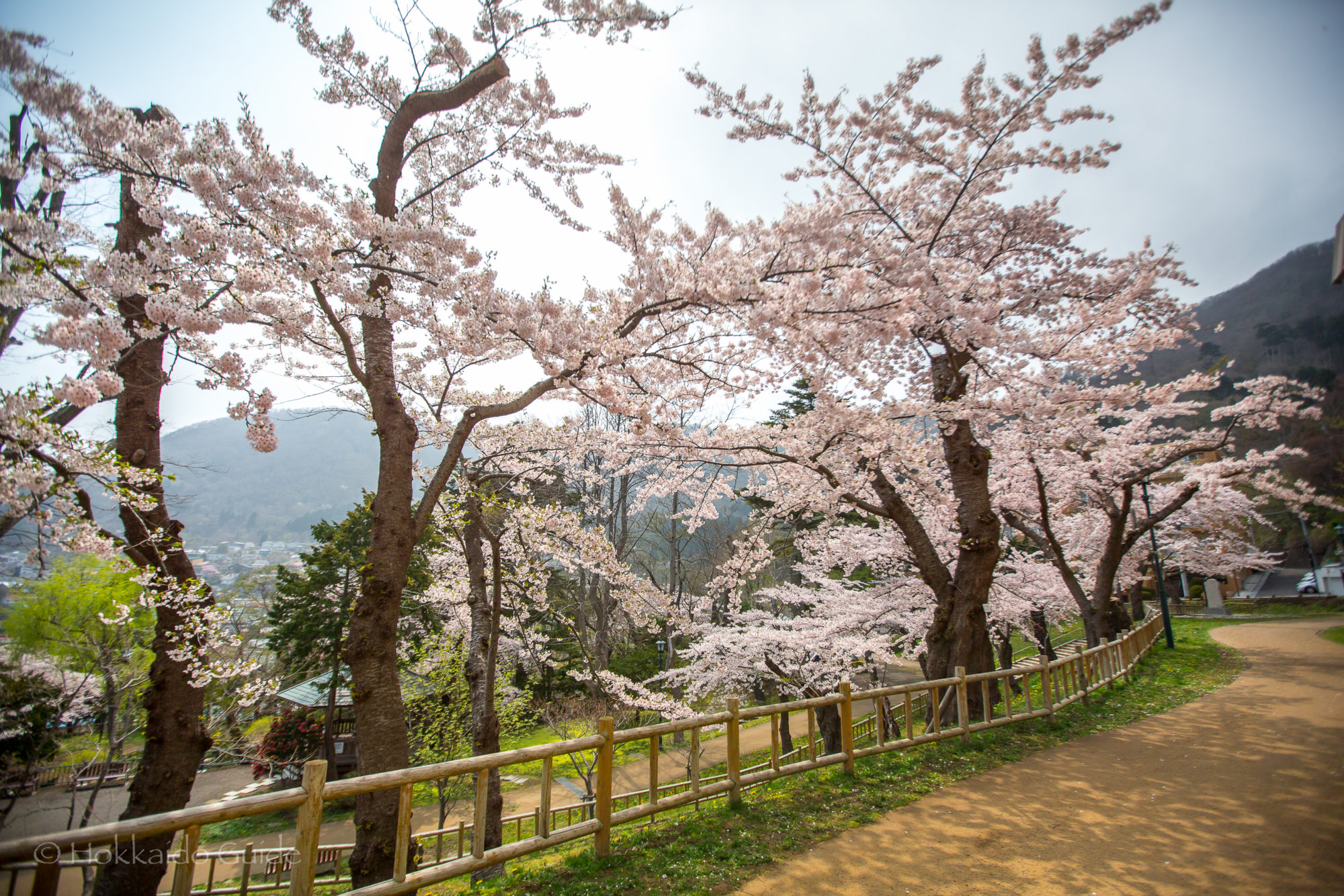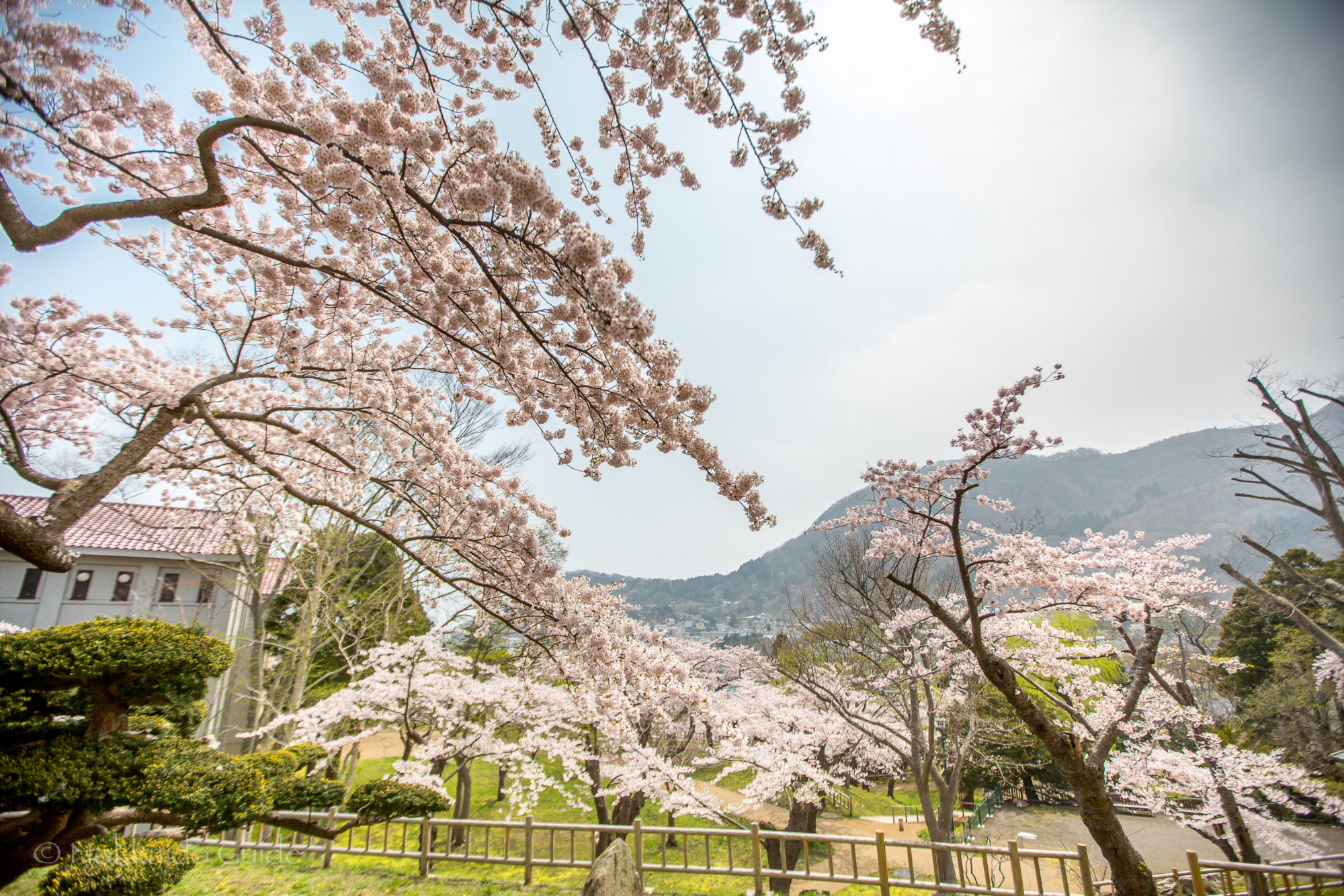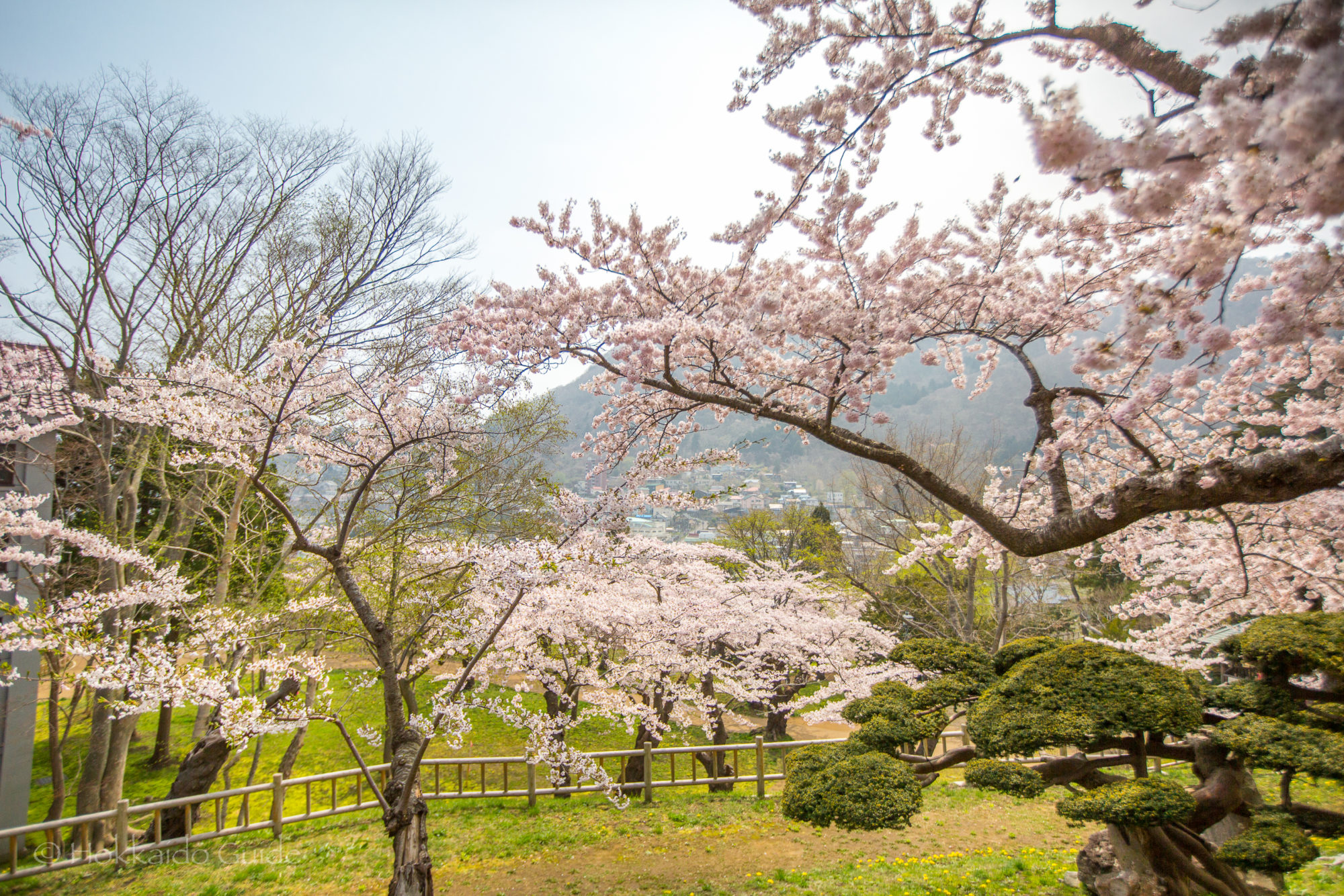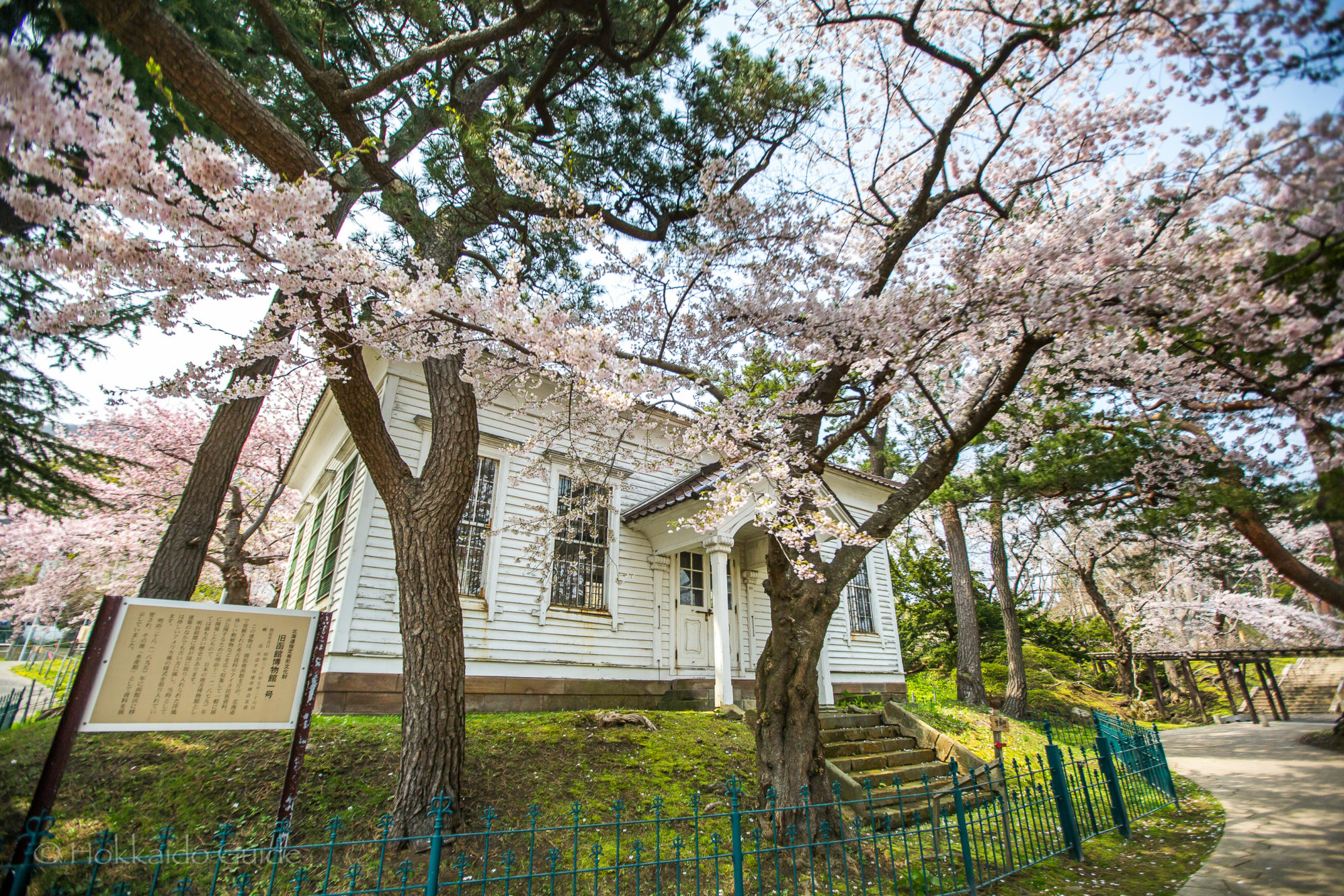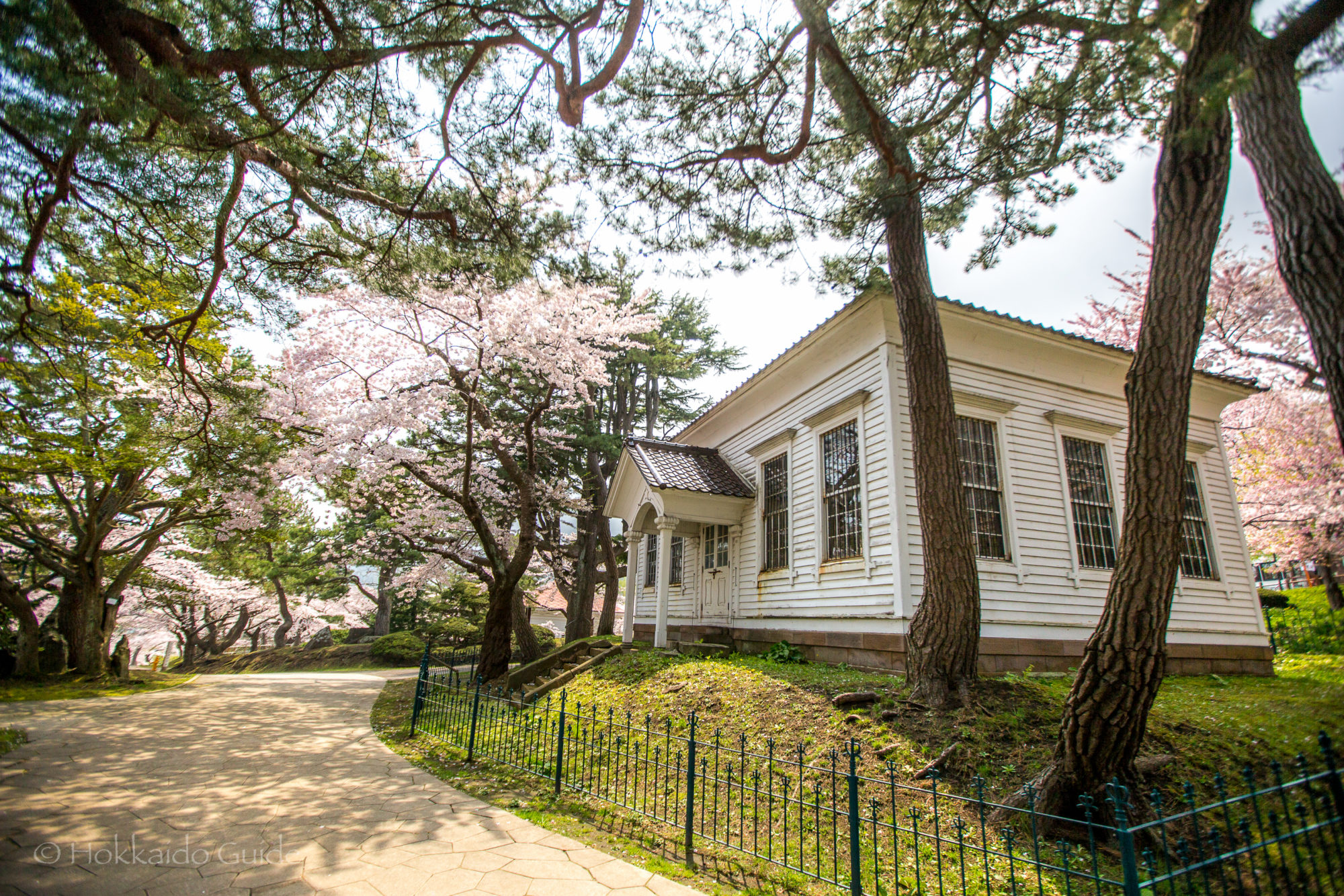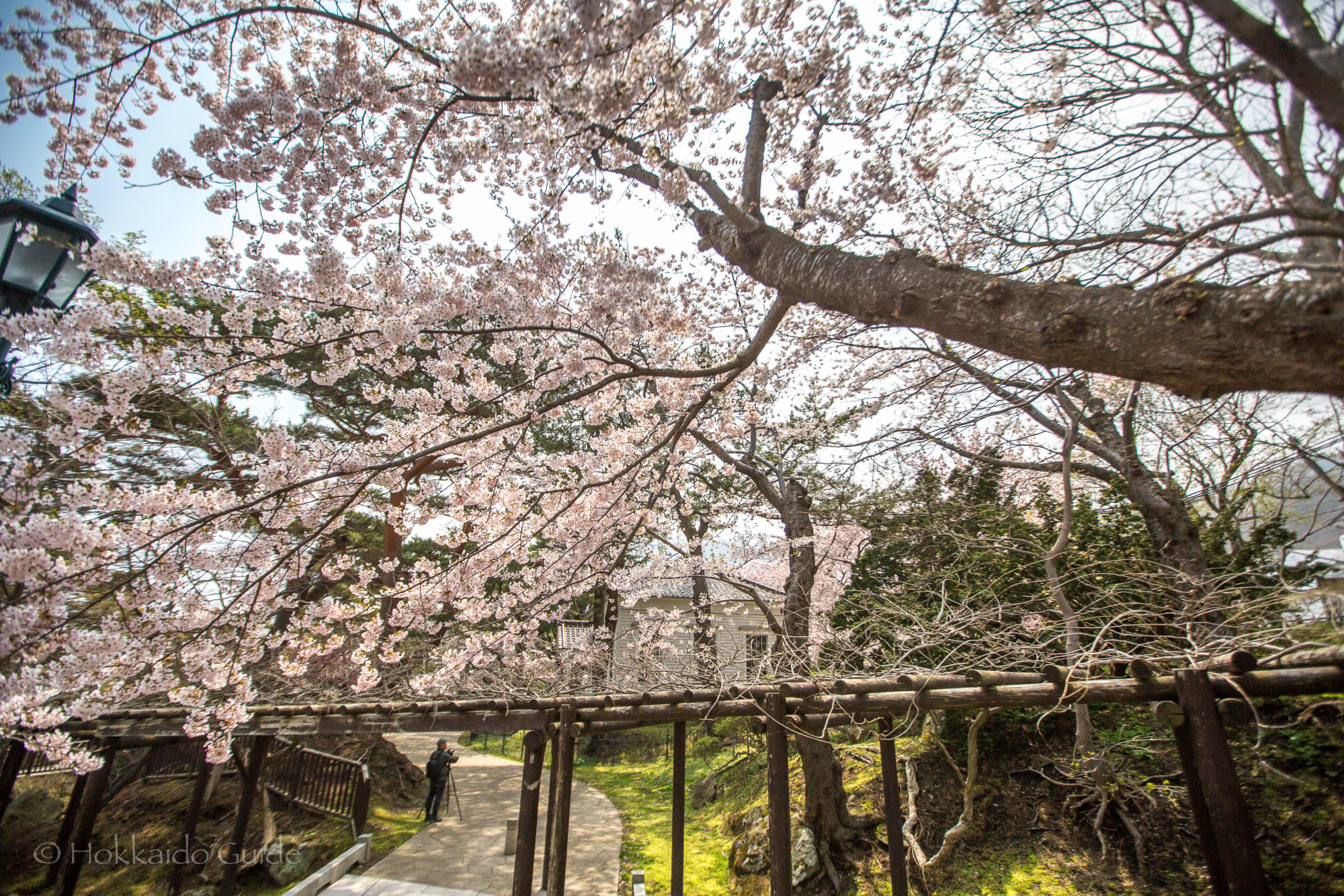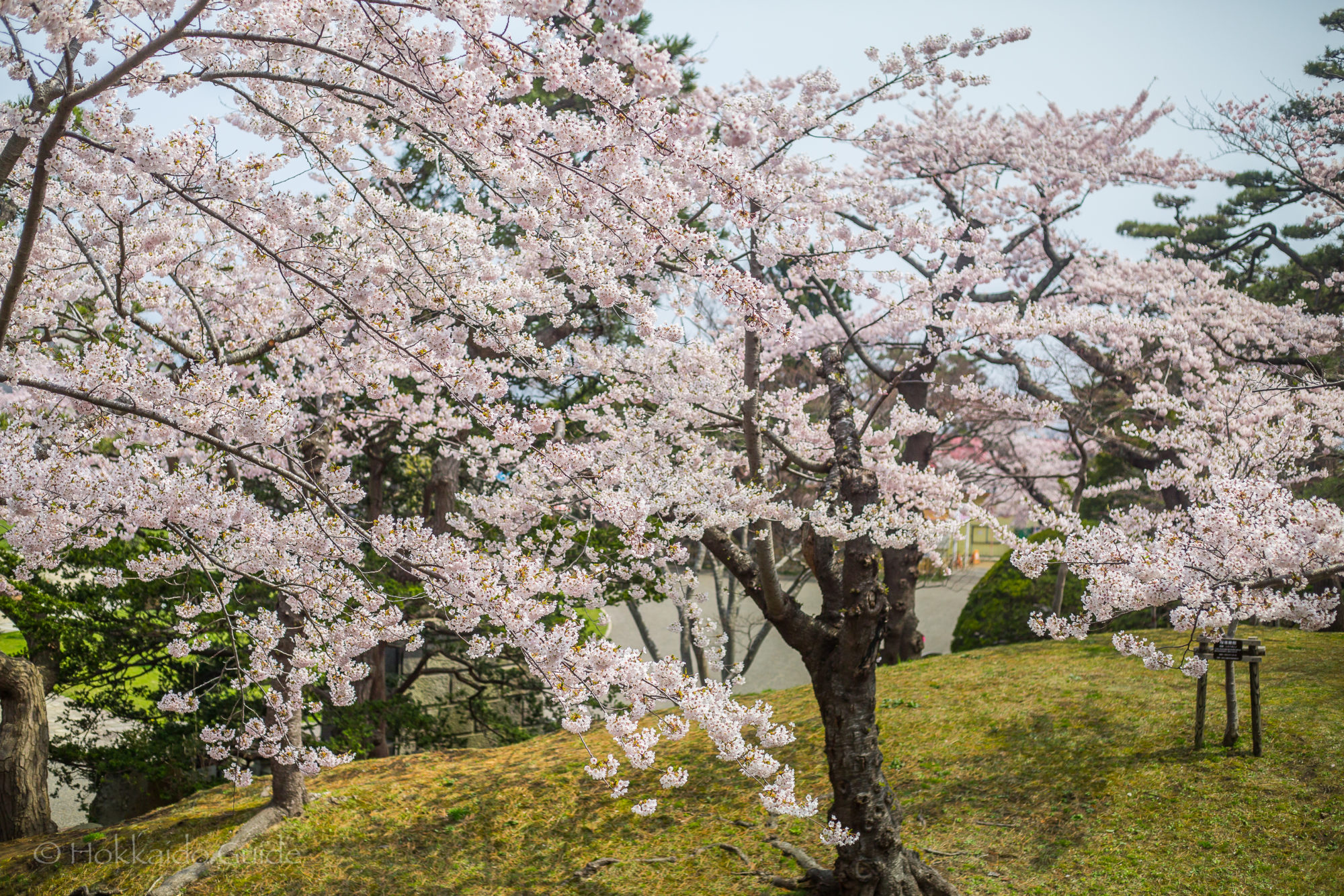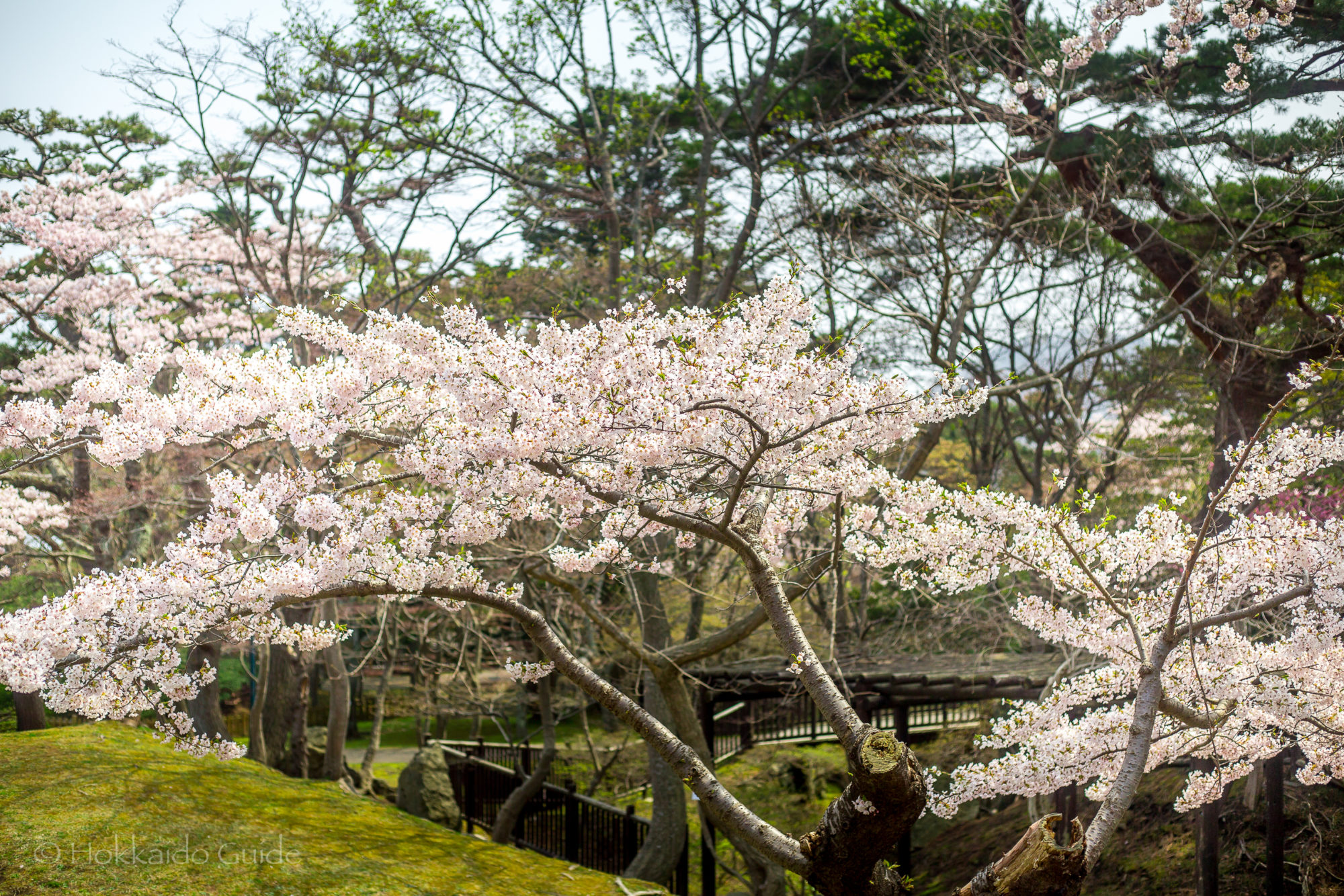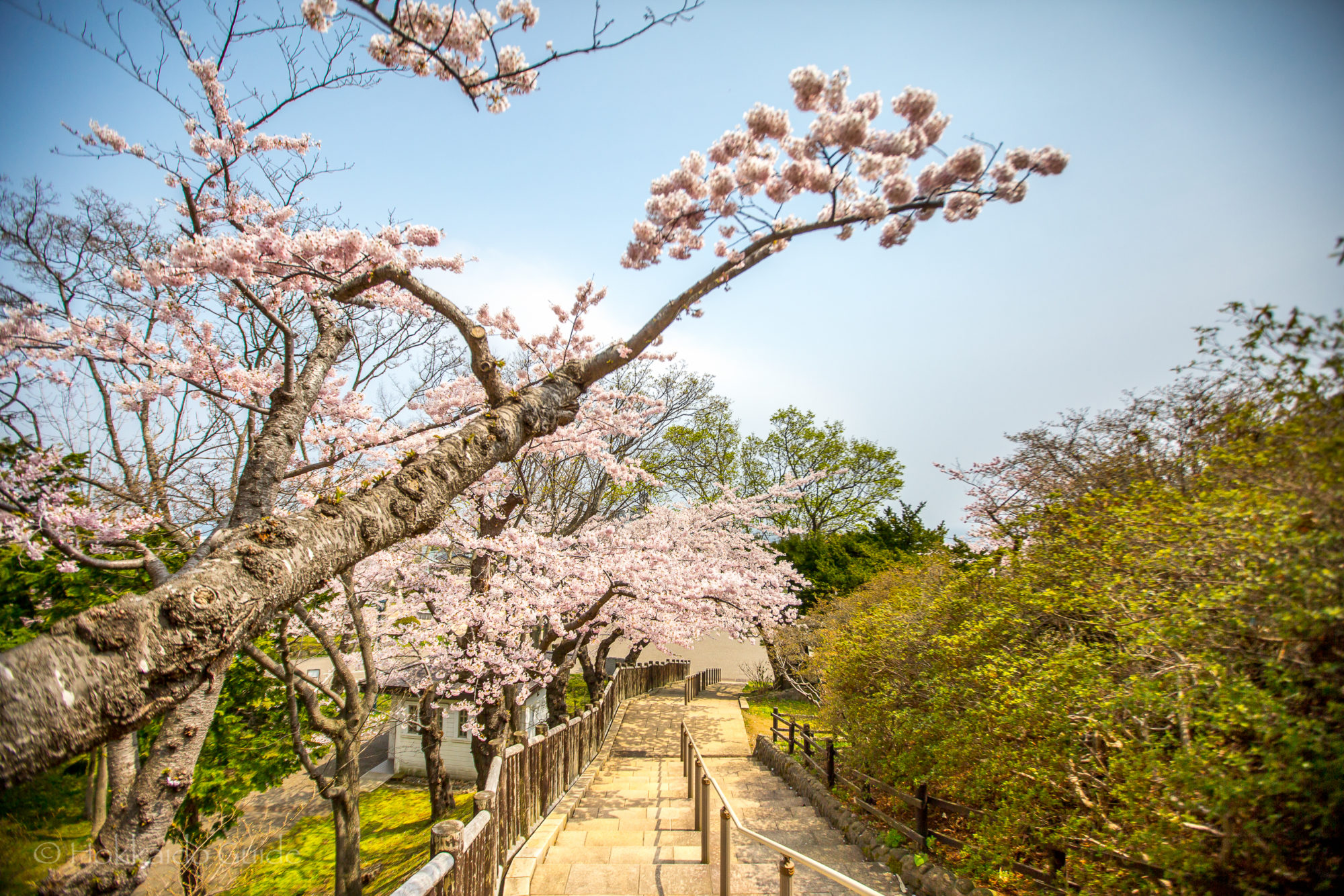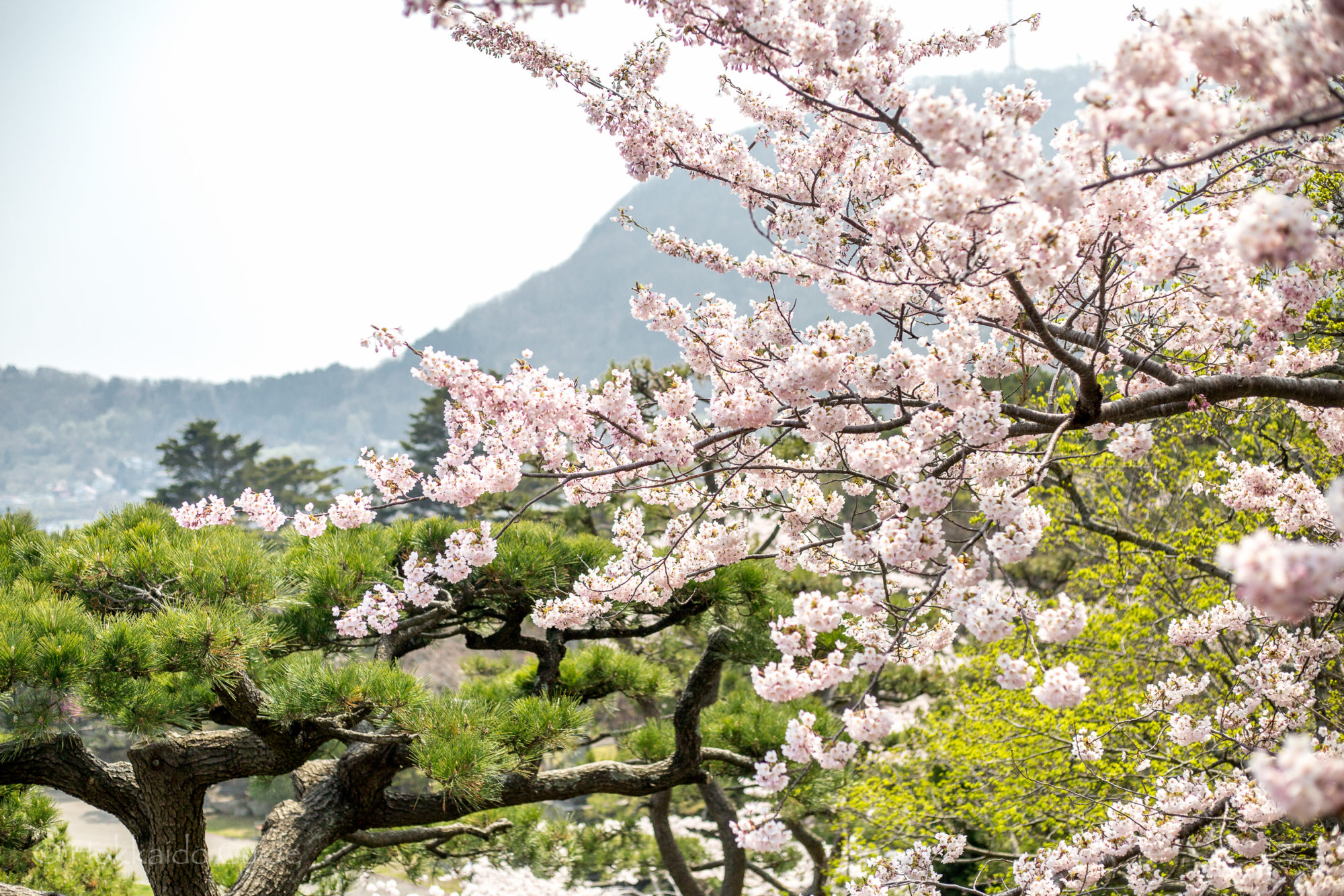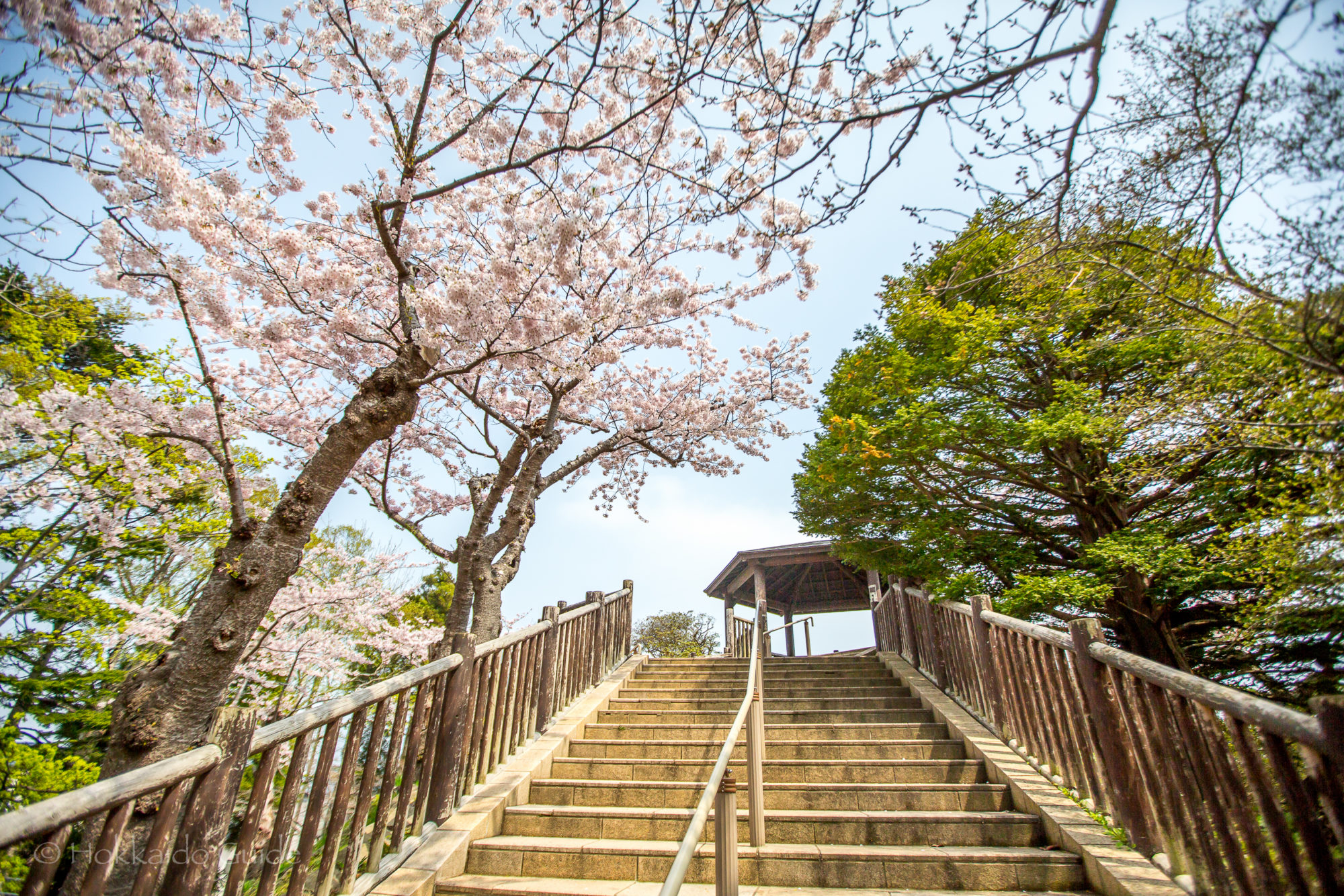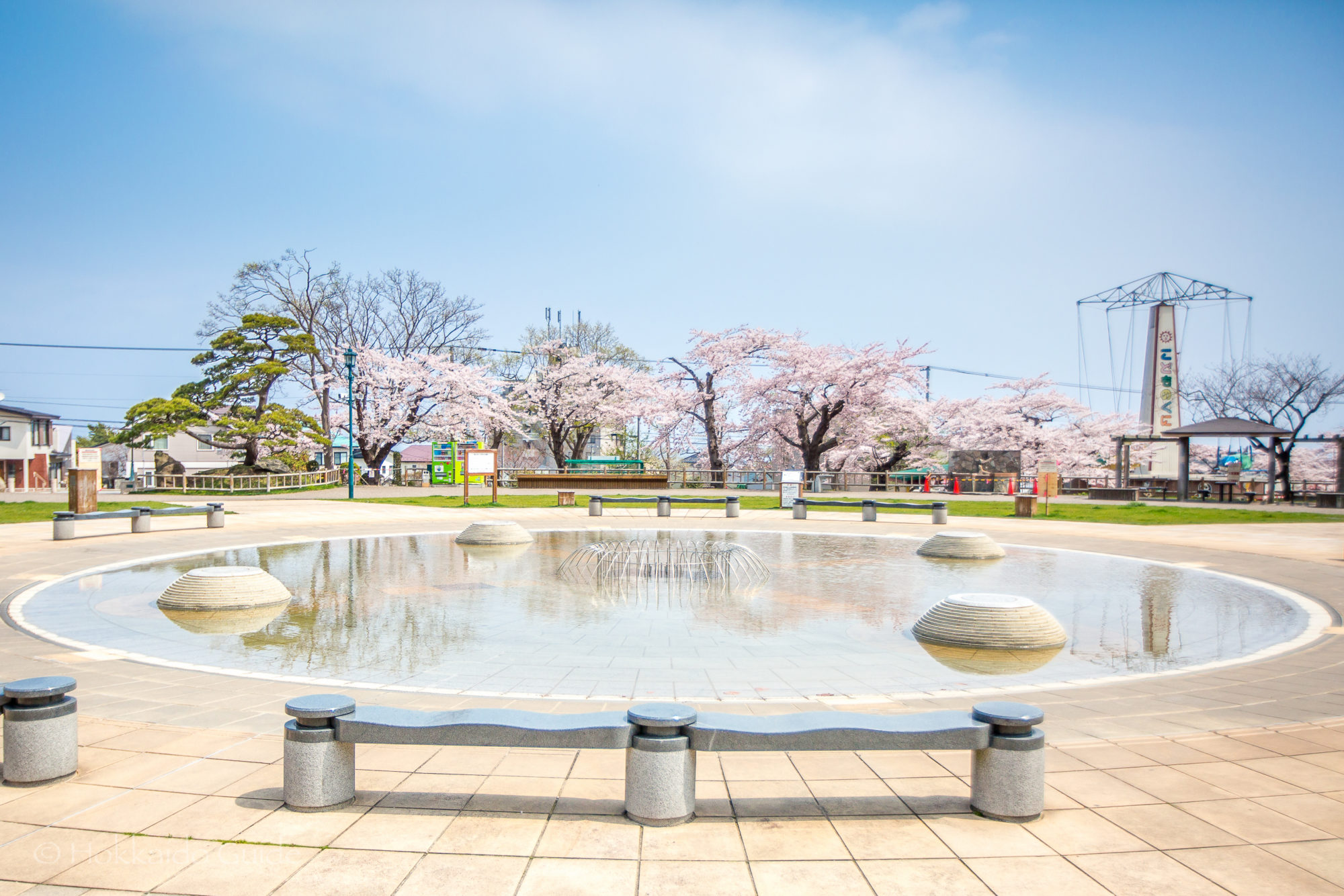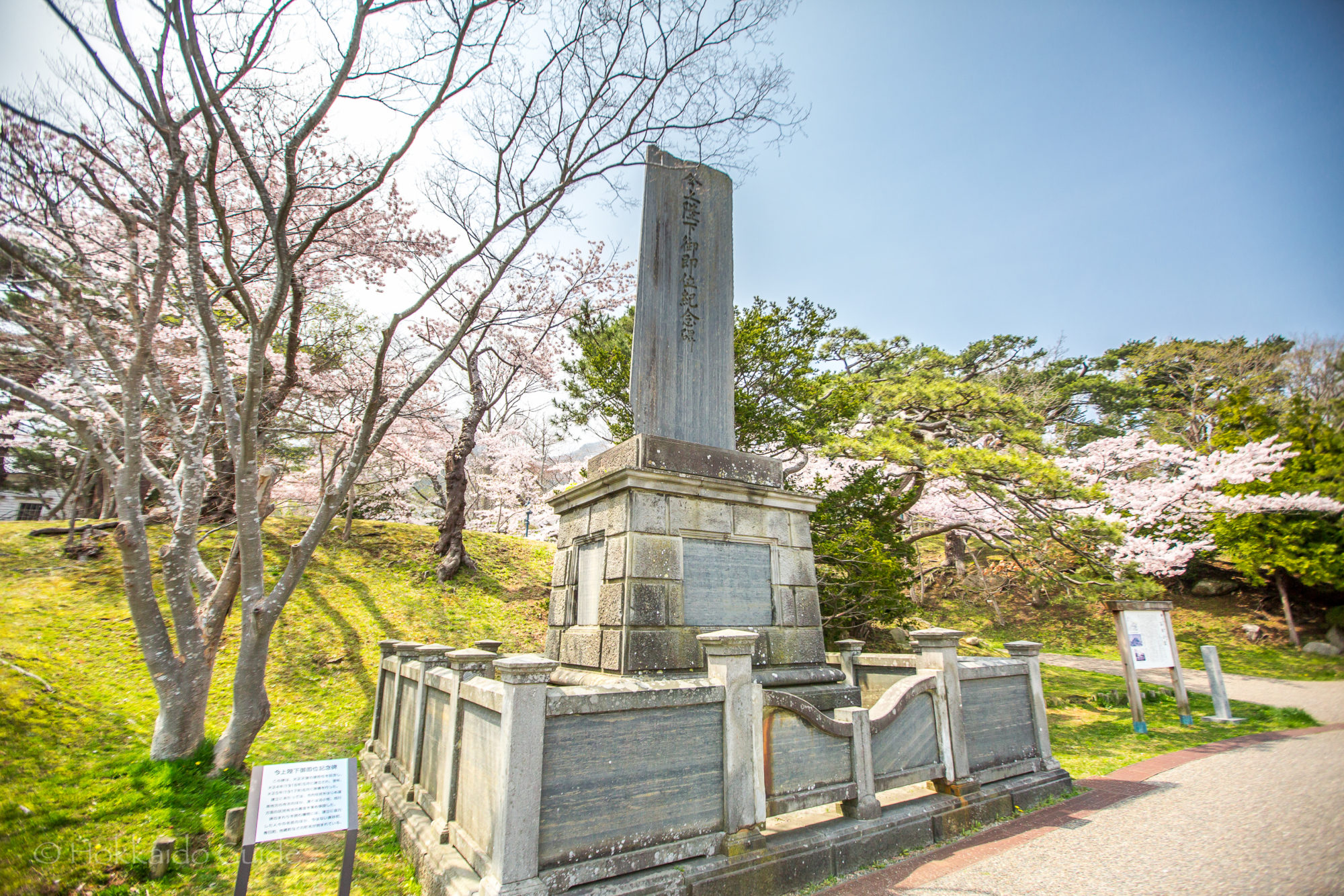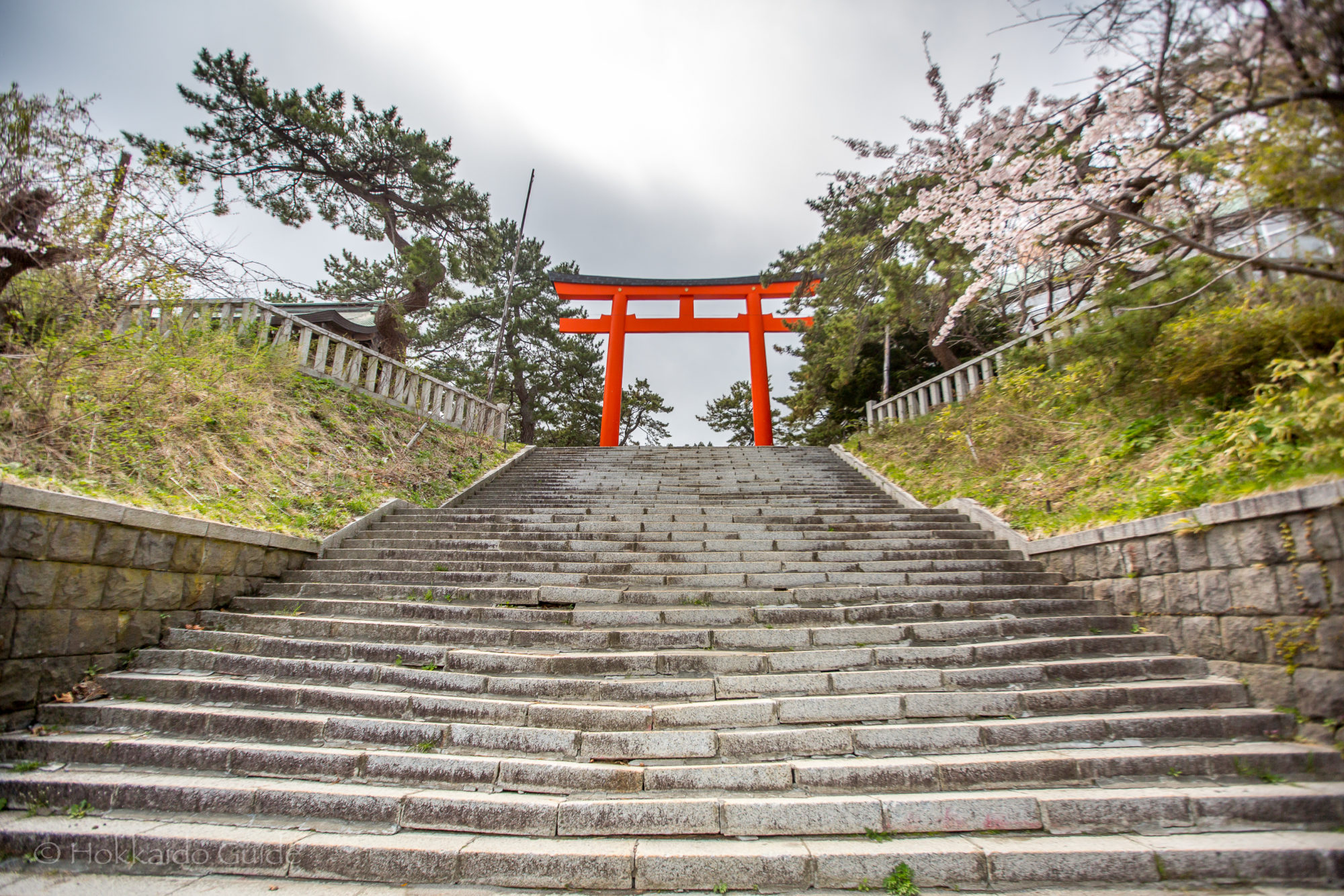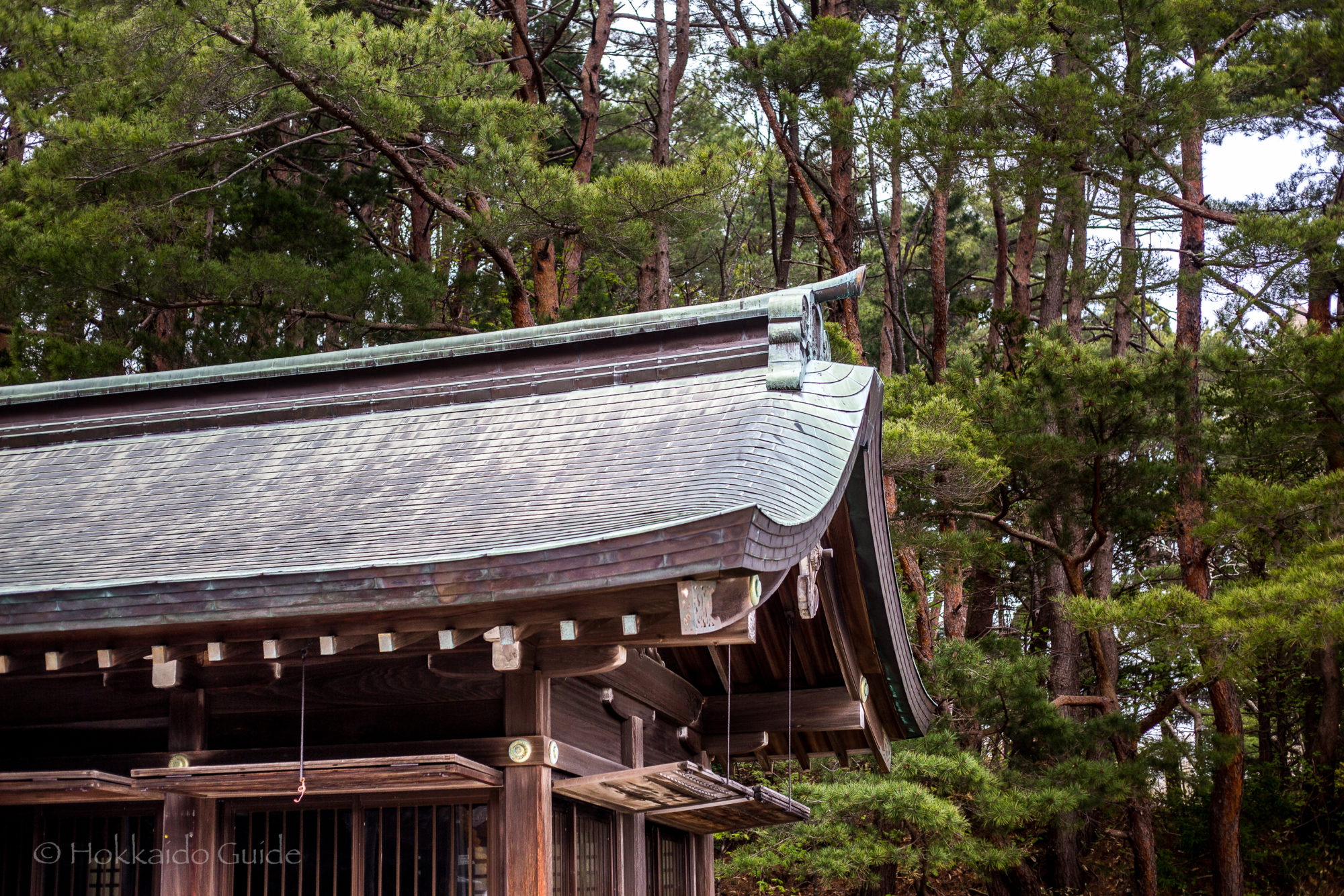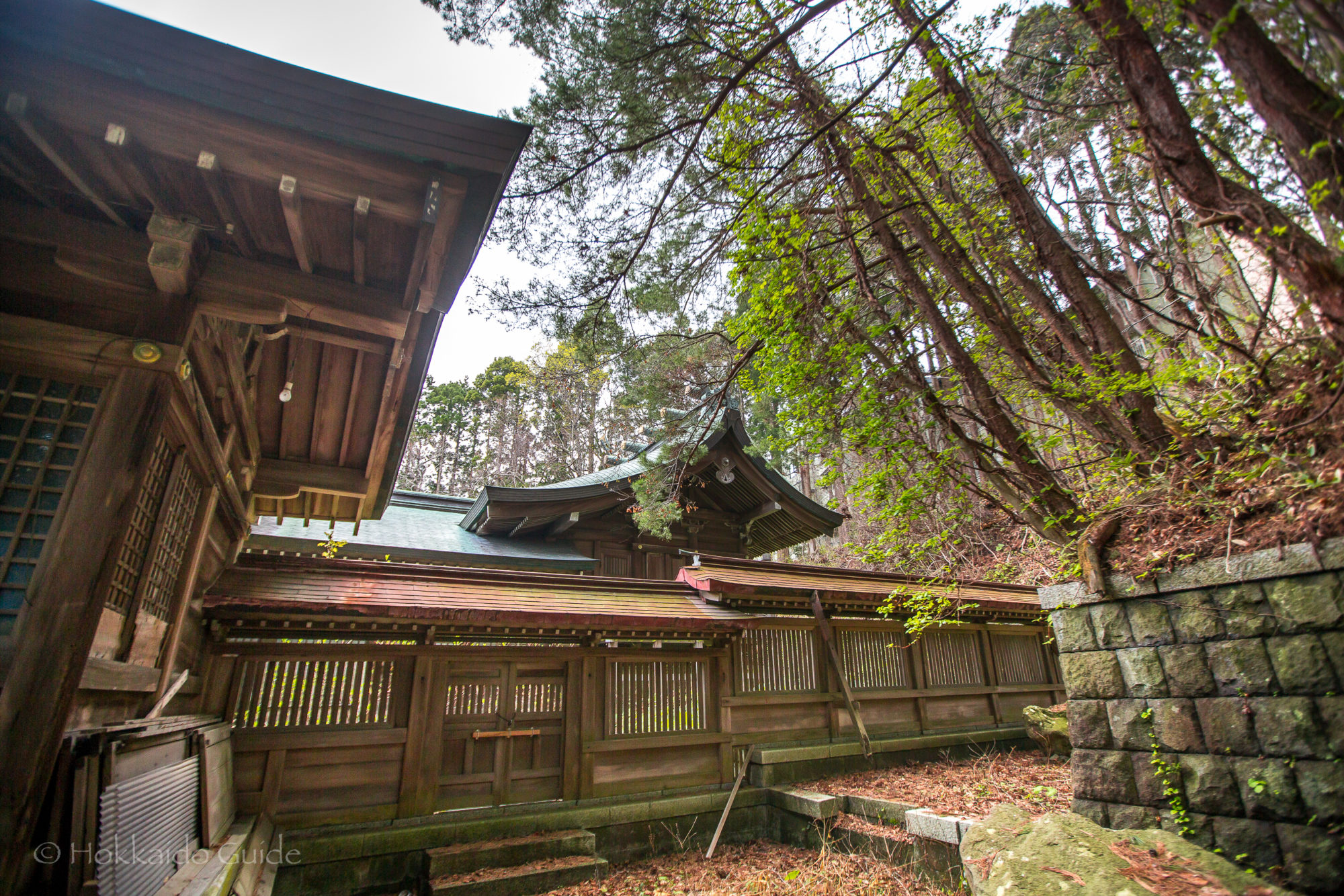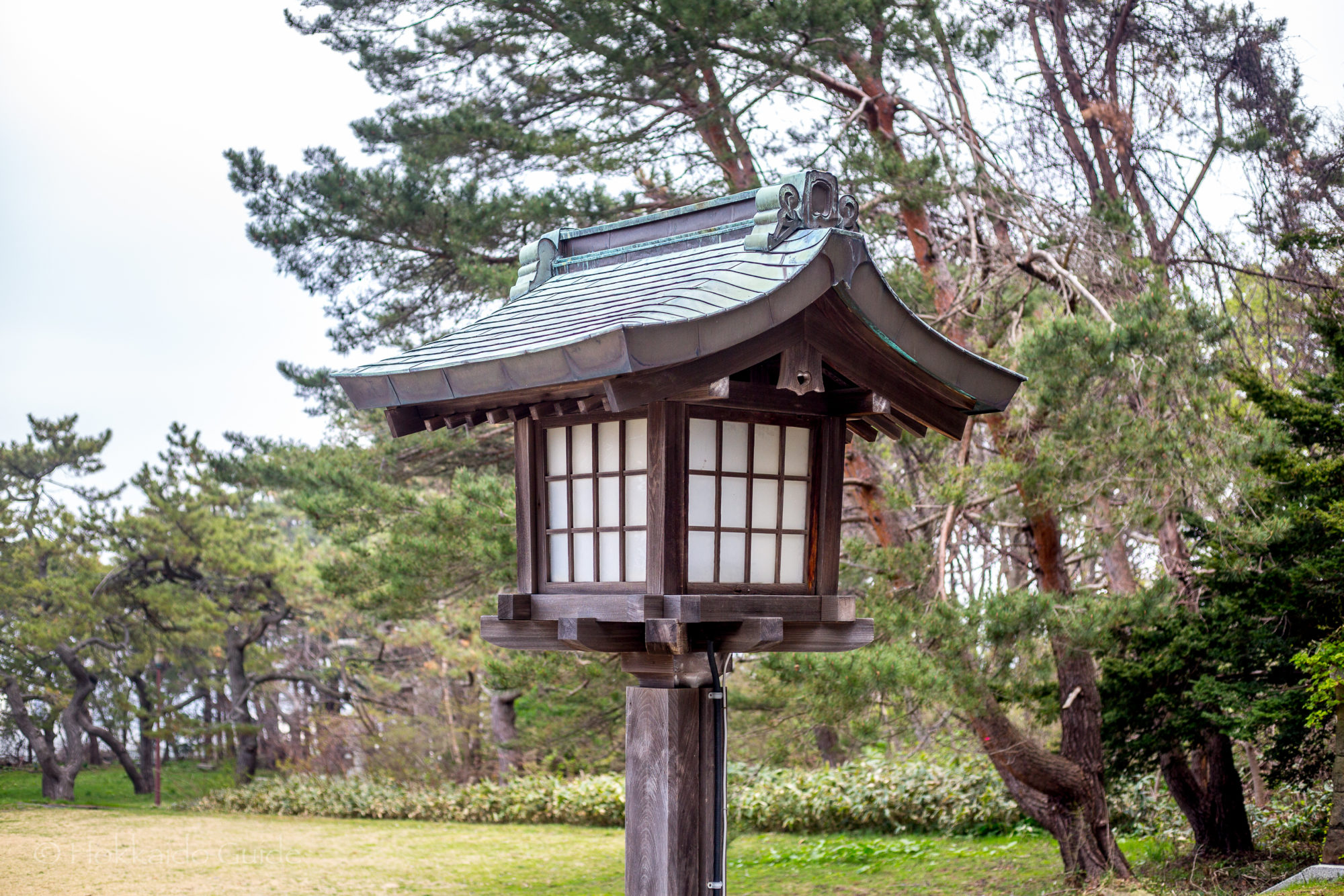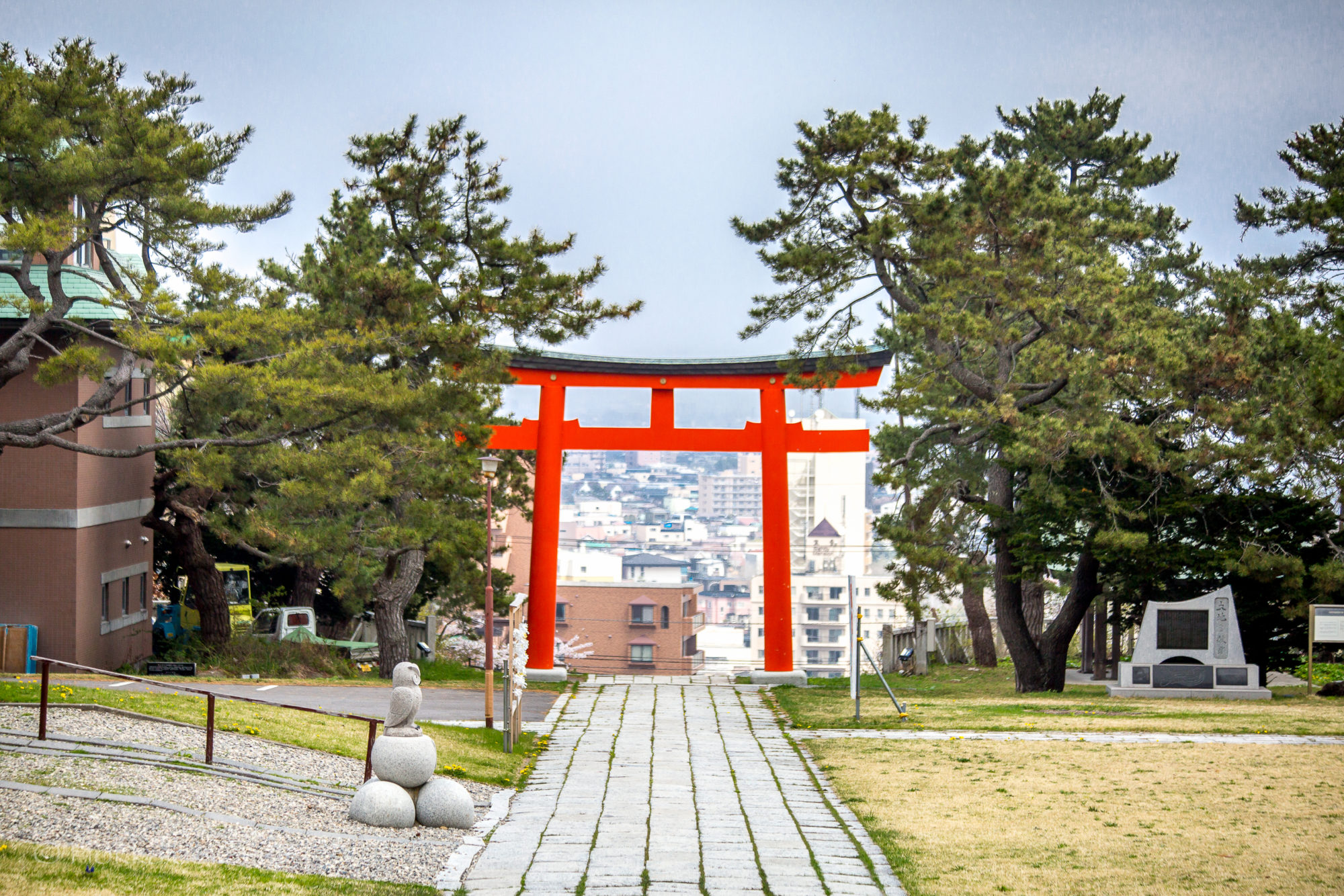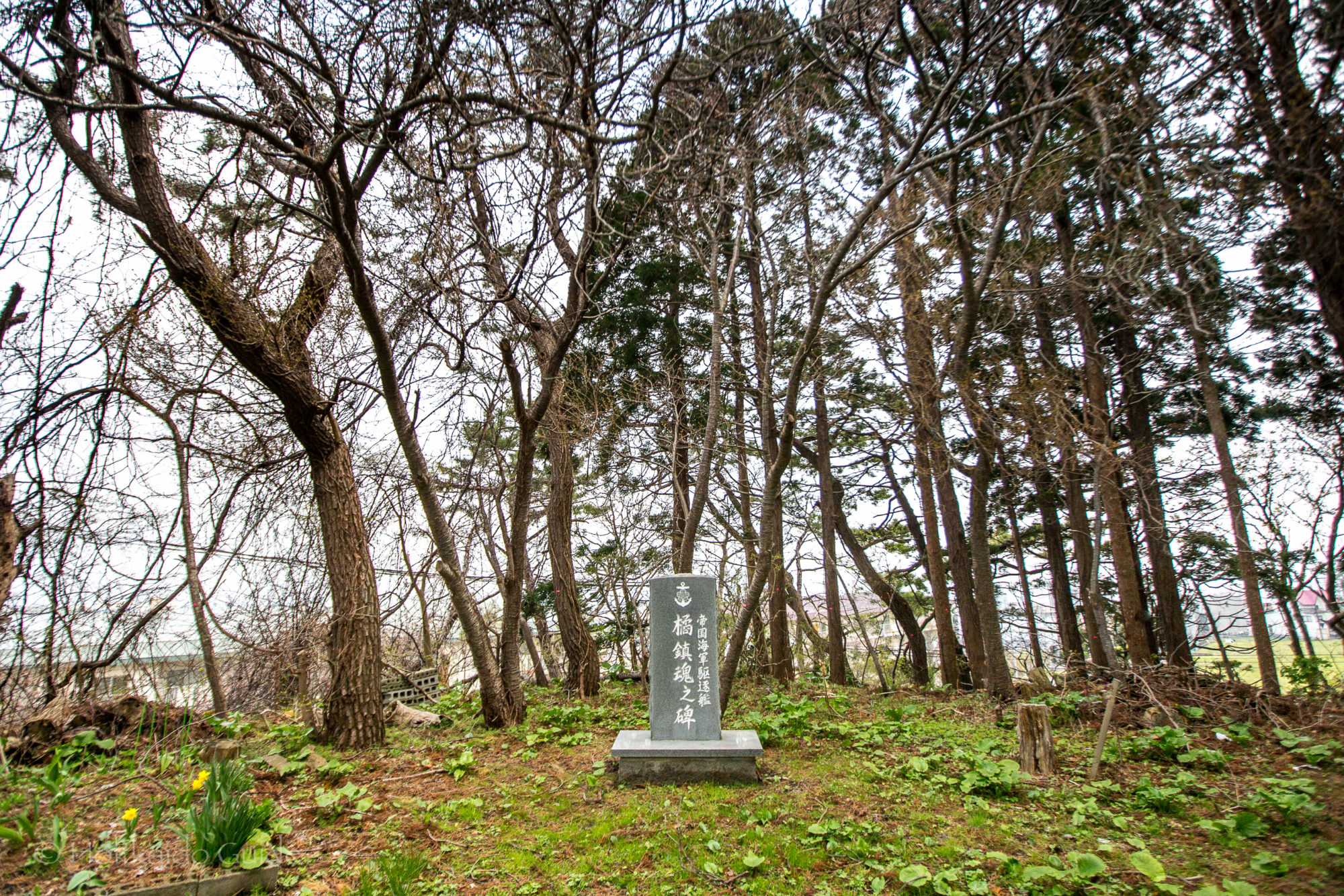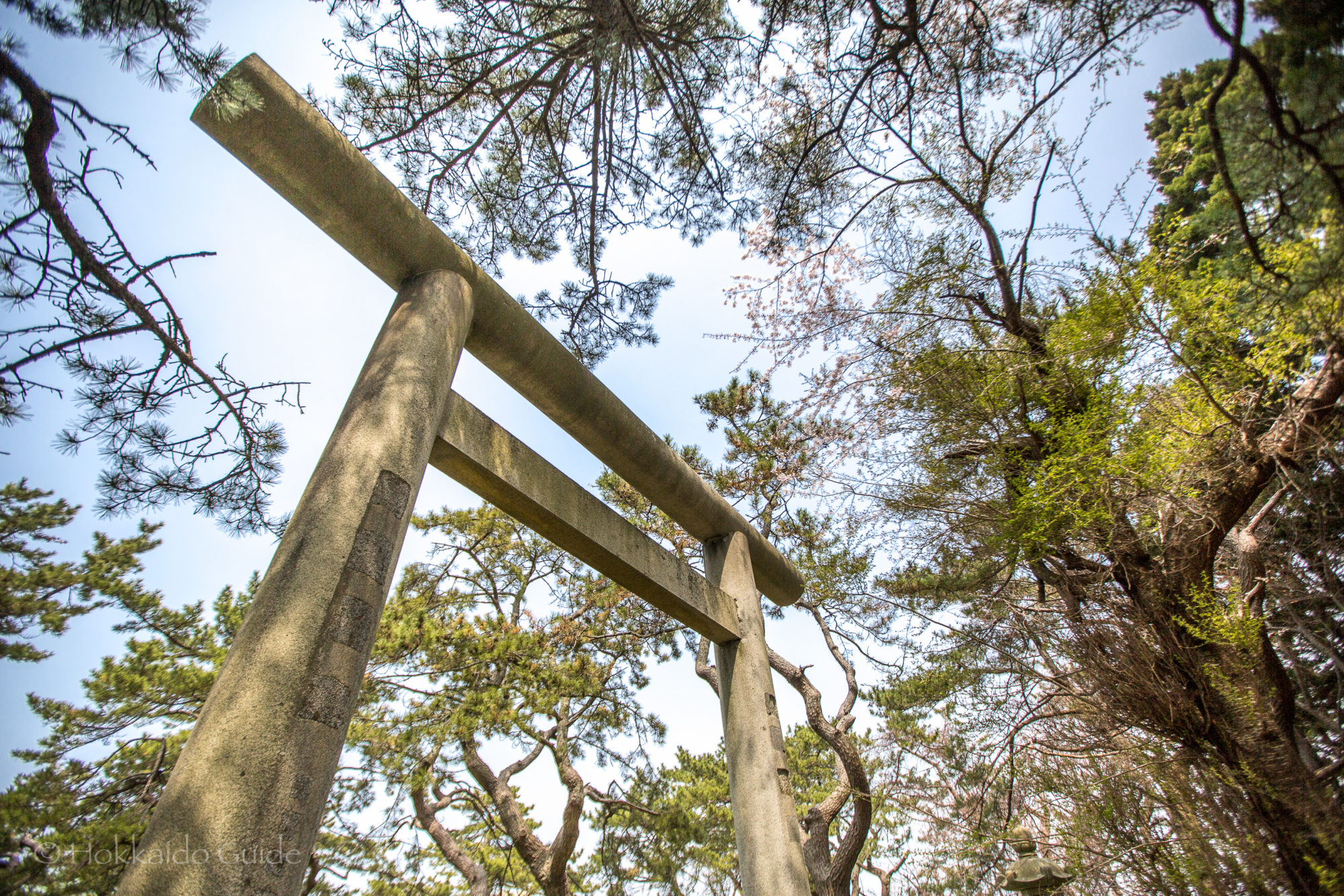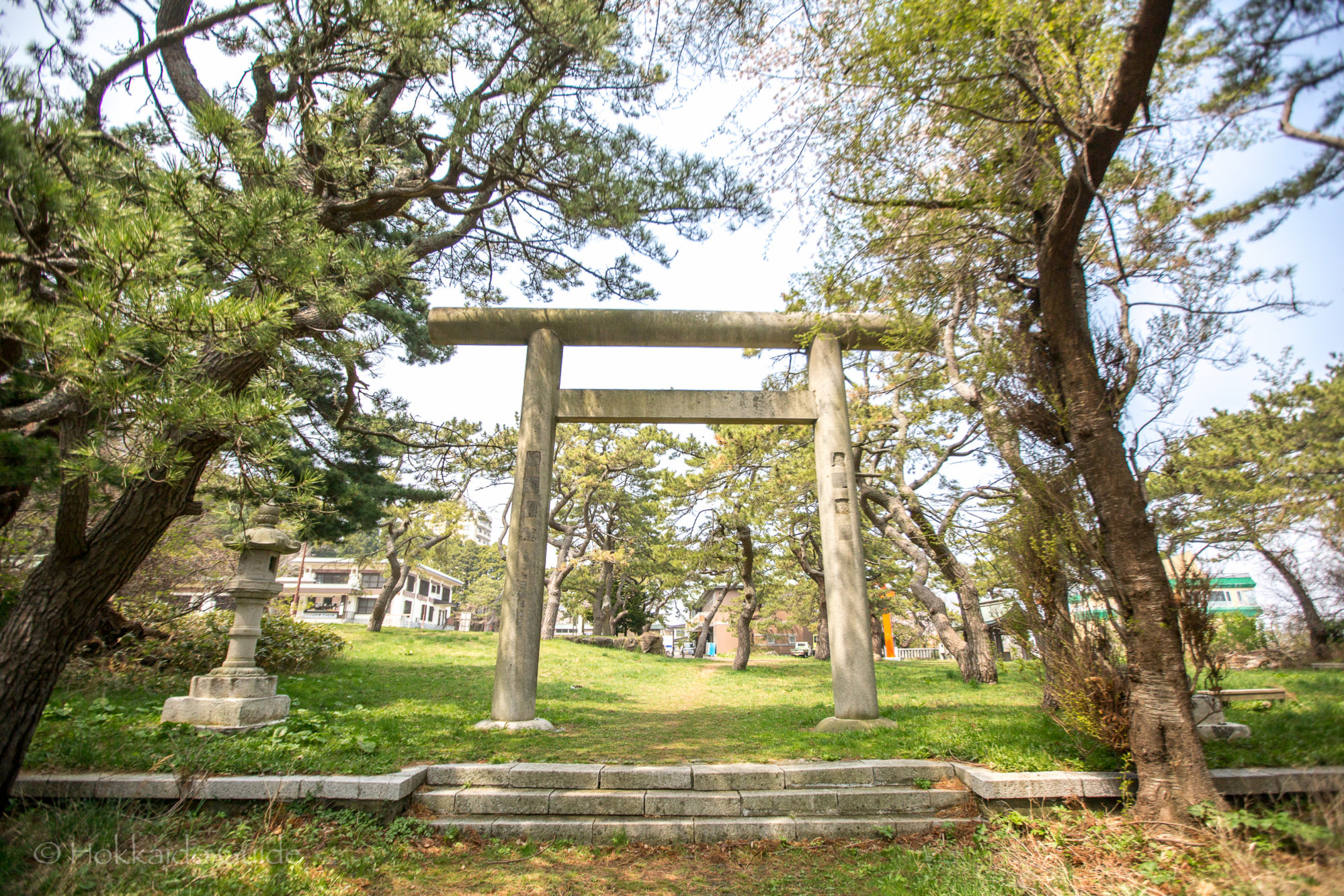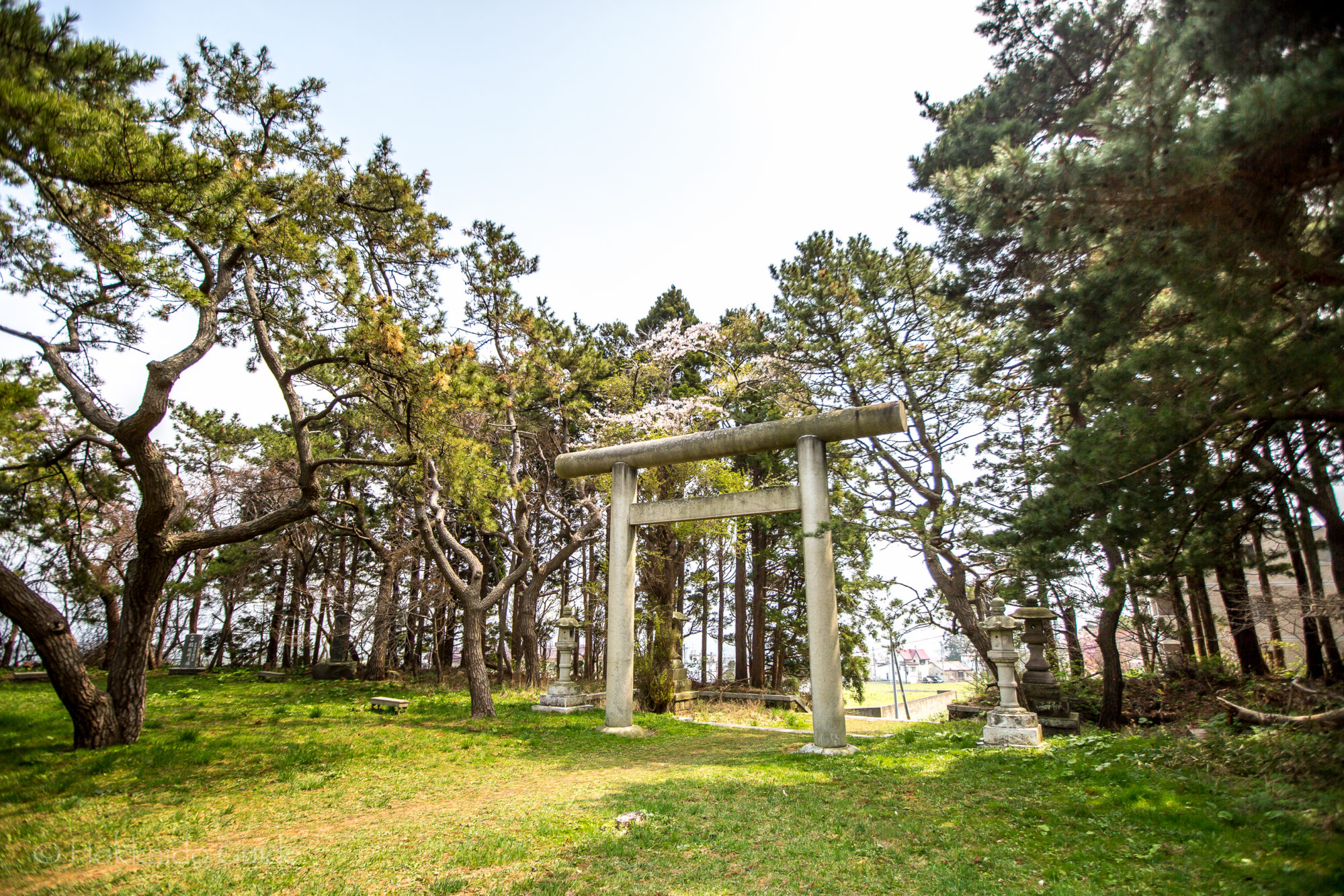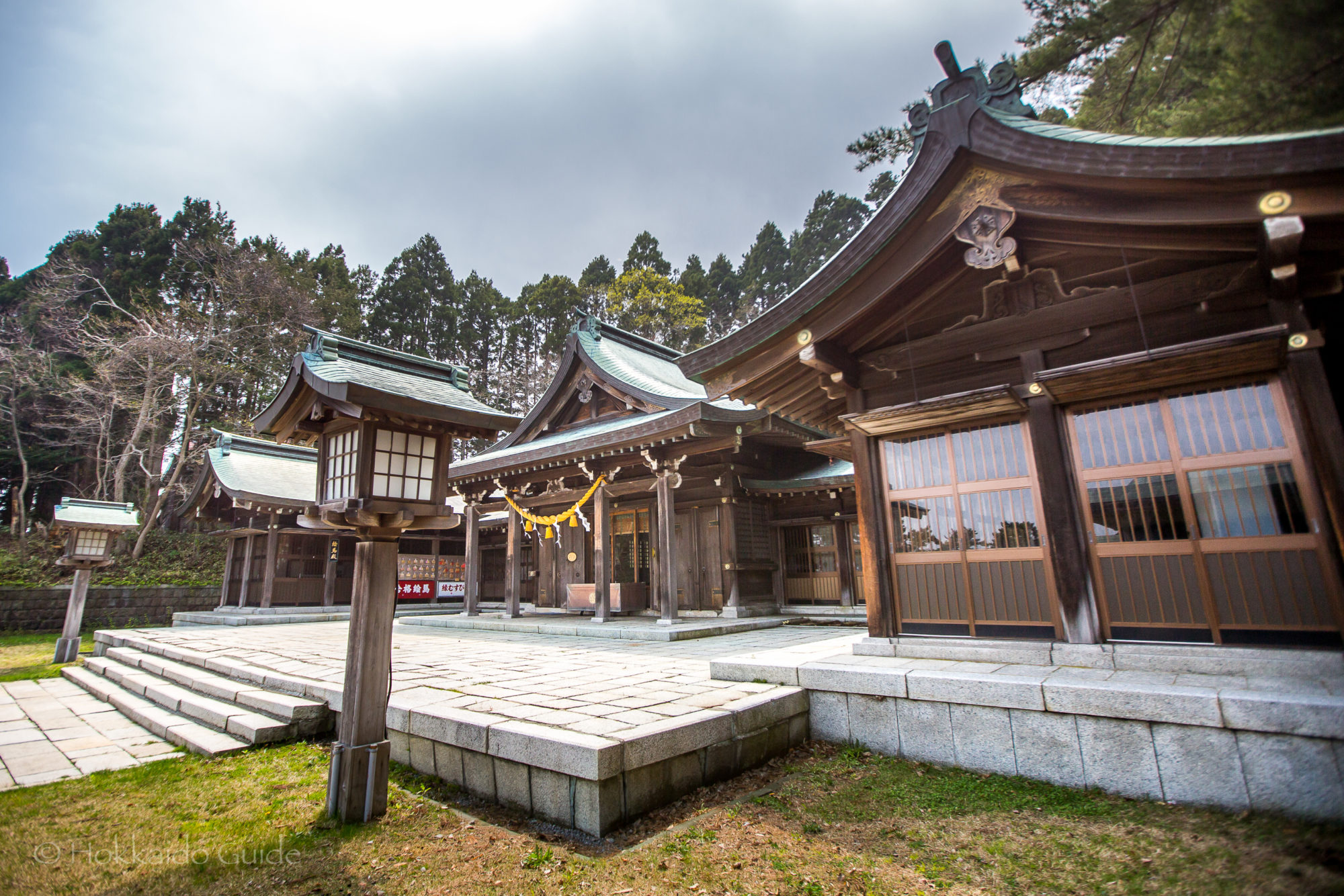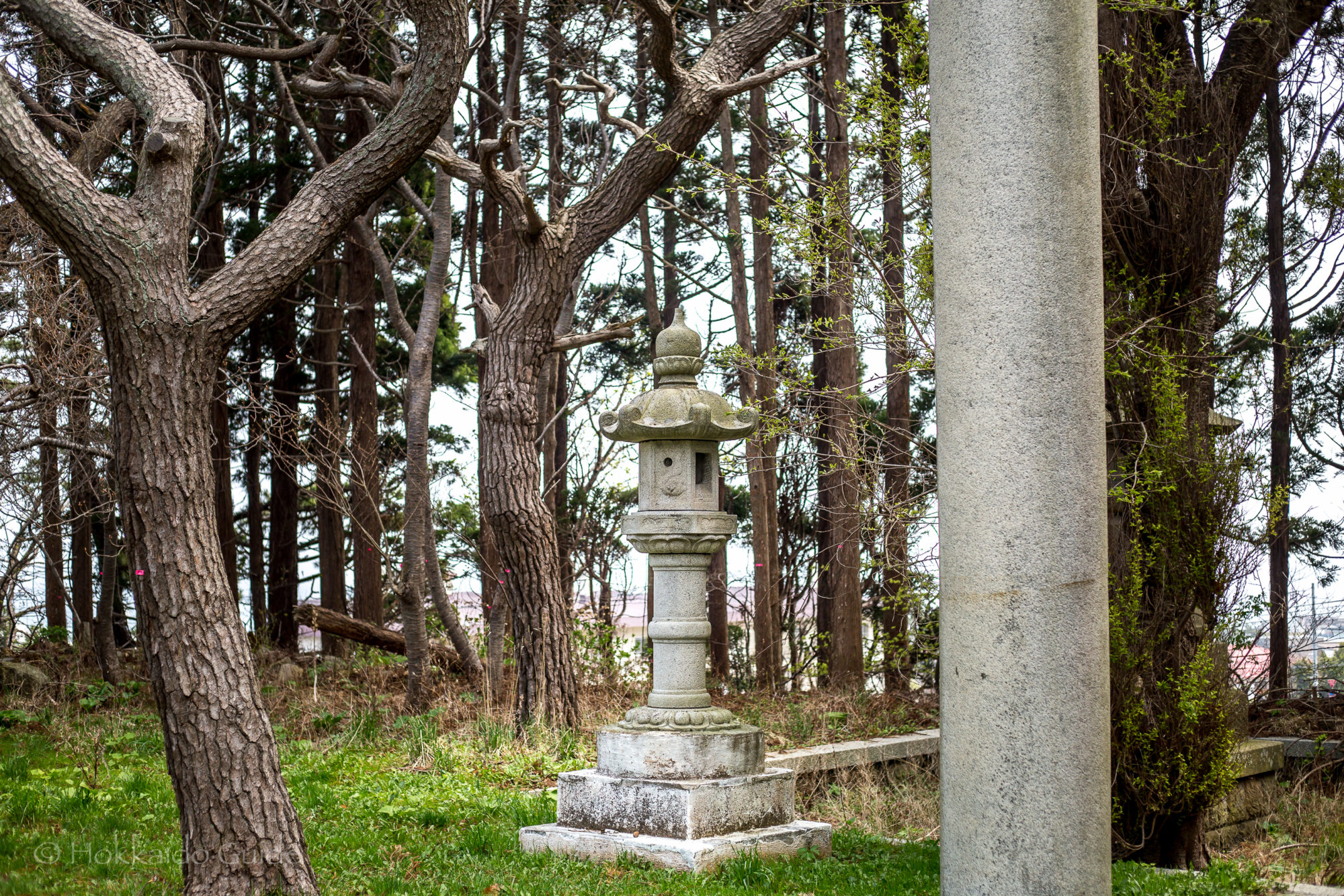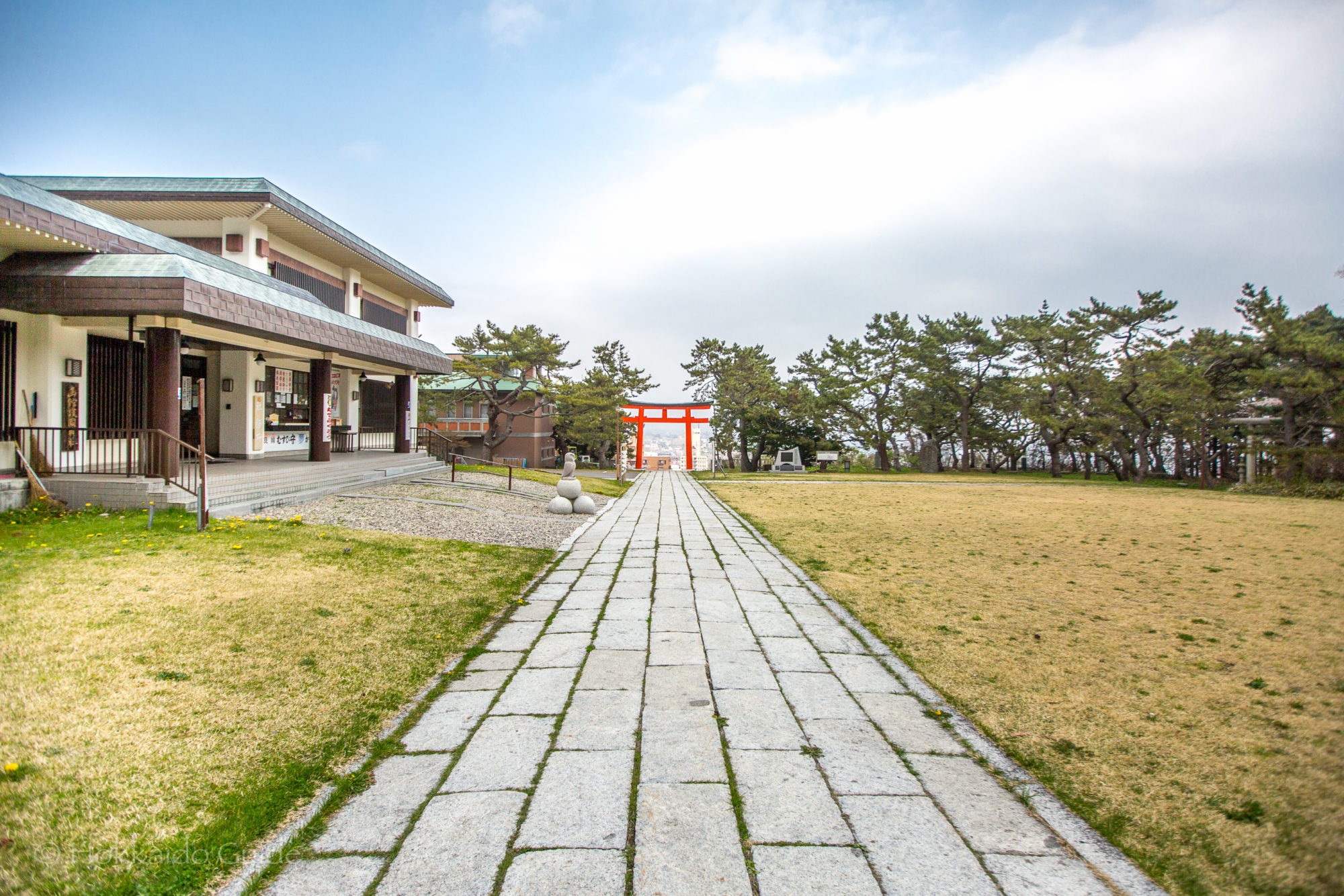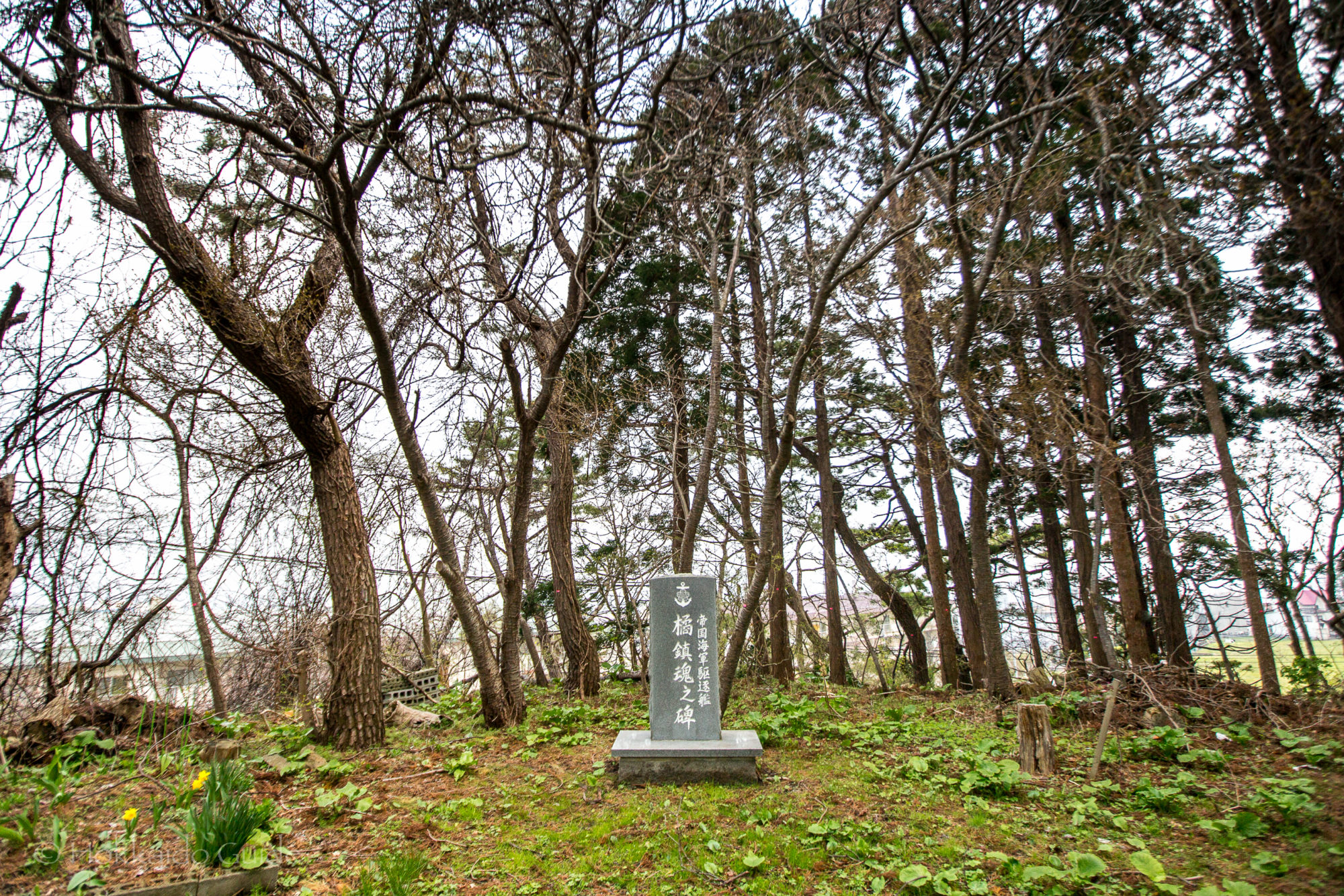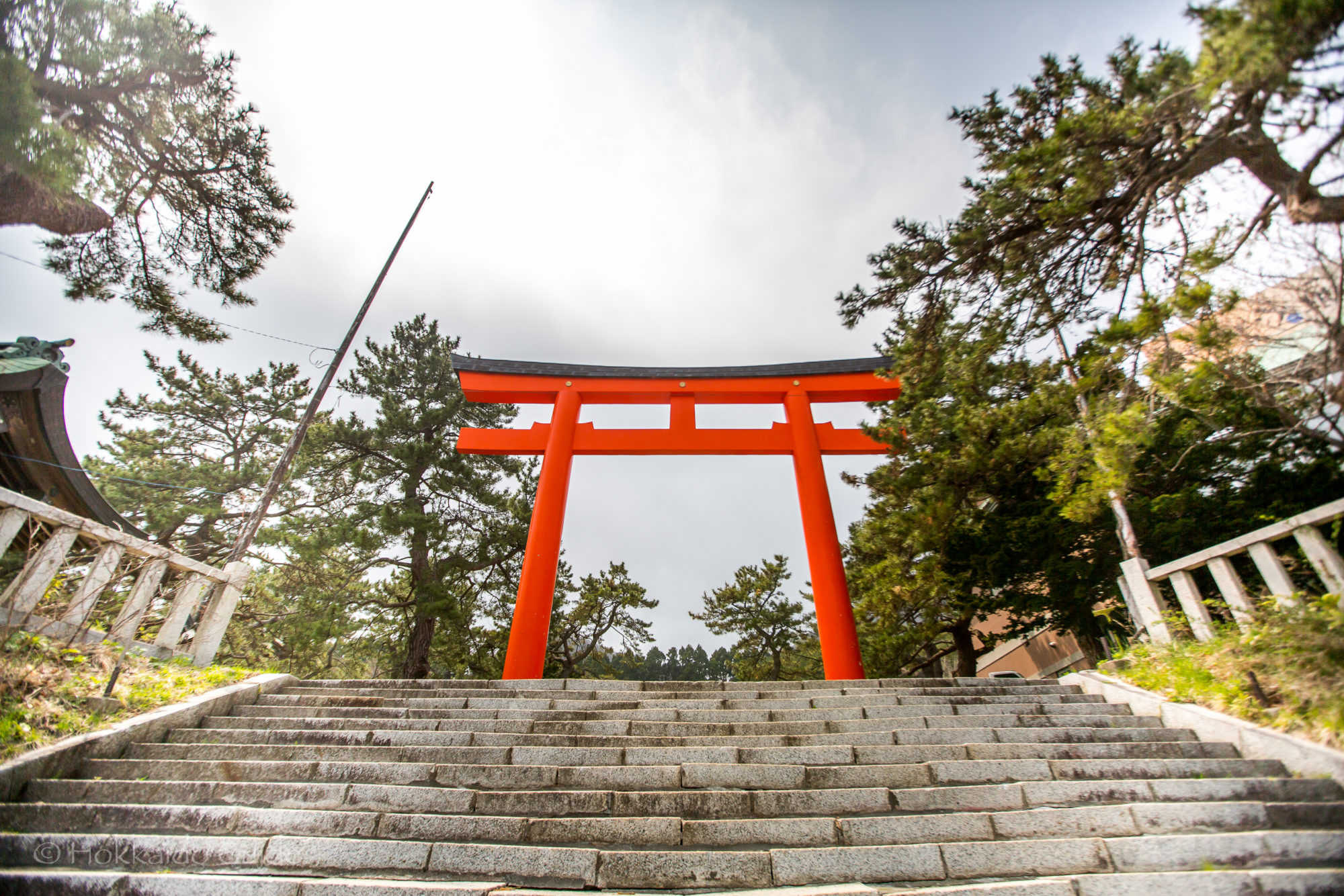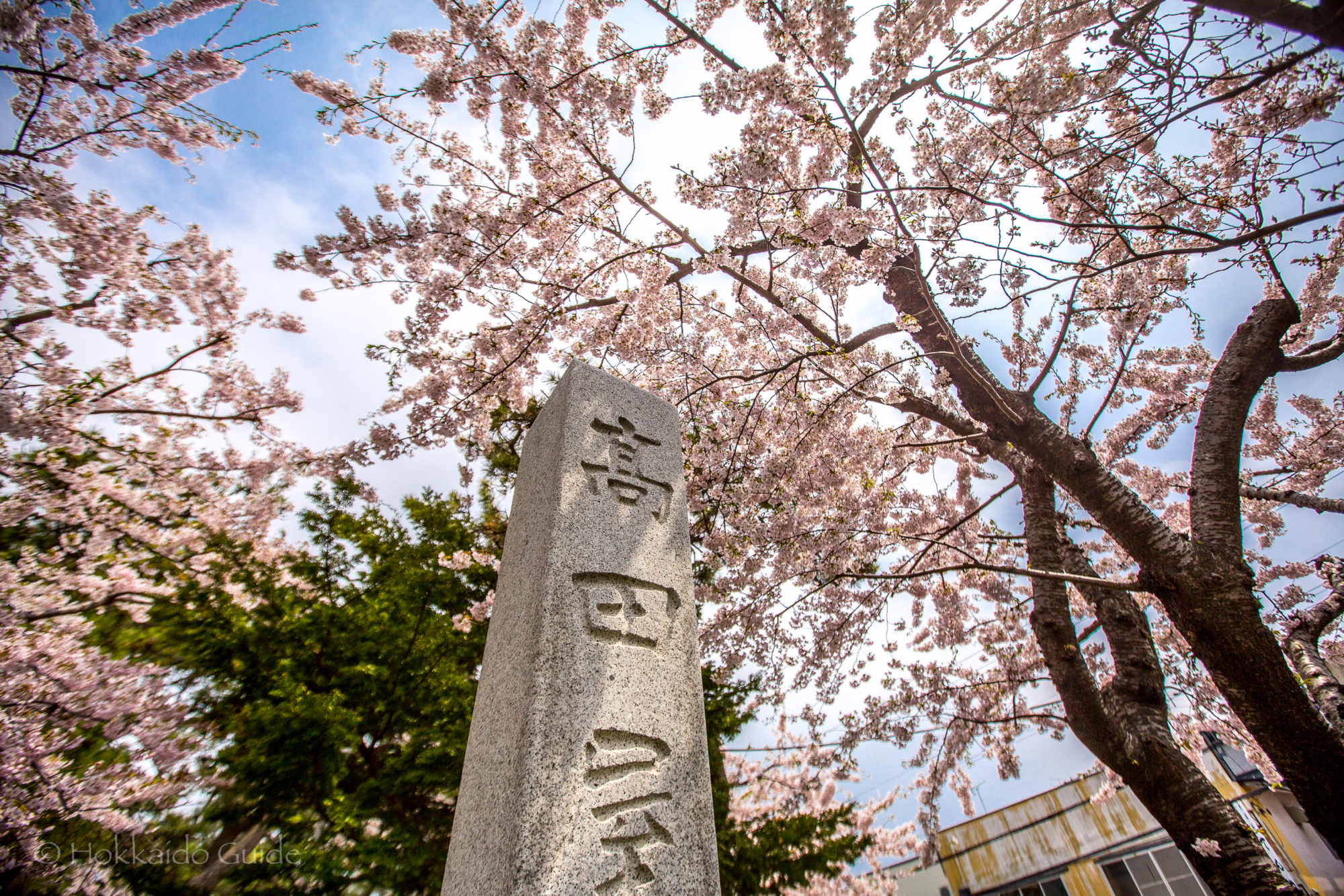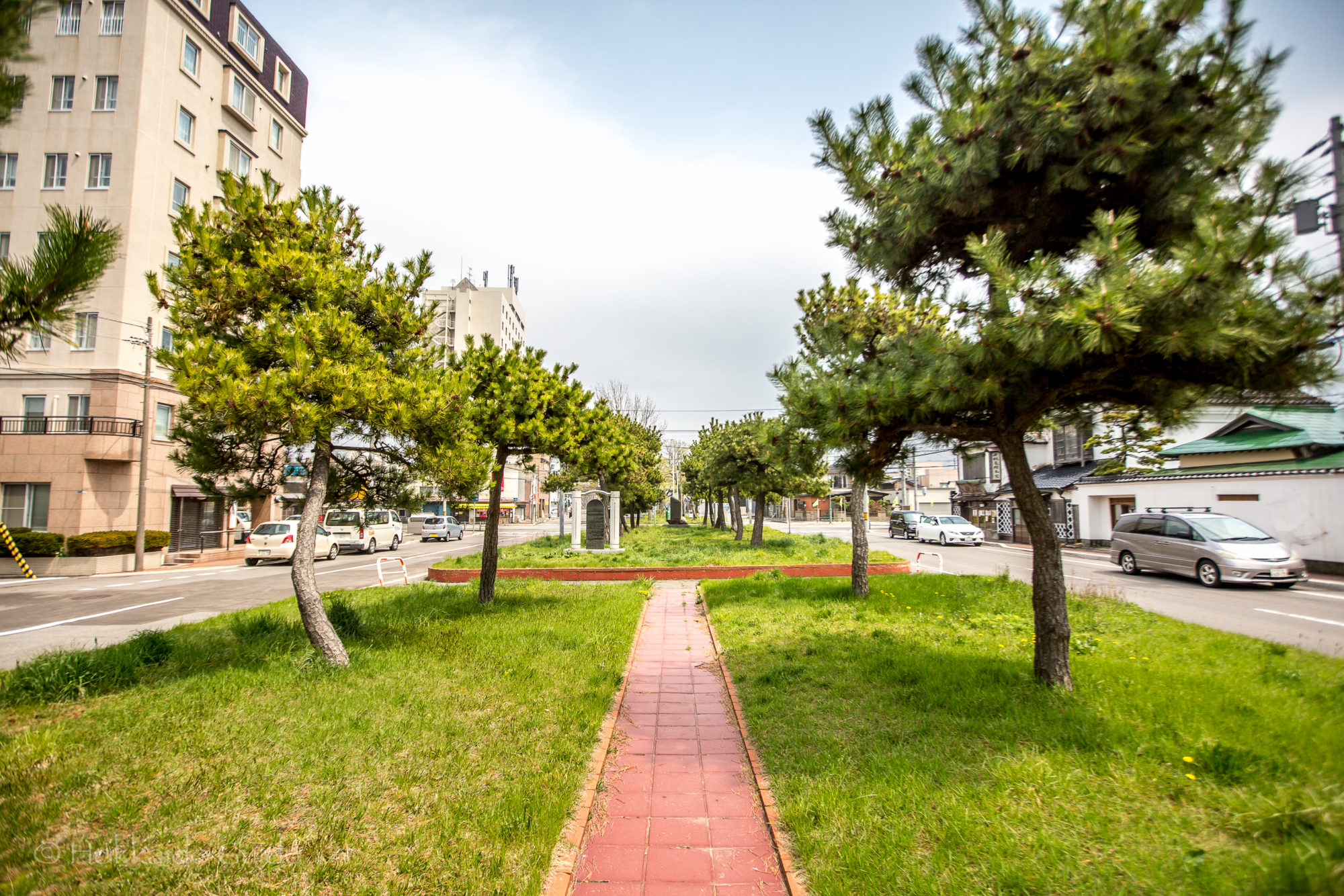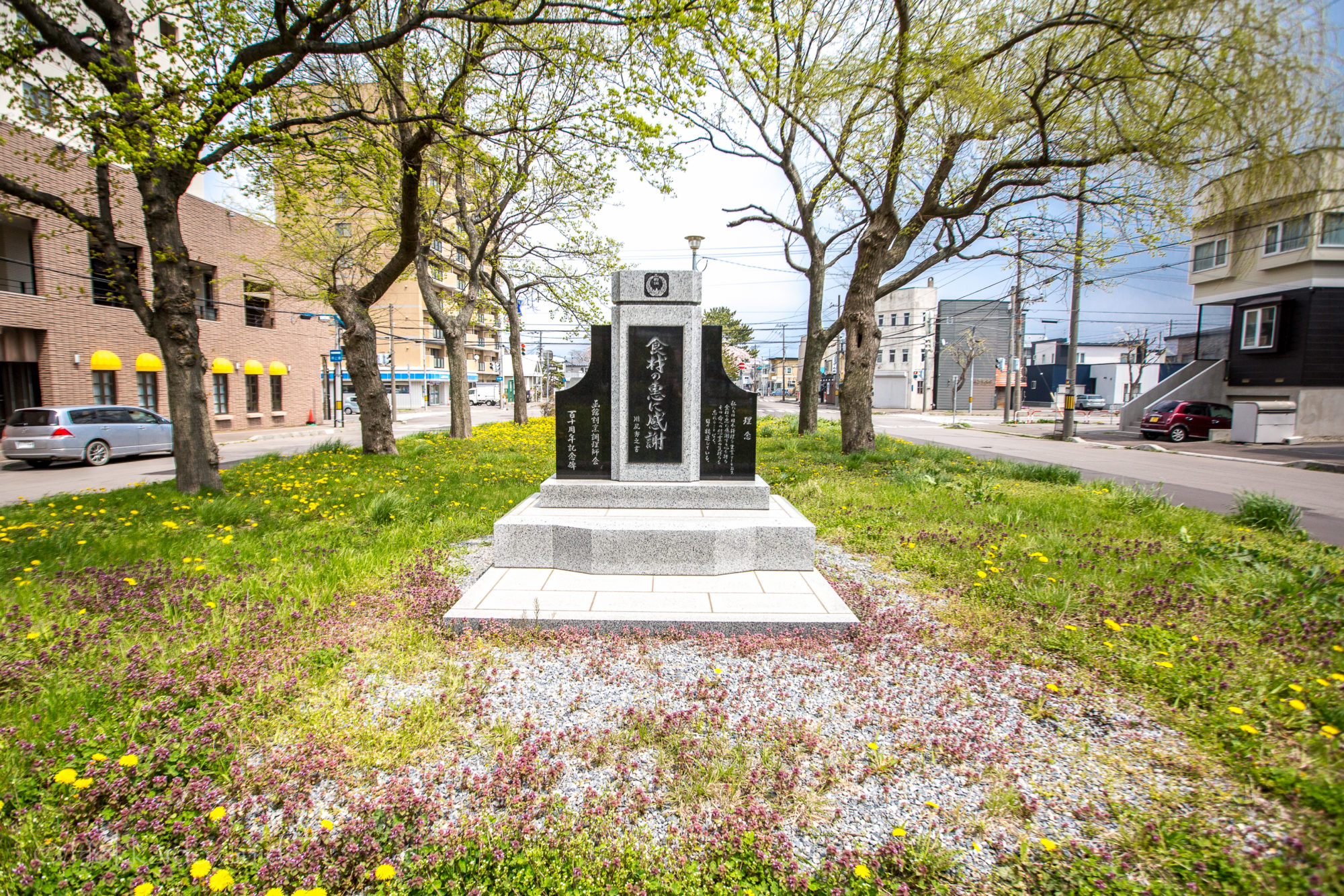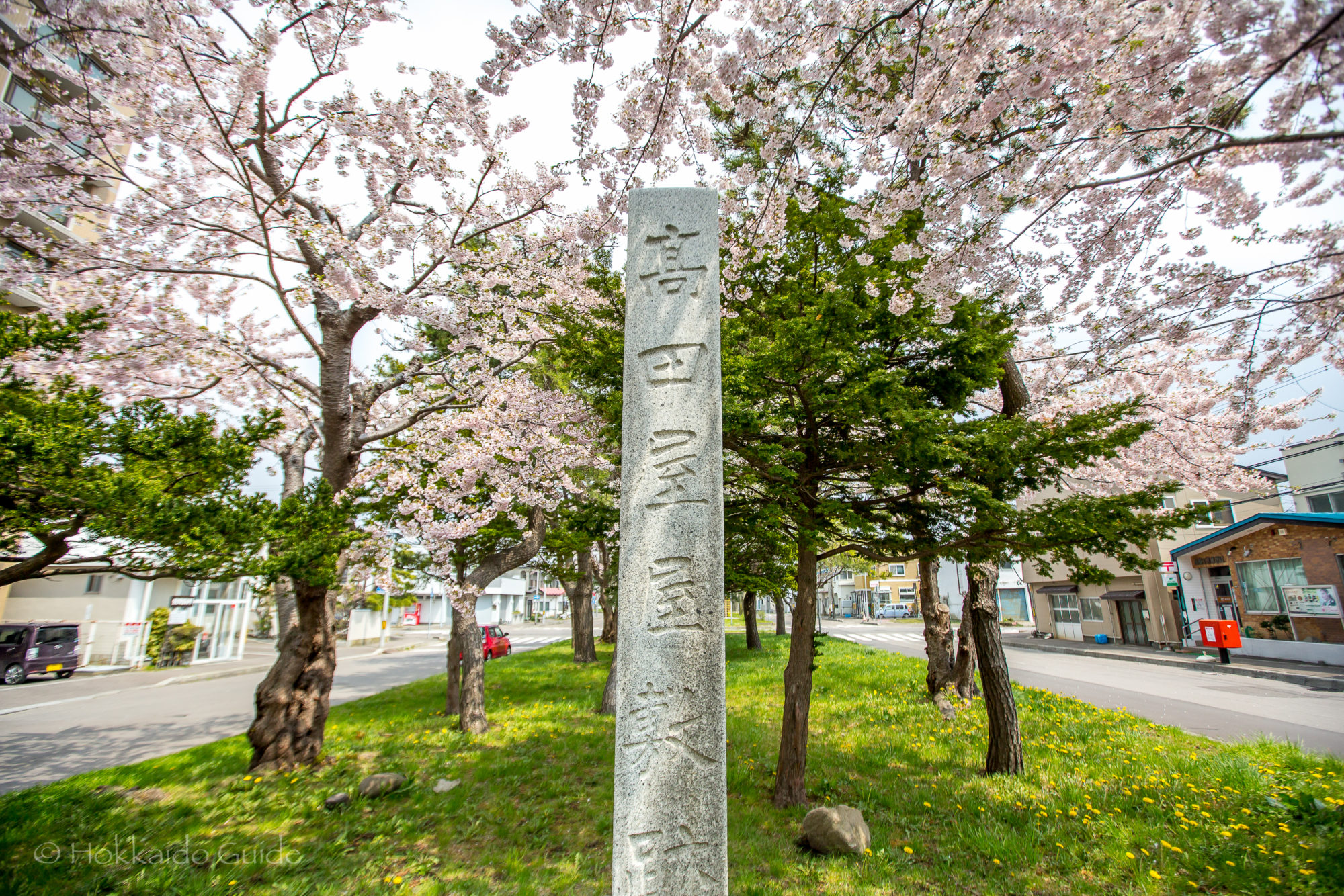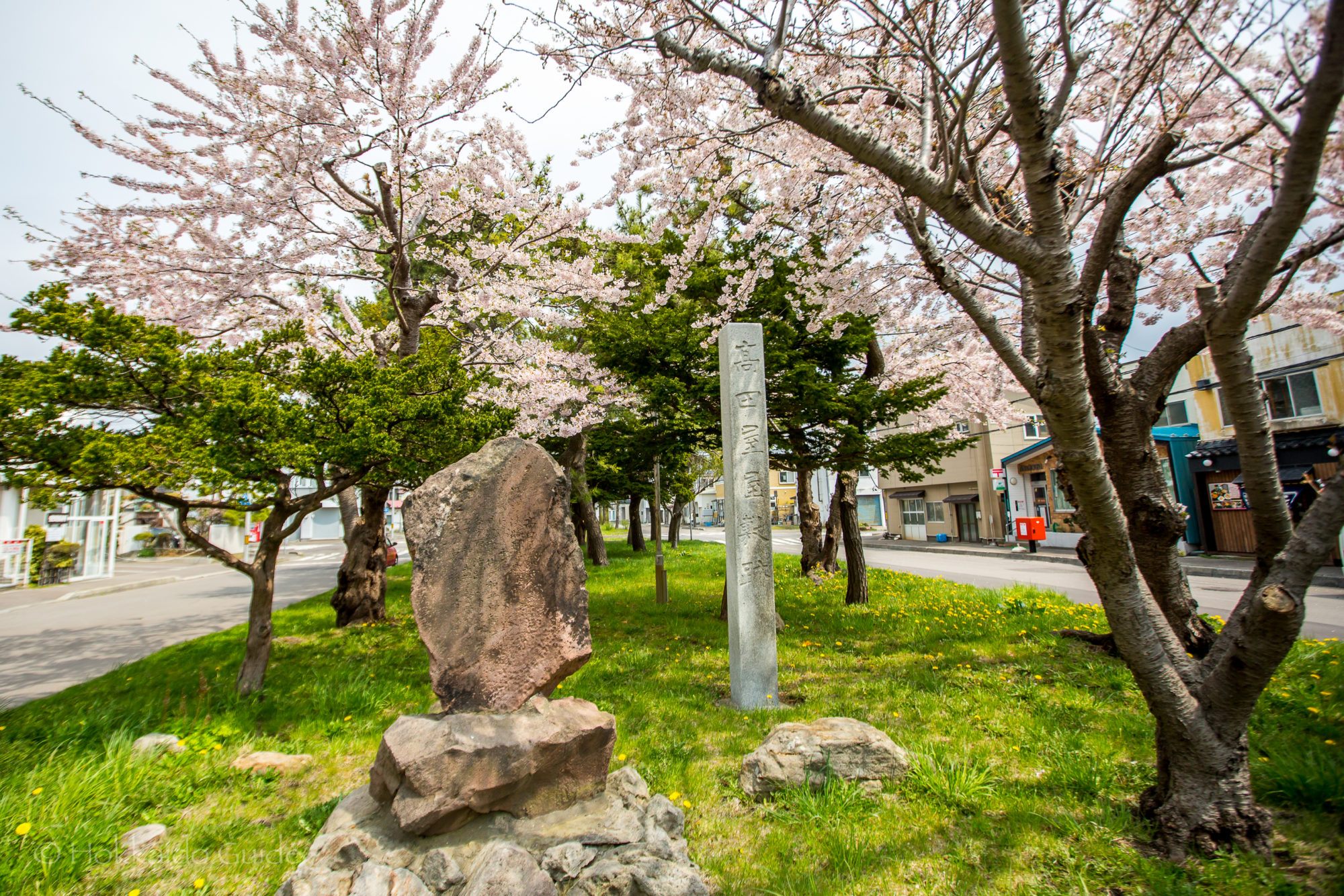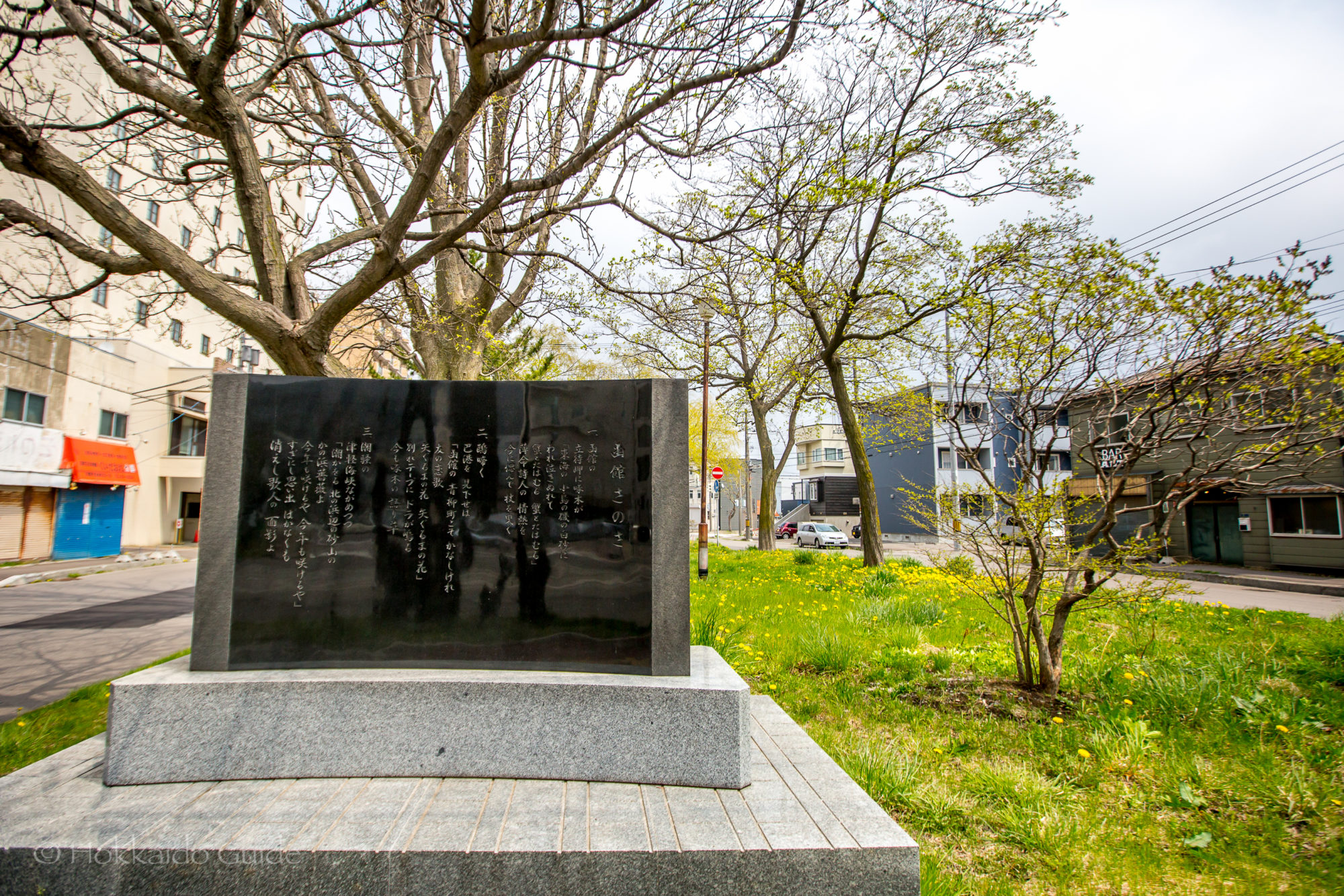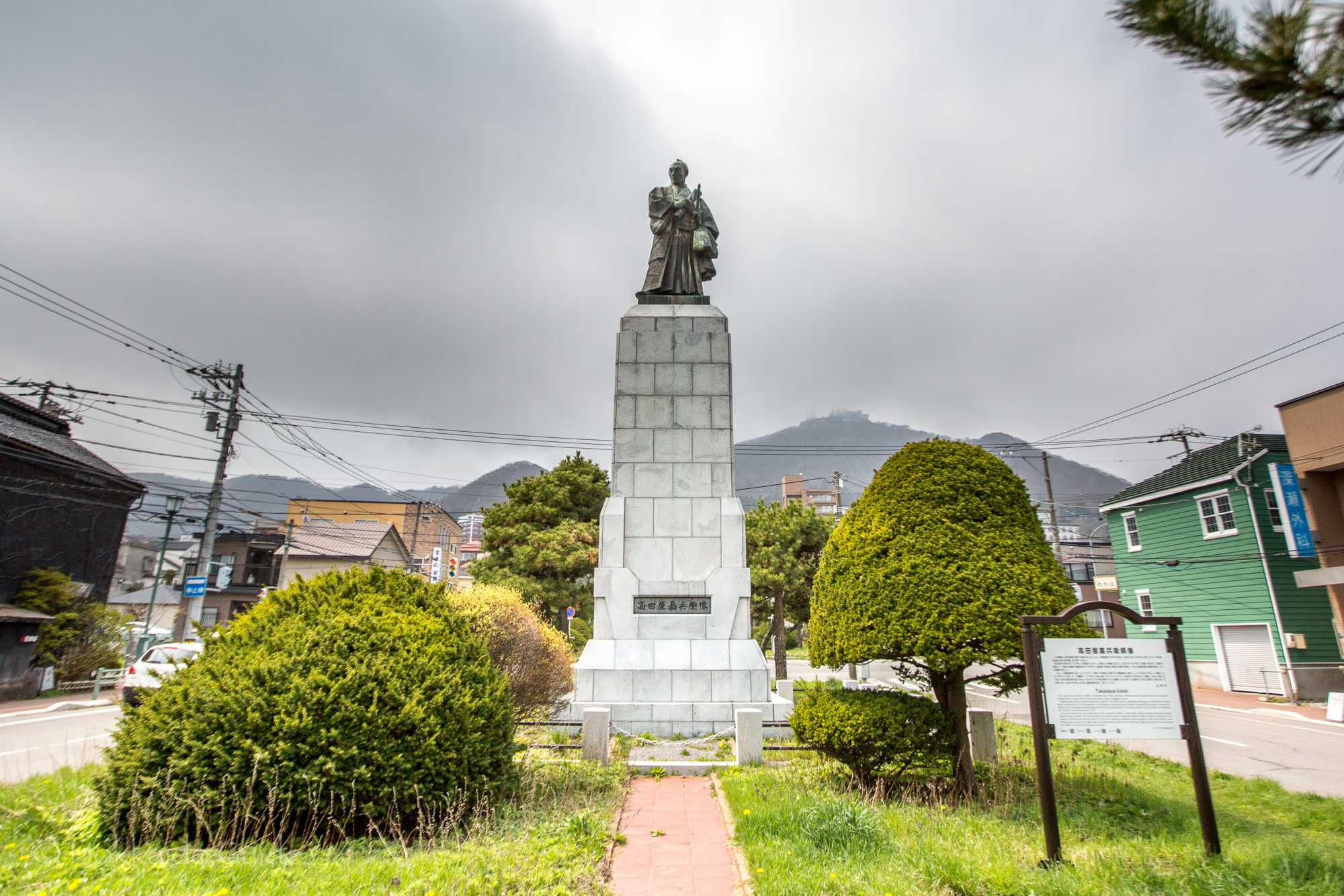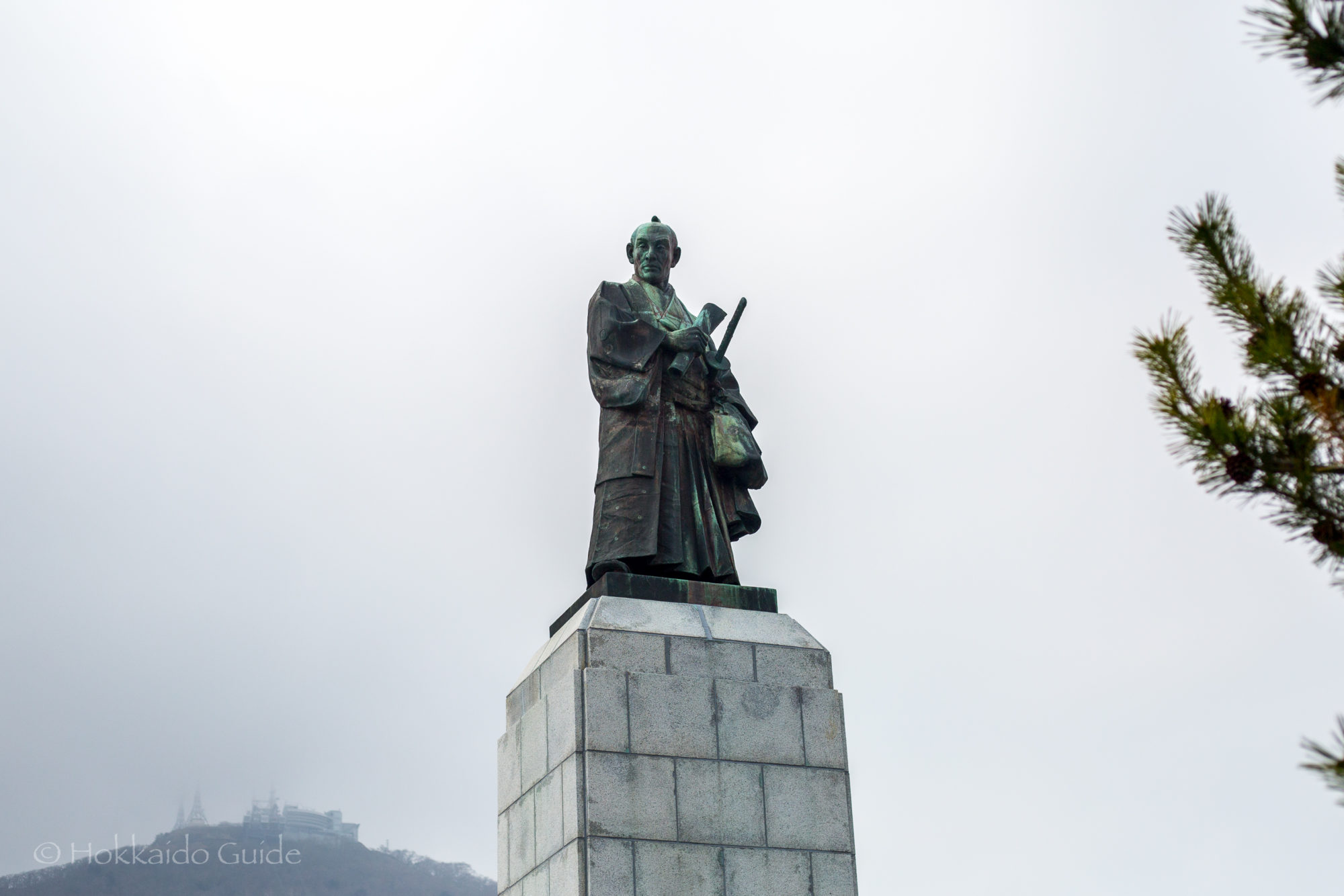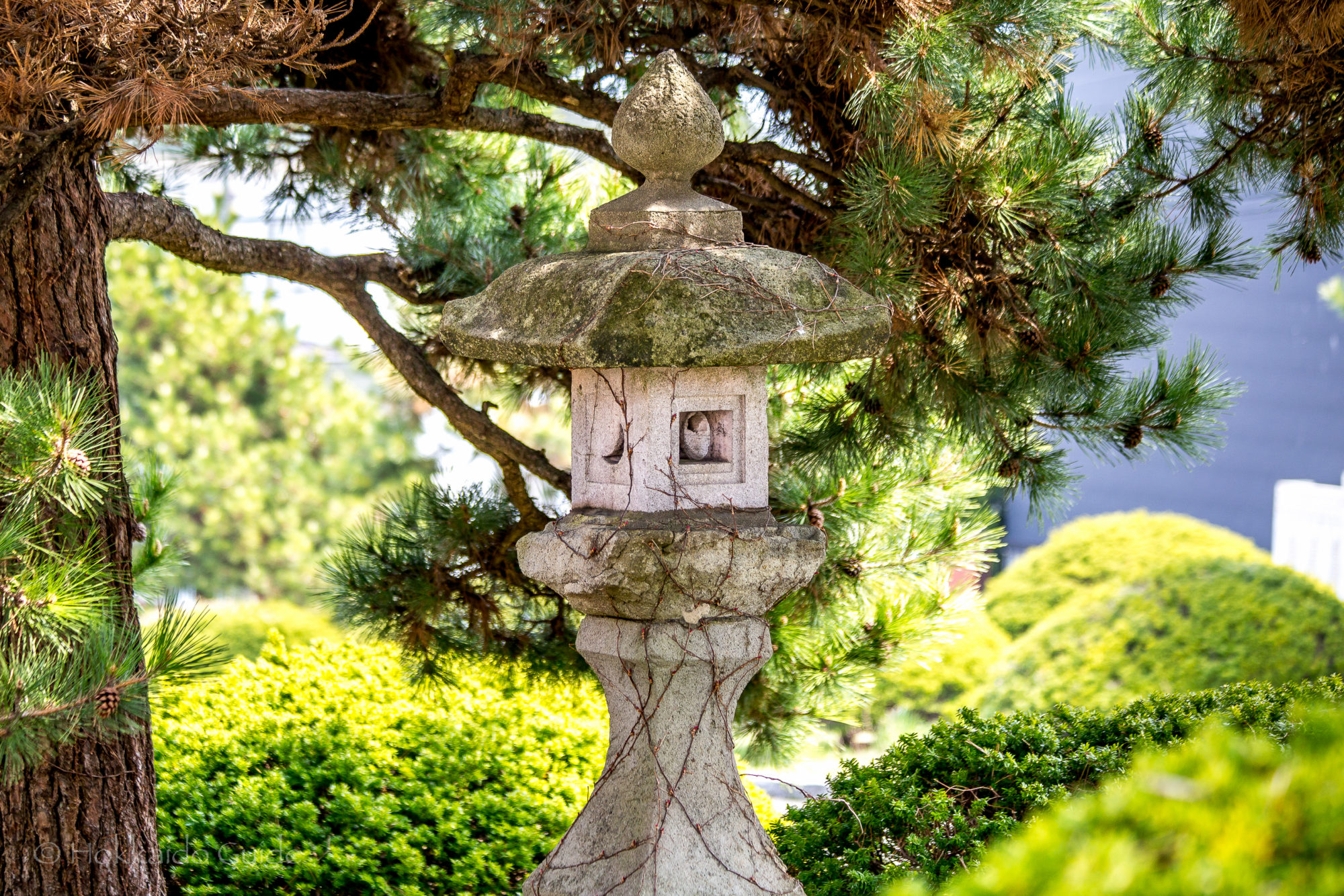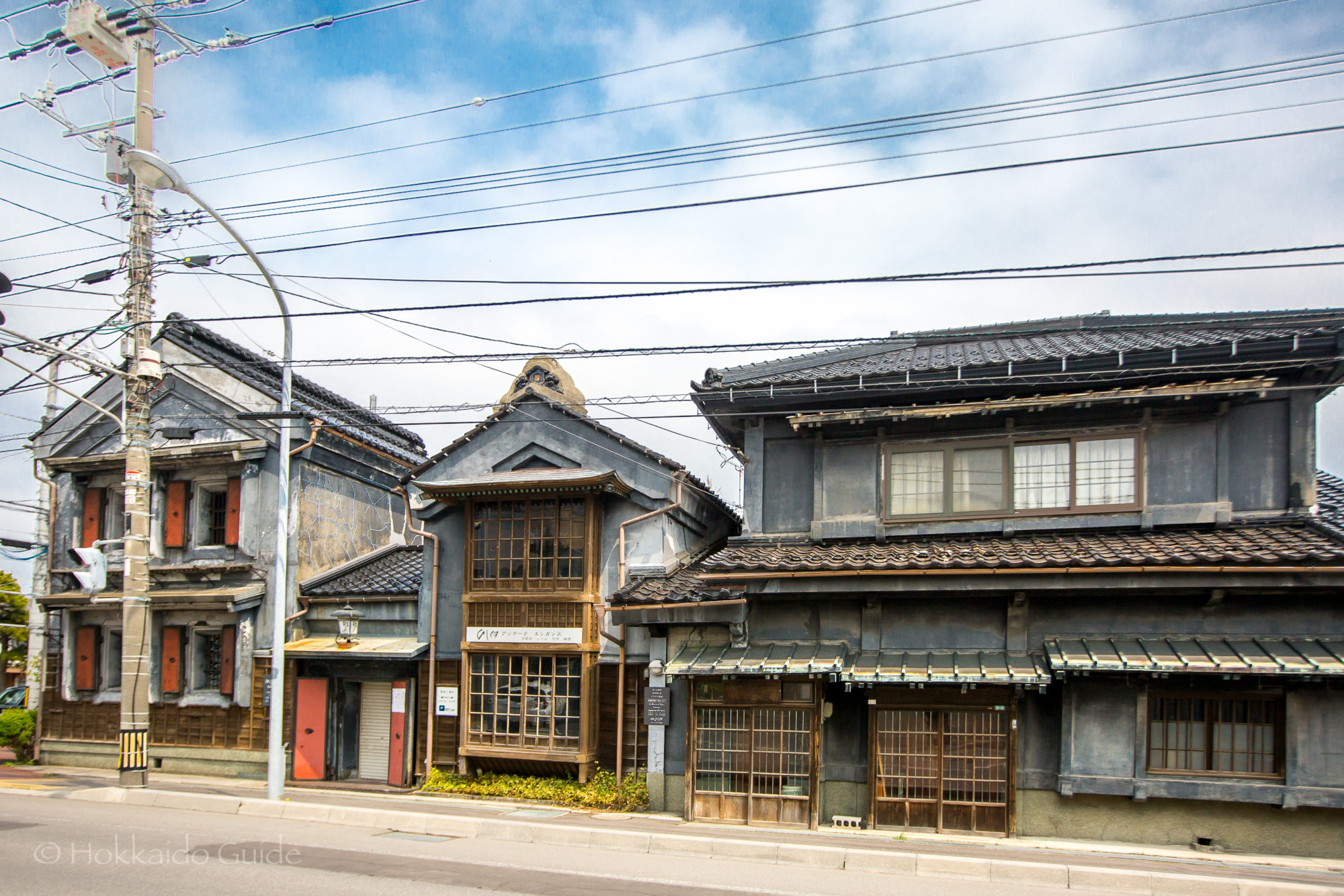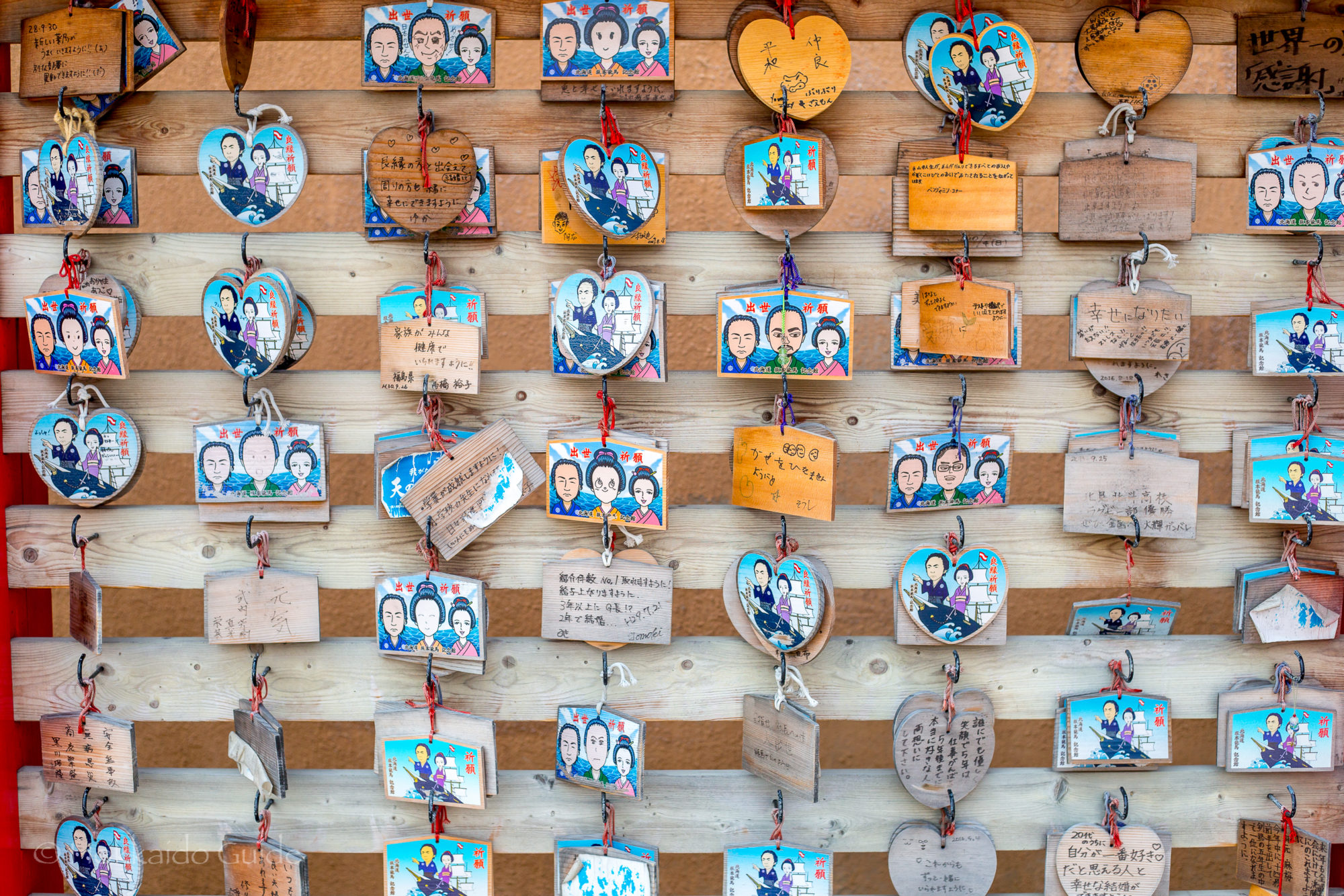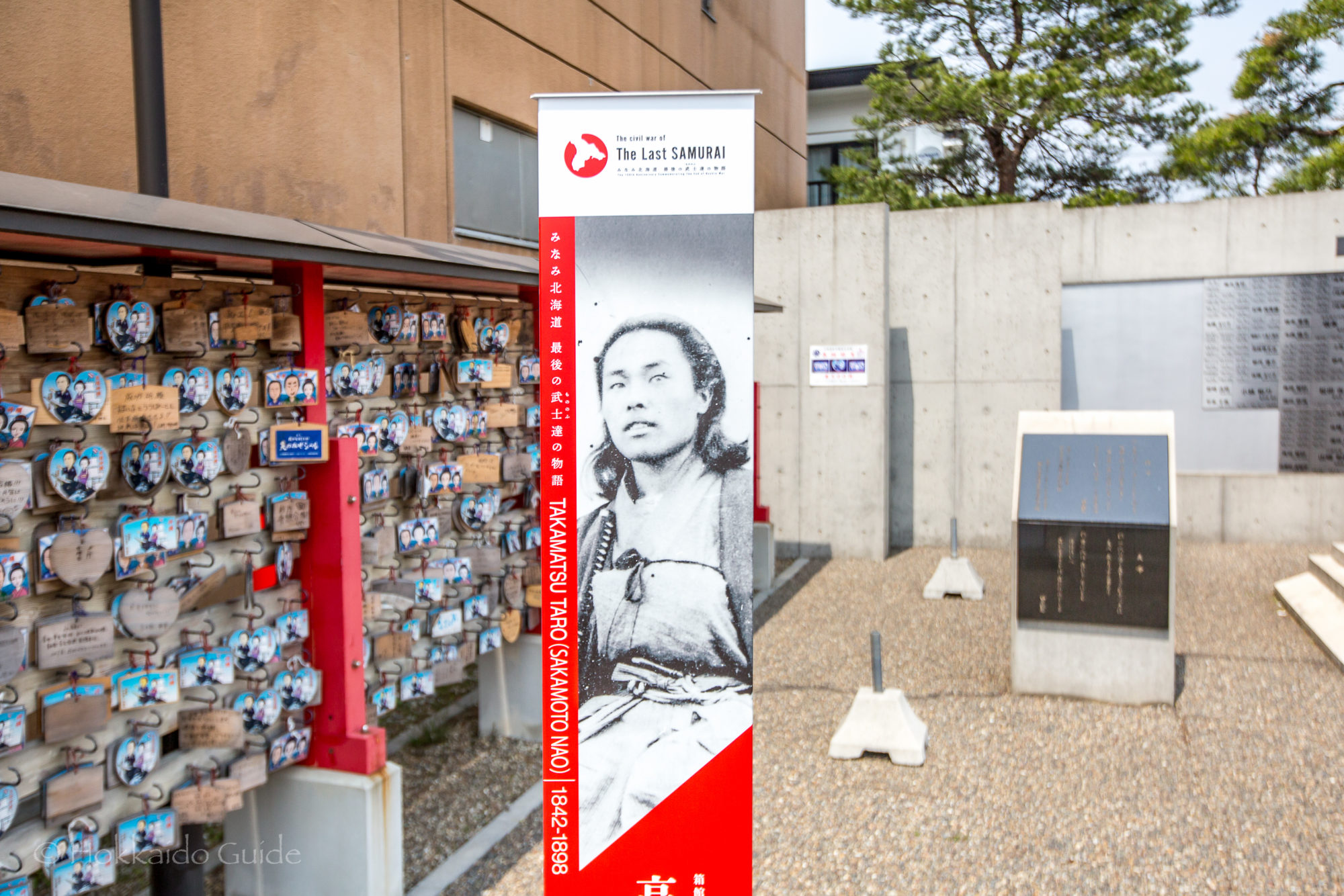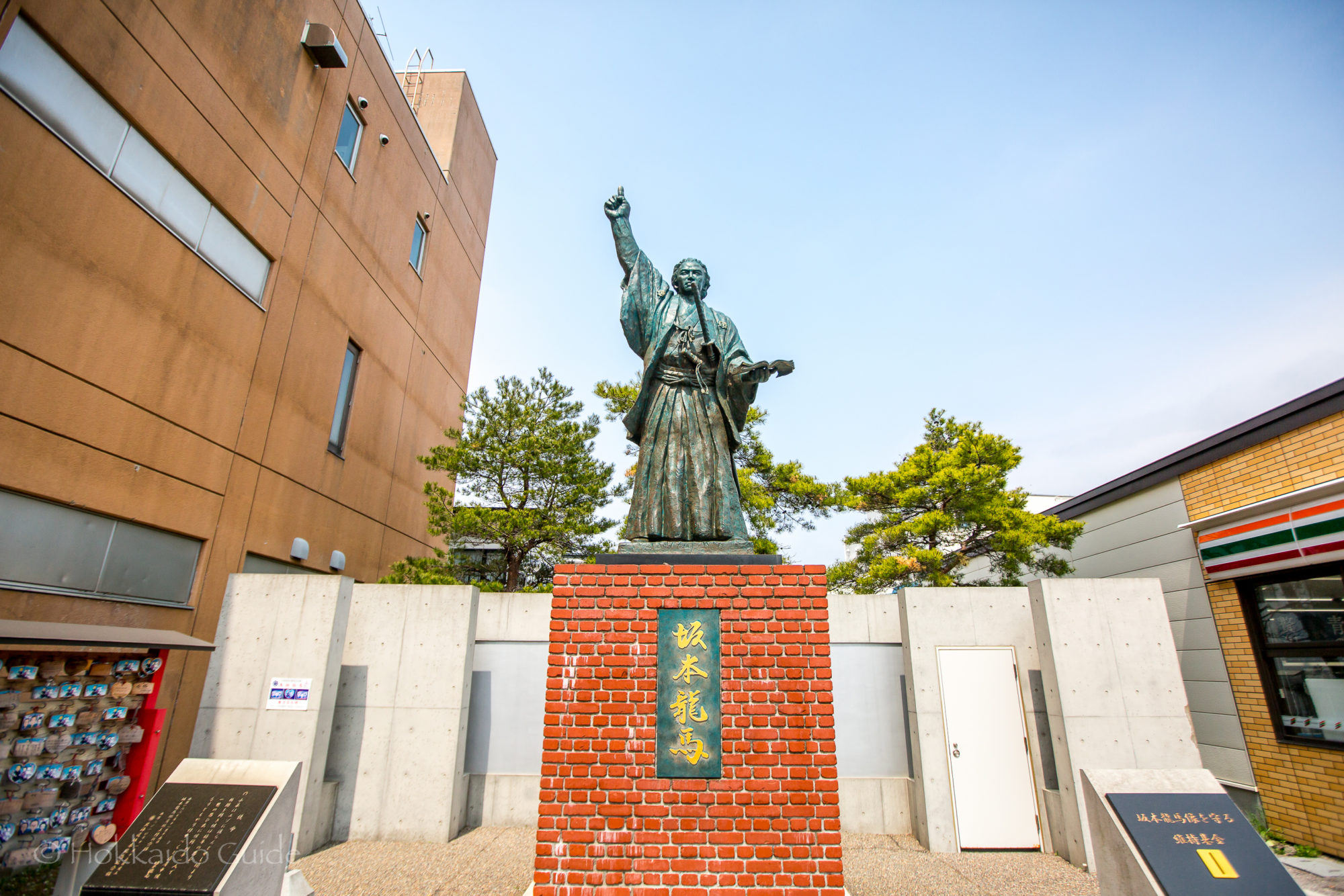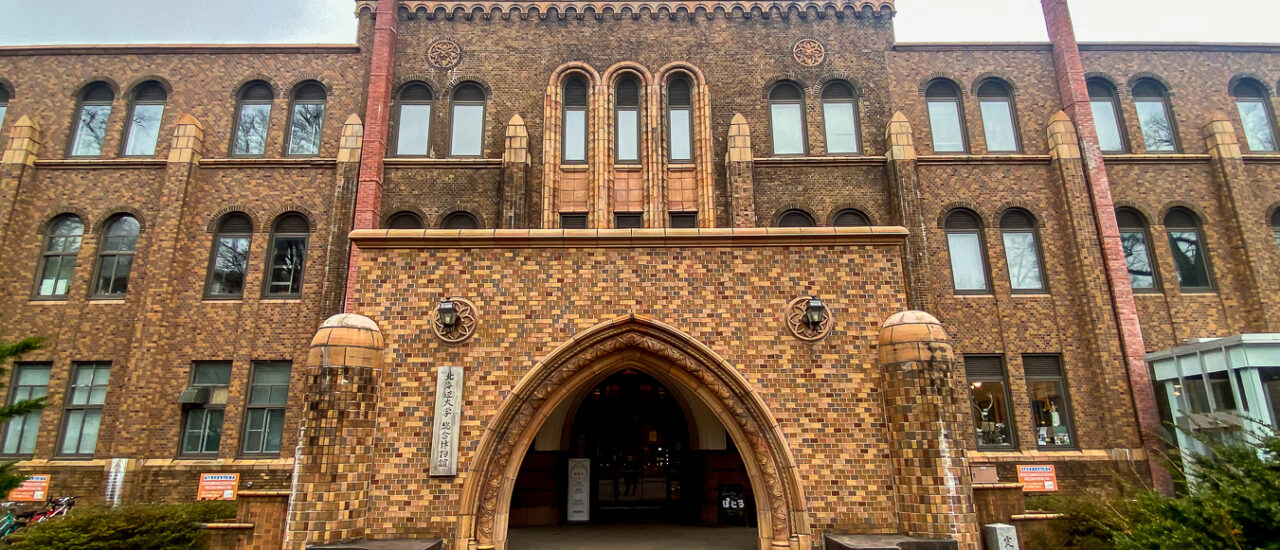
Category: Sightseeing
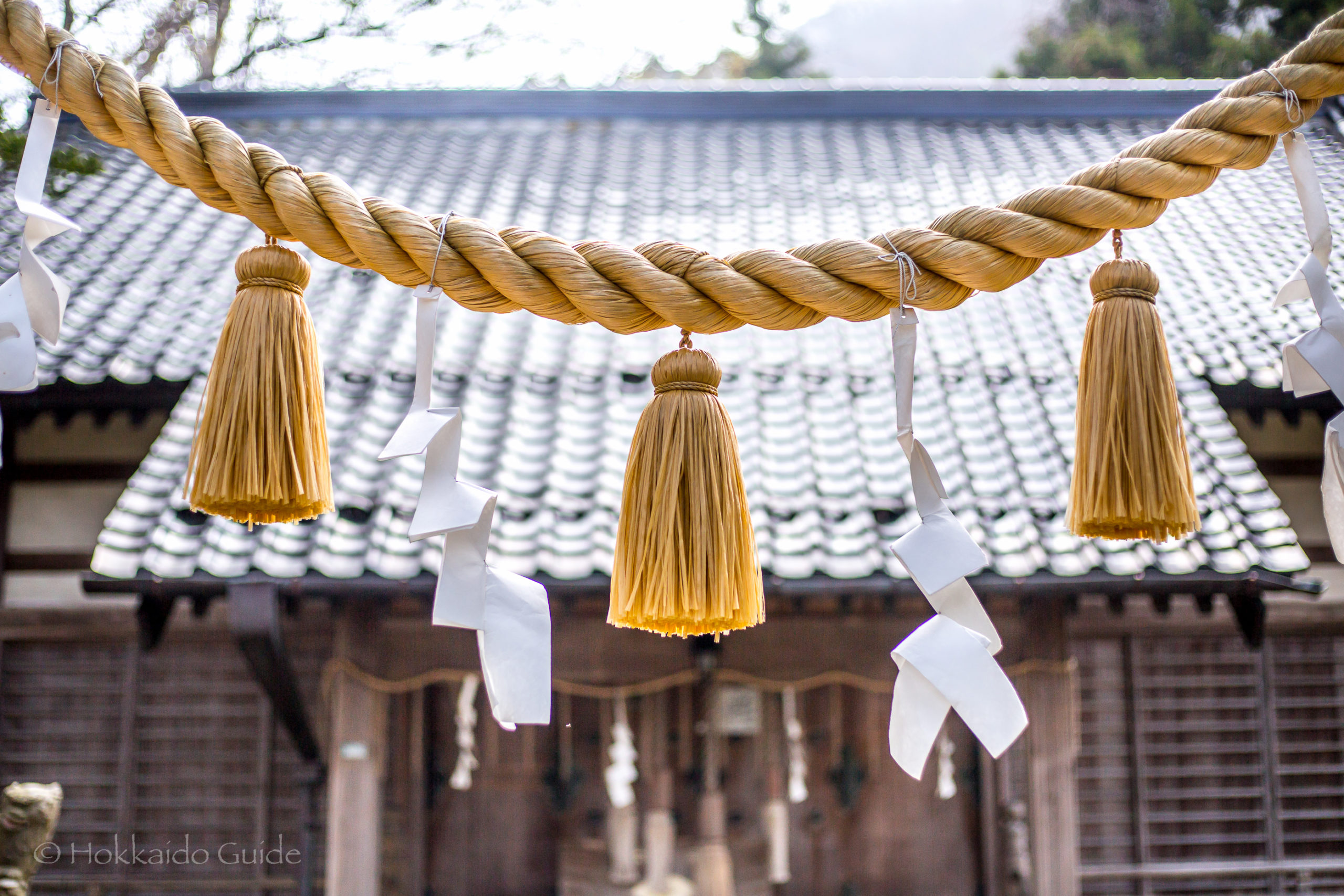
Sumiyoshi Shrine
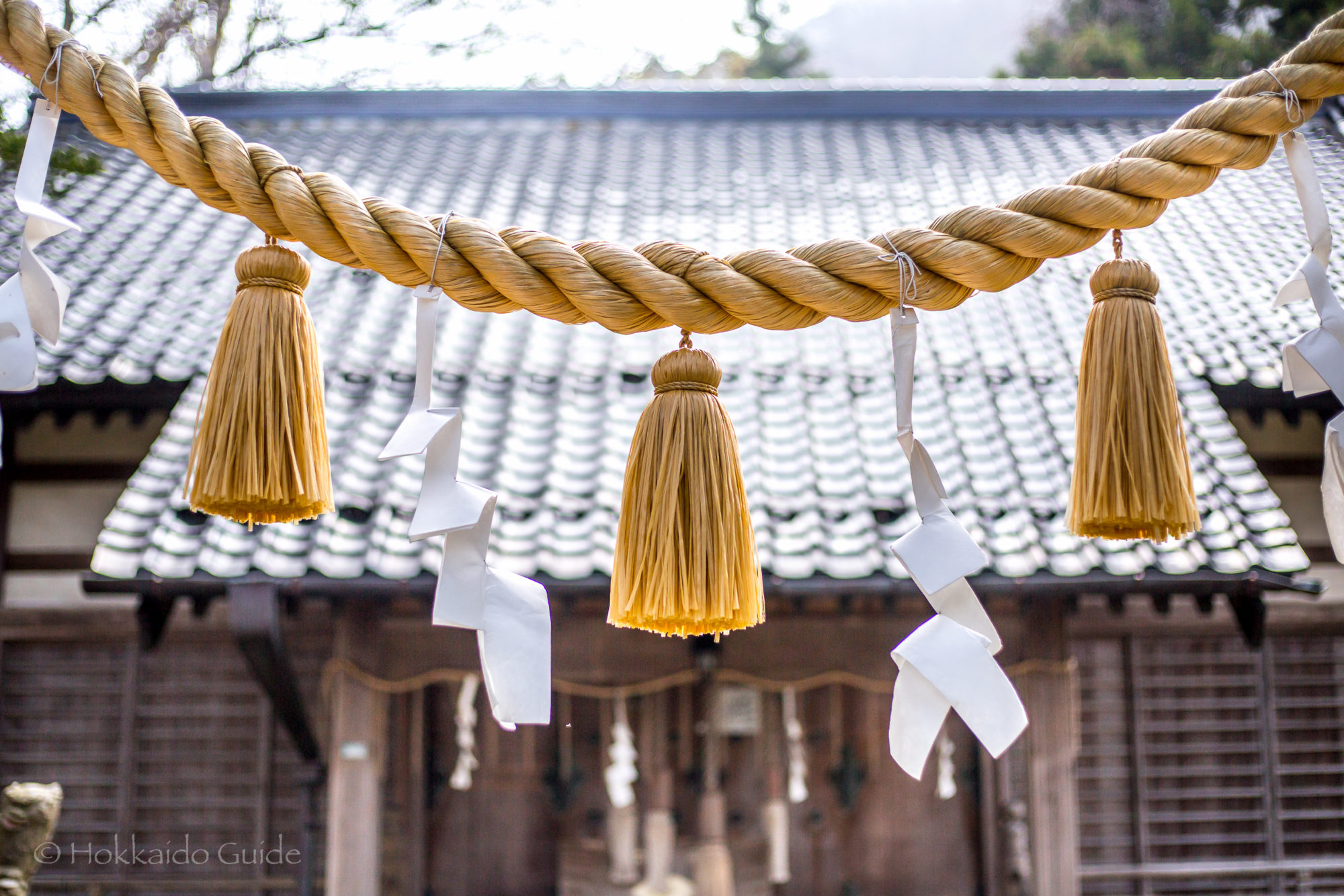
| Admission | Free |
| Opening Hours | - |
| Contact | 011-3822-2608 |
| Notes | Shinto shrine, no parking, cherry blossom area |
| Location / Getting There | Located in the southern part of Hakodate city near the base of Mt. Hakodate. There is street parking around if you are driving. For public transport, the closest station is Yachigashira tram station (seven stops from Hakodate tram station). From here it is a 9 minute walk south. 1-7 Sumiyoshicho, Hakodate, Hokkaido 040-0045 |
 Sumiyoshi Shrine is a shinto shrine in Hakodate. It is located on the cape near the base of Mt. Hakodate. It is not a far walk from the ocean, on the eastern side of the headland. The founding date of the shrine is unknown, however according to local stories passed down, the shrine was built during the Kamakura period, which was established in 1192 (bringing the start of the samurai). The shrine (known then as Miyoshi Shrine), was rebuilt 600 years later during the An’ei era. The shrine was then rebuilt again in its current location, after it was burnt down in a great fire in 1937. The shrine was renamed Sumiyoshi Shrine.
Sumiyoshi Shrine is a shinto shrine in Hakodate. It is located on the cape near the base of Mt. Hakodate. It is not a far walk from the ocean, on the eastern side of the headland. The founding date of the shrine is unknown, however according to local stories passed down, the shrine was built during the Kamakura period, which was established in 1192 (bringing the start of the samurai). The shrine (known then as Miyoshi Shrine), was rebuilt 600 years later during the An’ei era. The shrine was then rebuilt again in its current location, after it was burnt down in a great fire in 1937. The shrine was renamed Sumiyoshi Shrine.
 The shrine is best to visit during the cherry blossom season from mid April to early May. The road leading up to the shrine is flanked by dozens of beautiful cherry blossom trees. Unlike other cherry blossom areas, this road is not crowded. Once up the top of the hill, the grounds of Sumiyoshi Shrine are a nice place to wander around and enjoy the tranquility. This area also makes for a good place to get some photos. The shrine serves as a place of worship for 350 households and sees special events held throughout the year.
The shrine is best to visit during the cherry blossom season from mid April to early May. The road leading up to the shrine is flanked by dozens of beautiful cherry blossom trees. Unlike other cherry blossom areas, this road is not crowded. Once up the top of the hill, the grounds of Sumiyoshi Shrine are a nice place to wander around and enjoy the tranquility. This area also makes for a good place to get some photos. The shrine serves as a place of worship for 350 households and sees special events held throughout the year.

Ochinpo Shrine
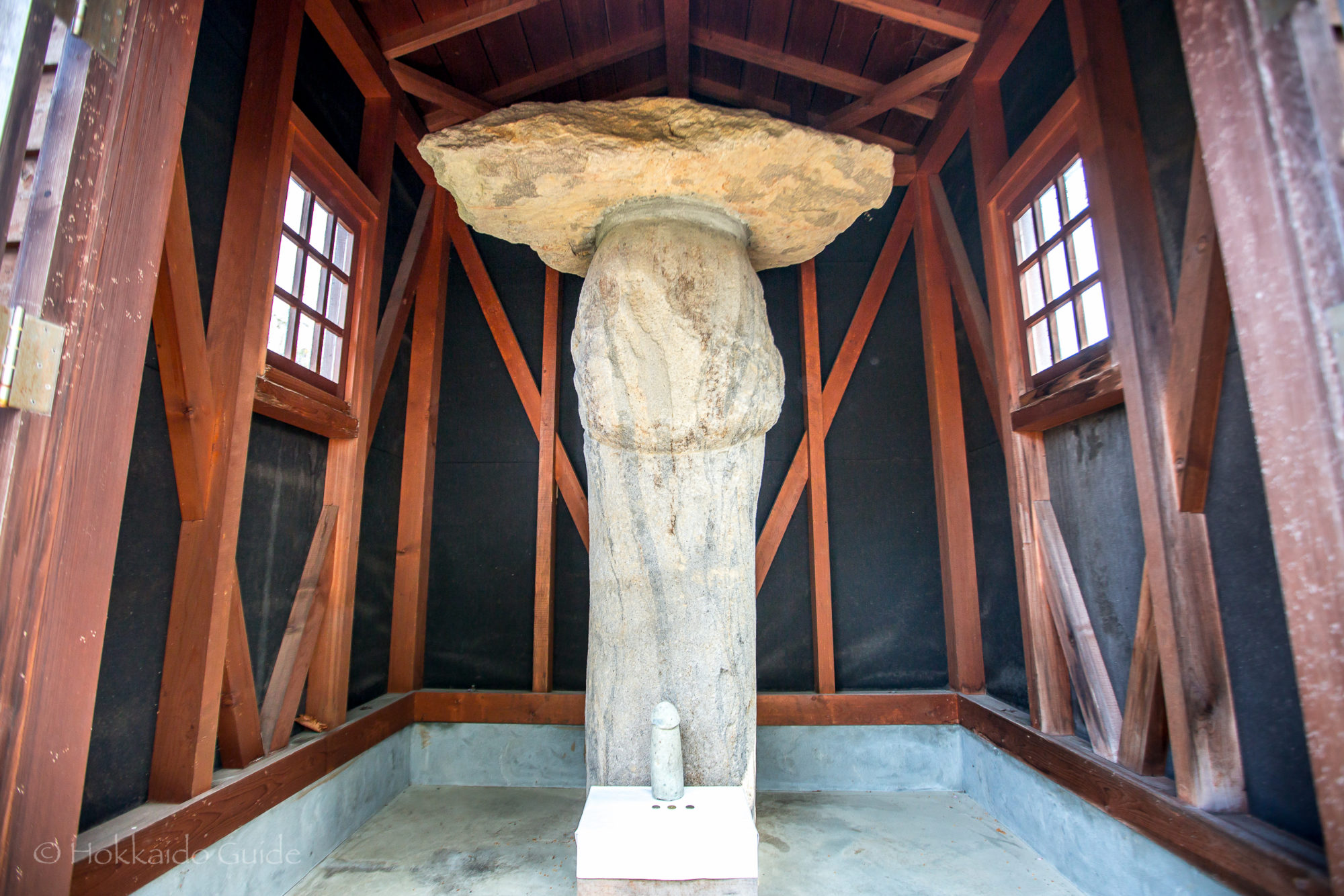
| Admission | Free |
| Opening Hours | - |
| Contact | - |
| Notes | Unique shrine, parking, part of Yachigashira Onsen |
| Location / Getting There | Located in the southern part of Hakodate city near the base of Mt. Hakodate. It is part Yachigashira Onsen. For public transport, the closest station is Yachigashira tram station (seven stops from Hakodate tram station). From here it is a 4 minute walk south towards Mt. Hakodate. 20-20 Yachigashiracho, Hakodate, Hokkaido 040-0046 |
 This may not be high on the must see things in Hakodate but it is certainly up there in terms of uniqueness. This appropriately named shrine can be found near the base of Mt. Hakodate. The Japanese word ‘Chinpo’ translates to ‘penis’ in English. Alternatively, the word Chinpō also translates into ‘rare treasure’. Whichever translation tickles your fancy, Ochinpo Shrine certainly makes for an interesting sightseeing spot. It is a small shrine, although the same can’t be said for the contents that are hidden within.
This may not be high on the must see things in Hakodate but it is certainly up there in terms of uniqueness. This appropriately named shrine can be found near the base of Mt. Hakodate. The Japanese word ‘Chinpo’ translates to ‘penis’ in English. Alternatively, the word Chinpō also translates into ‘rare treasure’. Whichever translation tickles your fancy, Ochinpo Shrine certainly makes for an interesting sightseeing spot. It is a small shrine, although the same can’t be said for the contents that are hidden within.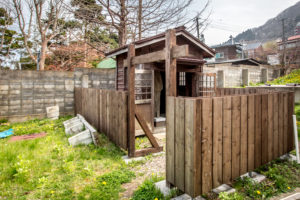 The large phallic stone here is a Dōsojin (a spirit or god) and is said to have energy to bring good luck. This particular Dōsojin brings fortune for childbirth, easy delivery, and child protection. The shrine can be found on the grounds of Yachigashira Onsen to the left of the building. The stone itself was excavated while the grounds were being leveled in 1952, and was placed where it was found. With plenty of parking and a spot to relax at the hot springs here, take a quick stroll and check out the Ochinpo Shrine.
The large phallic stone here is a Dōsojin (a spirit or god) and is said to have energy to bring good luck. This particular Dōsojin brings fortune for childbirth, easy delivery, and child protection. The shrine can be found on the grounds of Yachigashira Onsen to the left of the building. The stone itself was excavated while the grounds were being leveled in 1952, and was placed where it was found. With plenty of parking and a spot to relax at the hot springs here, take a quick stroll and check out the Ochinpo Shrine.
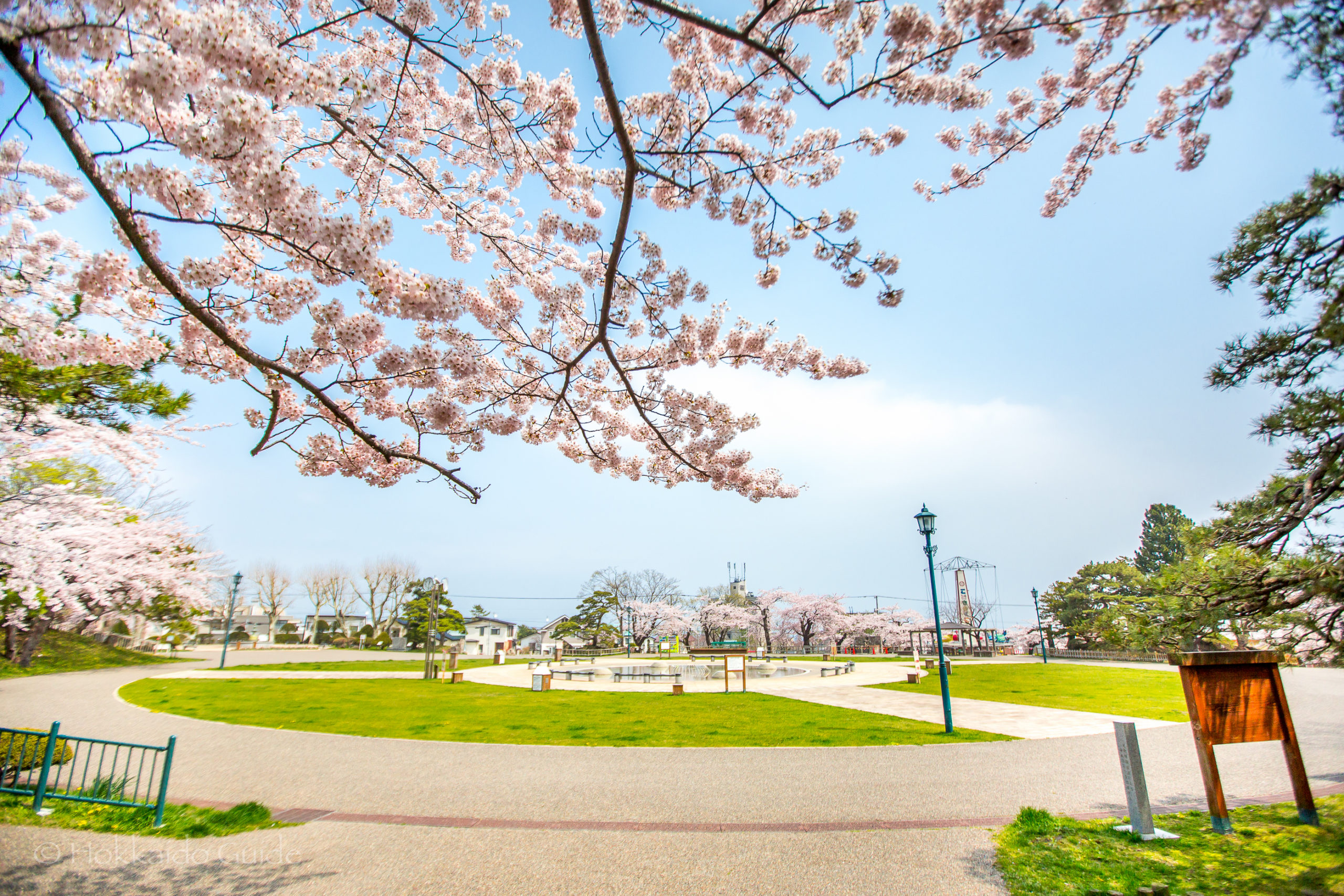
Hakodate Park
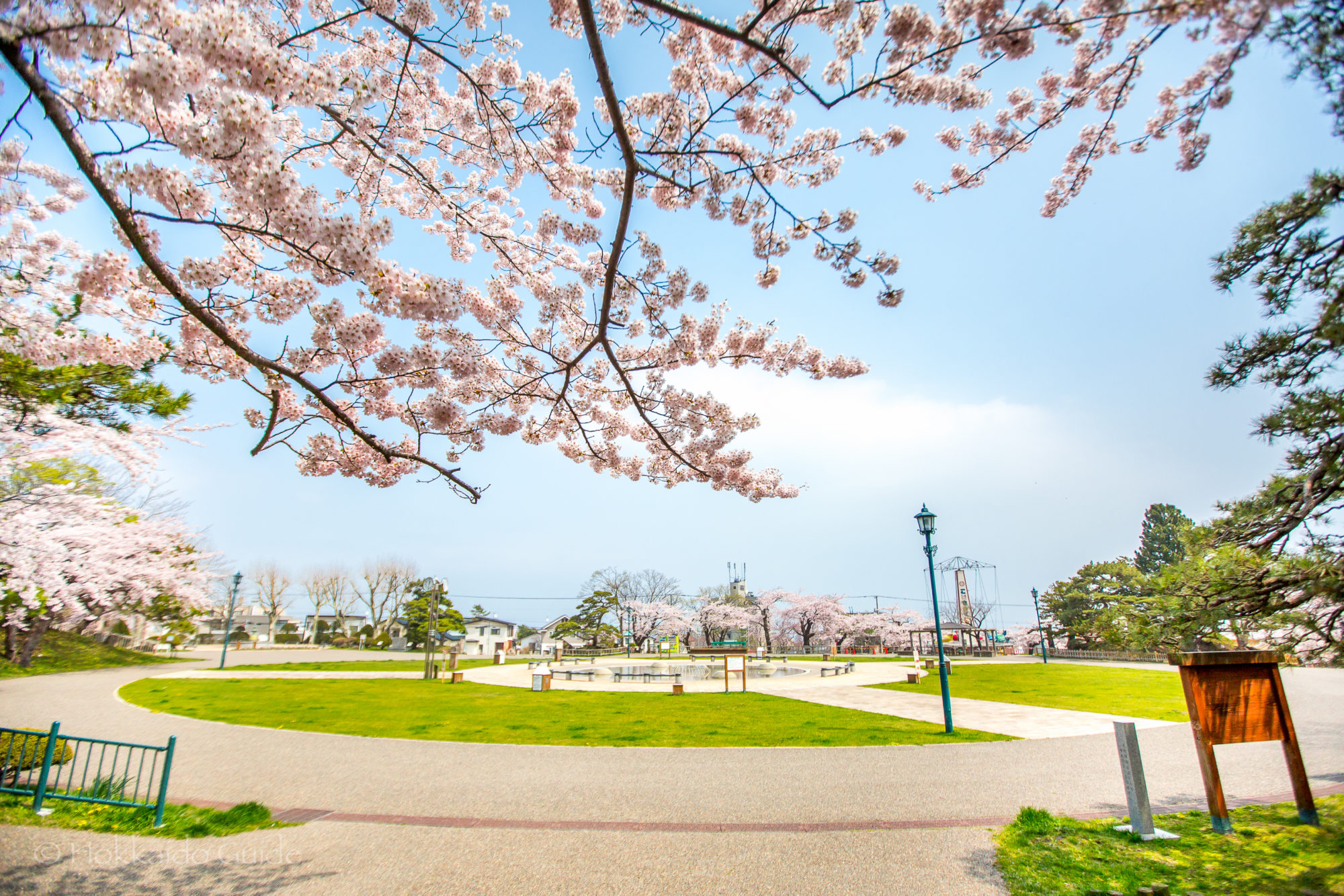
| Admission | Free |
| Opening Hours | 9:30 - 20:00 |
| Closed | - |
| Contact | 0138-23-3763 |
| Notes | Park, historical buildings, photography spot, kids playground, toilets, wheelchair access |
| Location / Getting There | Hakodate Park is located in the southern end of Hakodate City. It is near the base of Mt. Hakodate. Without a car, the best way to get to the park is to take the tram from Hakodate station and get off at Aoyagi-cho (¥230). It is a 2 minute walk from here. 3-15 Aoyagicho, Hakodate, Hokkaido 040-0044 |
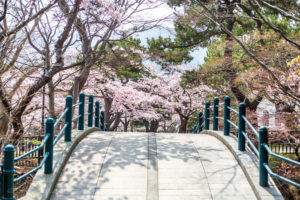 Hakodate Park is one of the gems in Hakodate. During the cherry blossom season from mid April to the beginning of May, it is covered in beautiful cherry blossoms and is one of the top spots in Hokkaido to enjoy these flowers. The blossoms here are stunning and a must see if you are in Hakodate at this time. The park was established in 1874, but was transformed into its current layout in 1879. The new park was proposed by Richard Eusden, the British Consul of Hakodate. The park has western elements to it and is home to many attractions and sightseeing spots.
Hakodate Park is one of the gems in Hakodate. During the cherry blossom season from mid April to the beginning of May, it is covered in beautiful cherry blossoms and is one of the top spots in Hokkaido to enjoy these flowers. The blossoms here are stunning and a must see if you are in Hakodate at this time. The park was established in 1874, but was transformed into its current layout in 1879. The new park was proposed by Richard Eusden, the British Consul of Hakodate. The park has western elements to it and is home to many attractions and sightseeing spots.
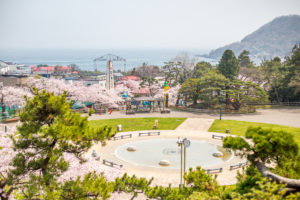 The park is hugely popular in the spring time due to the cherry blossoms. Throughout the park you can find many other attractions that are there throughout the year. There are several historic colonial buildings here. These include the Kyushiritsu Hakodate Library, and the Hakodate City Museum. For those with kids there is a small amusement park, and a small zoo down the bottom of the park. Other points of interest include the grave of a German consul, Ludwig Haber. He was a murdered in 1874 by an anti foreign Japanese national. And up near the top, overlooking the park is a stone carving plus a small pavilion.
The park is hugely popular in the spring time due to the cherry blossoms. Throughout the park you can find many other attractions that are there throughout the year. There are several historic colonial buildings here. These include the Kyushiritsu Hakodate Library, and the Hakodate City Museum. For those with kids there is a small amusement park, and a small zoo down the bottom of the park. Other points of interest include the grave of a German consul, Ludwig Haber. He was a murdered in 1874 by an anti foreign Japanese national. And up near the top, overlooking the park is a stone carving plus a small pavilion.
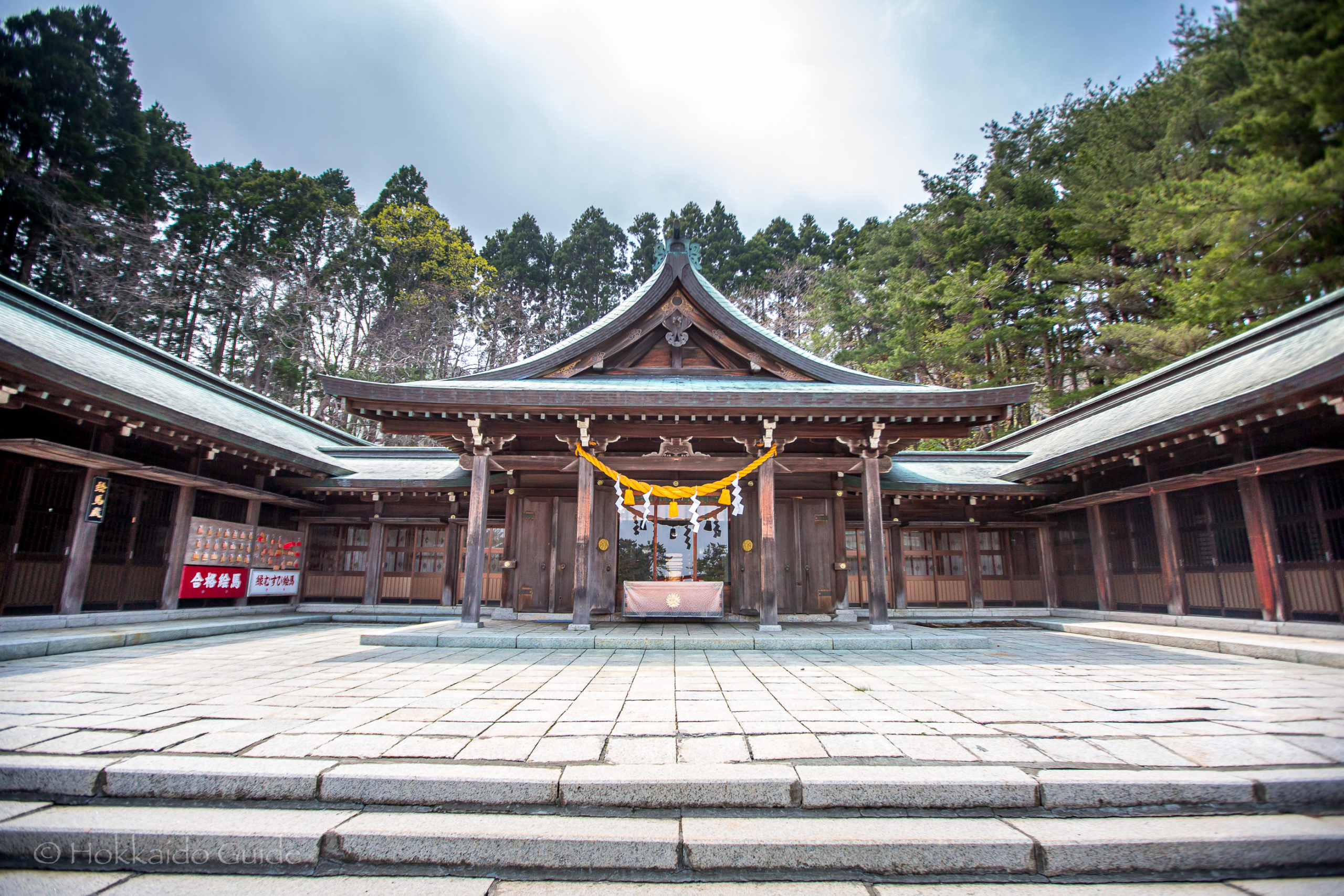
Hakodate Gokoku Shrine
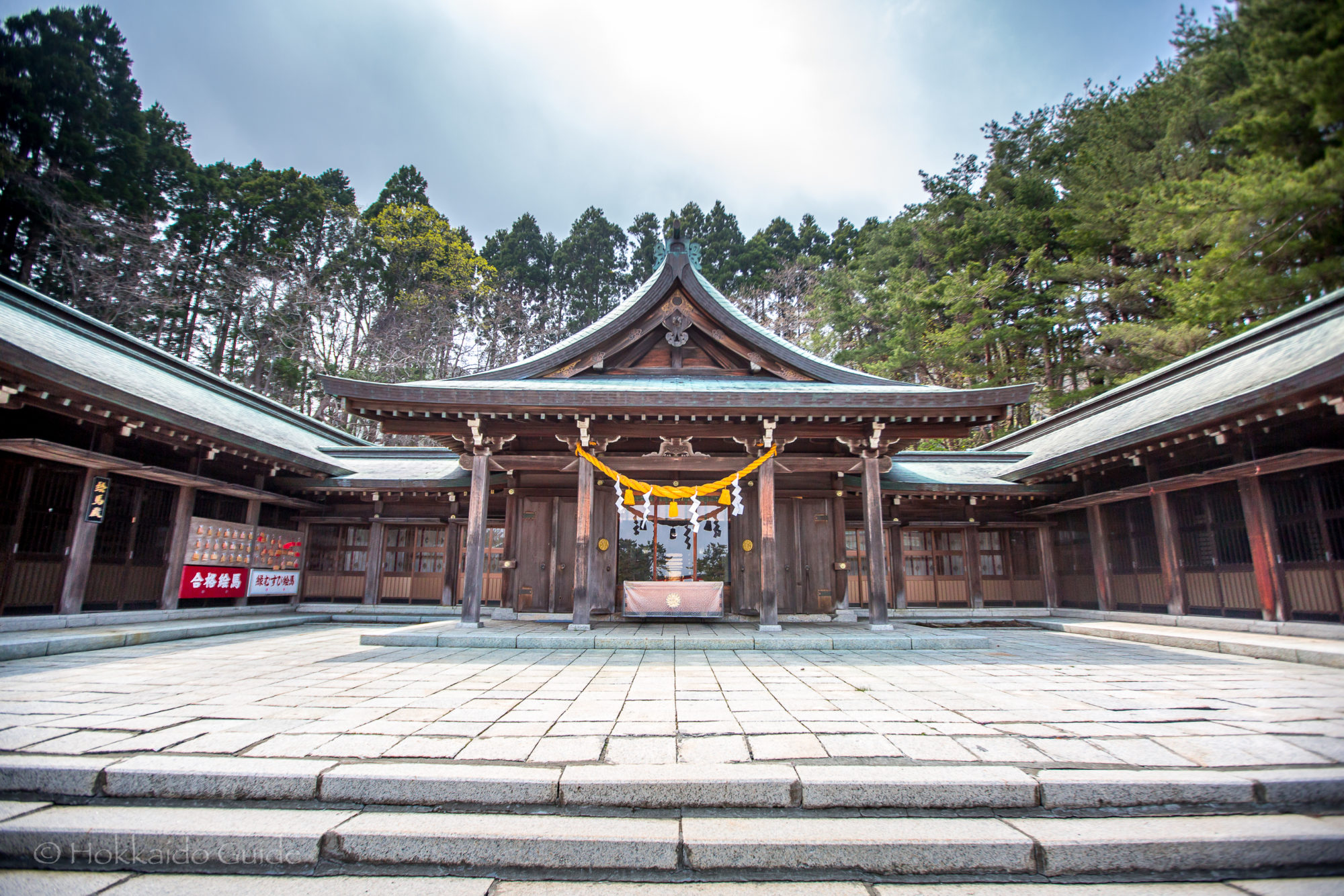
| Admission | Free |
| Opening Hours | 9:00 - 16:00 |
| Contact | |
| Notes | Shinto shrine, sightseeing spot, no parking, photography spot, views over Hakodate |
| Location / Getting There | Located in the southern part of Hakodate city at the base of Mt. Hakodate. The closest tram station is Aoyagi-cho station. From here, it is a 7 minute walk (uphill). On the way, it's nice to walk through the beautiful Hakodate Park, before getting the shrine. 9-23 Aoyagicho, Hakodate, Hokkaido 040-0044 |
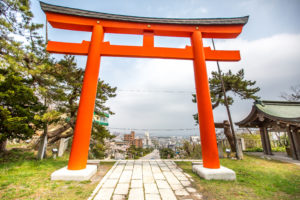 Hakodate Gokoku Shrine was originally built in 1869. After the battle of Hakodate it was constructed as a tribute to the imperial soldiers who had lost their lives in battle. The Battle of Hakodate during the Meiji Restoration, was between the government forces, who wanted to restore the emperor to the throne, in place of the samurai clans who had ruled Japan for hundreds of years. The shrine area is also dedicated to soldiers who died in other major battles. You can find monuments around the grounds. The shrine is on a slope that leads up to Mt. Hakodate. It is a bit of a walk but the views from the bright red Torii Gate overlooking the city are well worth it.
Hakodate Gokoku Shrine was originally built in 1869. After the battle of Hakodate it was constructed as a tribute to the imperial soldiers who had lost their lives in battle. The Battle of Hakodate during the Meiji Restoration, was between the government forces, who wanted to restore the emperor to the throne, in place of the samurai clans who had ruled Japan for hundreds of years. The shrine area is also dedicated to soldiers who died in other major battles. You can find monuments around the grounds. The shrine is on a slope that leads up to Mt. Hakodate. It is a bit of a walk but the views from the bright red Torii Gate overlooking the city are well worth it.
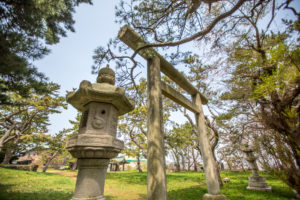 Once through the red Torii, you will find yourself inside the large courtyard of Hakodate Gokoku Shrine. To the left hand side is the hand washing area, and to the right is Gokoku Shrine. Here you can purchase amulets and souvenirs to take home. There is also a small stone owl perched out the front, on three stones. People like to touch this little owl and ask for good luck (or you can buy an owl talisman at the shop). Around the courtyard are stone plinths also dedicated to fallen warriors past. On the south east side is another large stone torii and the road from here leads to Hakodate Park, which is a must visit, especially during the cherry blossom season at the end of April.
Once through the red Torii, you will find yourself inside the large courtyard of Hakodate Gokoku Shrine. To the left hand side is the hand washing area, and to the right is Gokoku Shrine. Here you can purchase amulets and souvenirs to take home. There is also a small stone owl perched out the front, on three stones. People like to touch this little owl and ask for good luck (or you can buy an owl talisman at the shop). Around the courtyard are stone plinths also dedicated to fallen warriors past. On the south east side is another large stone torii and the road from here leads to Hakodate Park, which is a must visit, especially during the cherry blossom season at the end of April.
| January 1st | New Year's Day festival |
| January 7th | Donto-yaki |
| February 3rd | Prayer festival |
| May 10th - 12th | Annual festival |
| August 15th | End of War Peace Memorial Festival |
| Mid-October to the end of November | Shichigosan pilgrimage |
| November 23rd | Niiname-no-Matsuri |
| December 31st | Oharae ceremony |
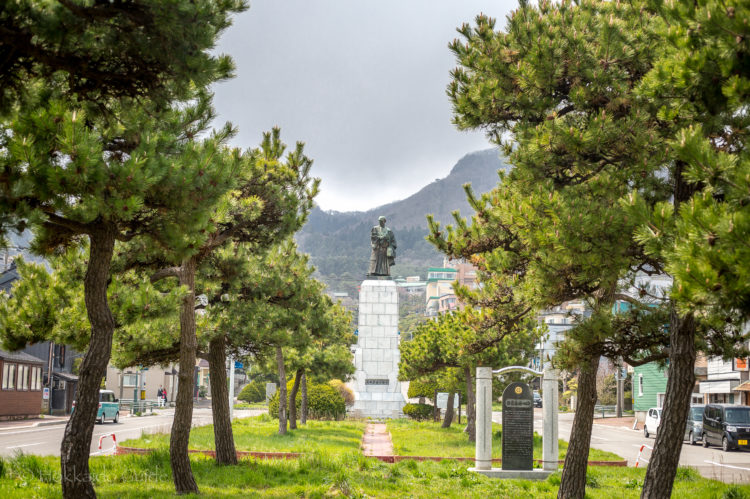
Takadaya Kahei & Historical Monument
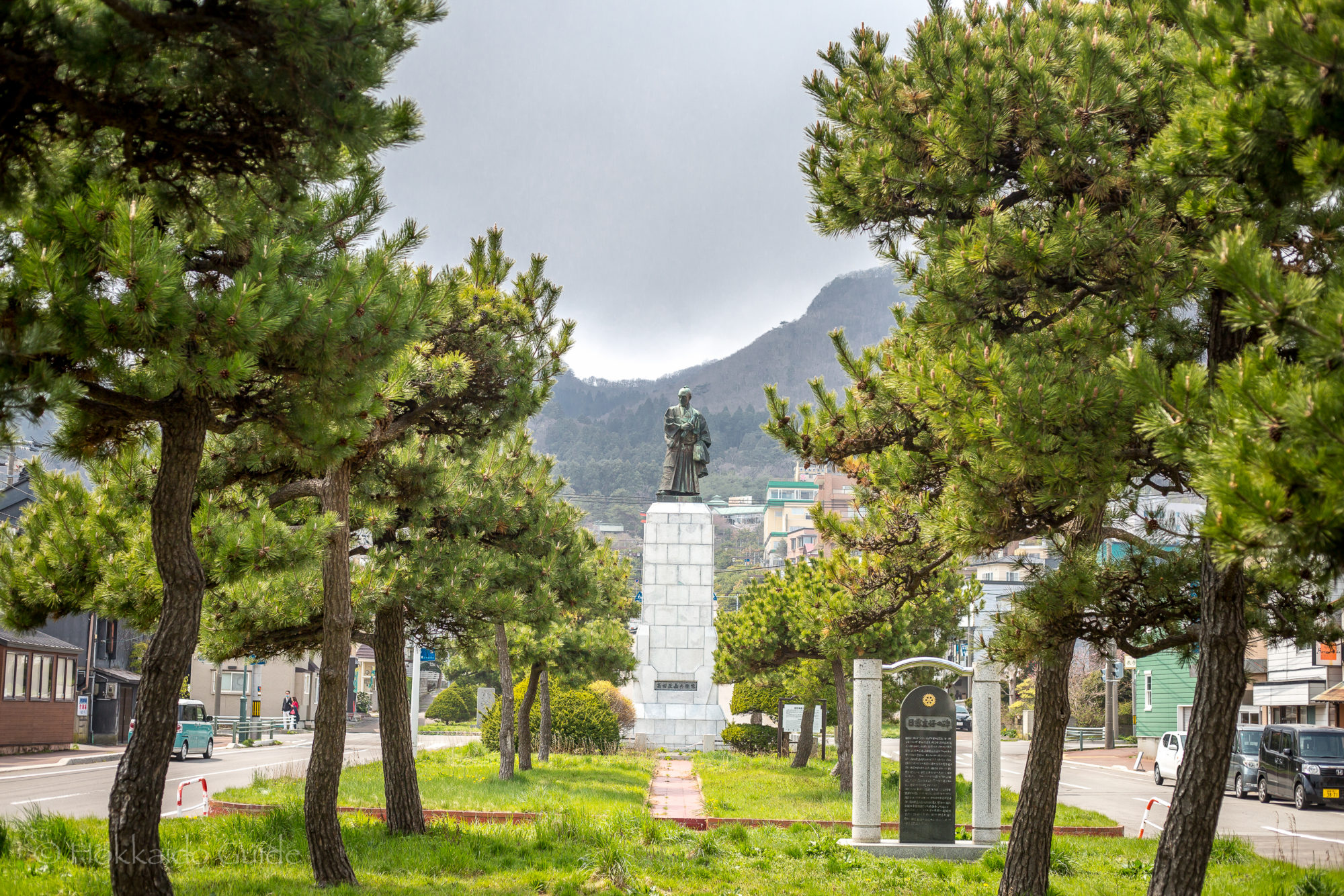
| Admission | Free |
| Opening Hours | Open 24 hours |
| Closed | - |
| Notes | Historical landmark, sightseeing spot, small park and walkway, no parking |
| Location / Getting There | Located in the central city of Hakodate. The closest tram station is Horai-Cho Station. It is only a 2 minute walk from here. The park is at the bottom of the hill that leads up to Gokoku Shrine. 〒040-0034 Hokkaido, Hakodate, Omoricho, 22, Unnamed Road |
 In Hakodate, at the base of the slope that leads up to Mt. Hakodate there is a narrow green space that runs for about five blocks. This green space is a really pleasant area to take a stroll along. On both sides the park is flanked by some nice old buildings. The green space is home to various statues and there is a historical site here as well. The park is particularly nice during the cherry blossom season. The main statue that overlooks the space is of Takadaya Kahei. Takadaya Kahei was born in 1769 and came to Hakodate when he was 28. He was famous for developing the area and creating trade routes and fisheries. The statue was erected in 1958 to commemorate the centenary of the port of Hakodate opening.
In Hakodate, at the base of the slope that leads up to Mt. Hakodate there is a narrow green space that runs for about five blocks. This green space is a really pleasant area to take a stroll along. On both sides the park is flanked by some nice old buildings. The green space is home to various statues and there is a historical site here as well. The park is particularly nice during the cherry blossom season. The main statue that overlooks the space is of Takadaya Kahei. Takadaya Kahei was born in 1769 and came to Hakodate when he was 28. He was famous for developing the area and creating trade routes and fisheries. The statue was erected in 1958 to commemorate the centenary of the port of Hakodate opening.
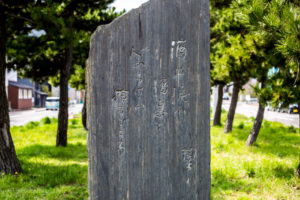 The historical site that can be observed halfway along the park, is the place where Takadaya Kahei’s house once existed. He owned extensive property in Hakodate and there is a small plaque displaying this. Also in this park, you can find the poem monument of Takahashi Kikutaro. The monument here was built in 1961 by his fans, and inscribed on the monument is the lyrics to one of his most famous songs. Takahashi Kikutaro was a prominent song writer and had written lyrics to over 3,000 songs by the time of his death in 1970. This green space has a pleasant small path running through it and it is a great spot to stroll through.
The historical site that can be observed halfway along the park, is the place where Takadaya Kahei’s house once existed. He owned extensive property in Hakodate and there is a small plaque displaying this. Also in this park, you can find the poem monument of Takahashi Kikutaro. The monument here was built in 1961 by his fans, and inscribed on the monument is the lyrics to one of his most famous songs. Takahashi Kikutaro was a prominent song writer and had written lyrics to over 3,000 songs by the time of his death in 1970. This green space has a pleasant small path running through it and it is a great spot to stroll through.
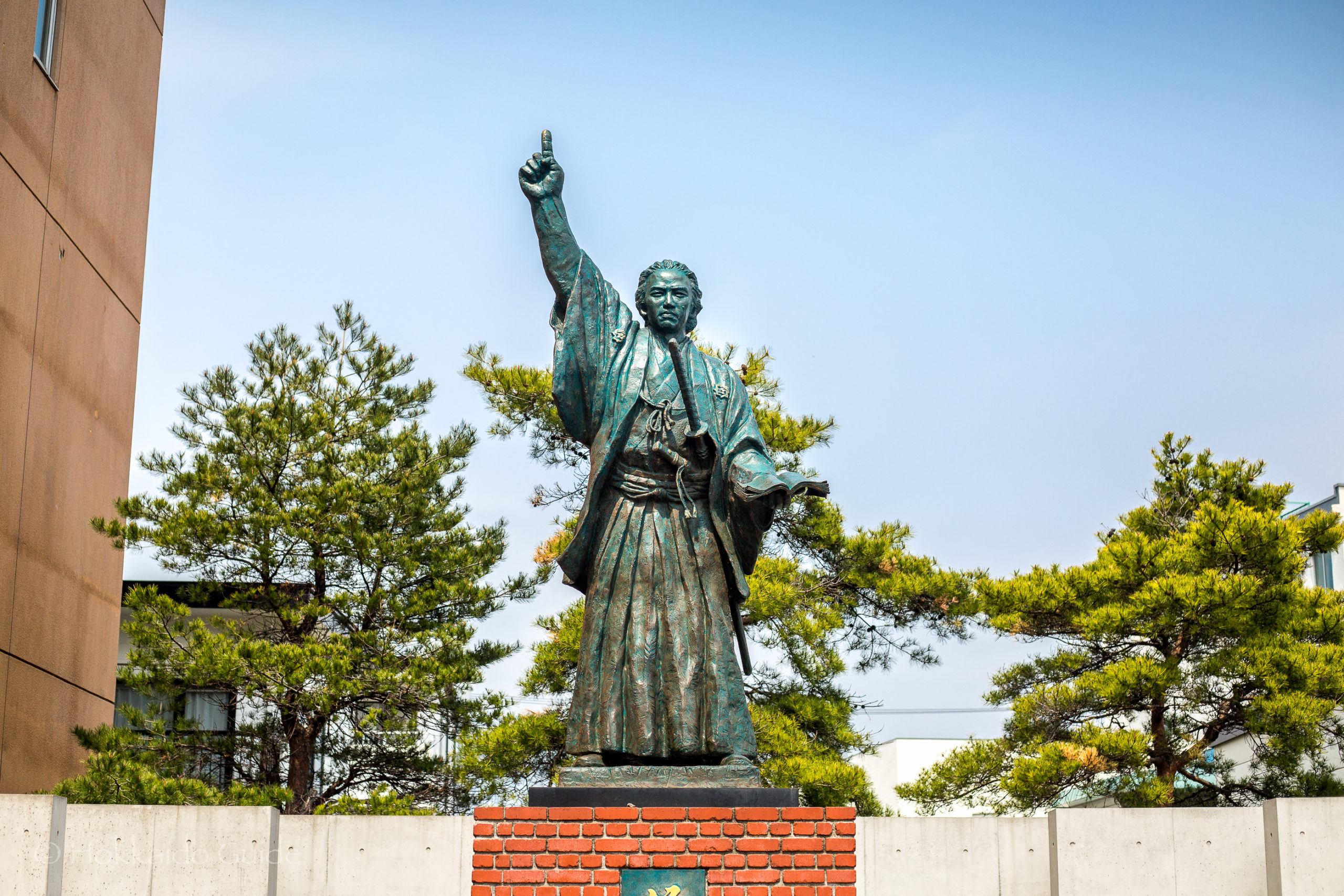
Sakamoto Ryoma Museum
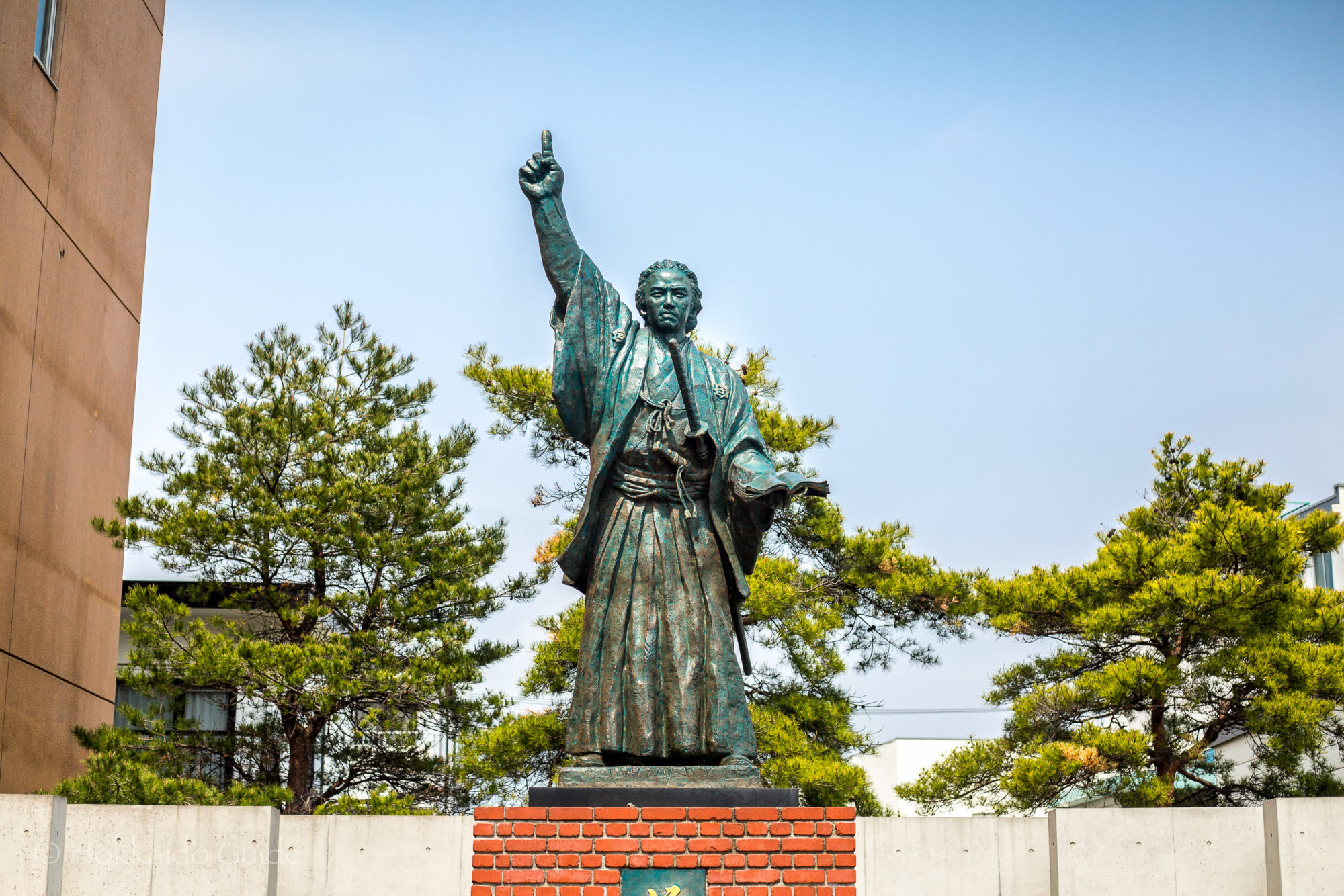
| Admission | ¥800 Adults ¥300 Children |
| Opening Hours | 8:00 - 18:00 |
| Closed | - |
| Contact | 011-3824-1115 http://www.ryoma1115.com/ ryoma1115@amail.plala.or.jp |
| Notes | Historical museum, wheelchair access |
| Location / Getting There | Central Hakodate. Take the tram from 'Hakodate Eki Mae' to 'Jujigai' station (3 stops and costs ¥200). The museum is right next to the Jujigai tram stop. Alternatively, it's a 17 minute walk from Hakodate station. 8-6 Suehirocho, Hakodate, Hokkaido 040-0053 |
 Sakamoto Ryoma was born on 3 January 1836, and grew up to be a master swordsman and lower class samurai who opposed the Tokugawa Shogunate. He was against the modernization and westernization of Japan, though he was a visionary who dreamt of an independent Japan without feudalism, inspired by the example of the United States where “all men are created equal”. He is also regarded as the “father of the Imperial Japanese Navy”. He was a prominent figure before his assassination on 10 December 1867 at a local tavern near Kyoto.
Sakamoto Ryoma was born on 3 January 1836, and grew up to be a master swordsman and lower class samurai who opposed the Tokugawa Shogunate. He was against the modernization and westernization of Japan, though he was a visionary who dreamt of an independent Japan without feudalism, inspired by the example of the United States where “all men are created equal”. He is also regarded as the “father of the Imperial Japanese Navy”. He was a prominent figure before his assassination on 10 December 1867 at a local tavern near Kyoto.
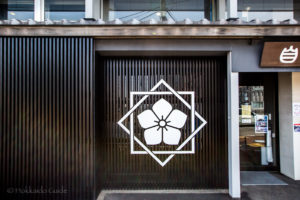 The museum in Hakodate was constructed in 2009 to honor his life. The island of Hokkaido, then known as ‘Ezo’ was a new land for the samurai to relocate to and become farmers. Across from the museum you can find a large statue of Sakamoto Ryoma. There is information about his life plus other prominent samurai of the era. These include Okamoto Kensuke who explored the islands of Sakhalin alone, and Santo Ichiro who was interested in cultivating Ezo. For a look at a piece of Japanese history, Sakamoto Ryoma museum is a good place to visit.
The museum in Hakodate was constructed in 2009 to honor his life. The island of Hokkaido, then known as ‘Ezo’ was a new land for the samurai to relocate to and become farmers. Across from the museum you can find a large statue of Sakamoto Ryoma. There is information about his life plus other prominent samurai of the era. These include Okamoto Kensuke who explored the islands of Sakhalin alone, and Santo Ichiro who was interested in cultivating Ezo. For a look at a piece of Japanese history, Sakamoto Ryoma museum is a good place to visit.

